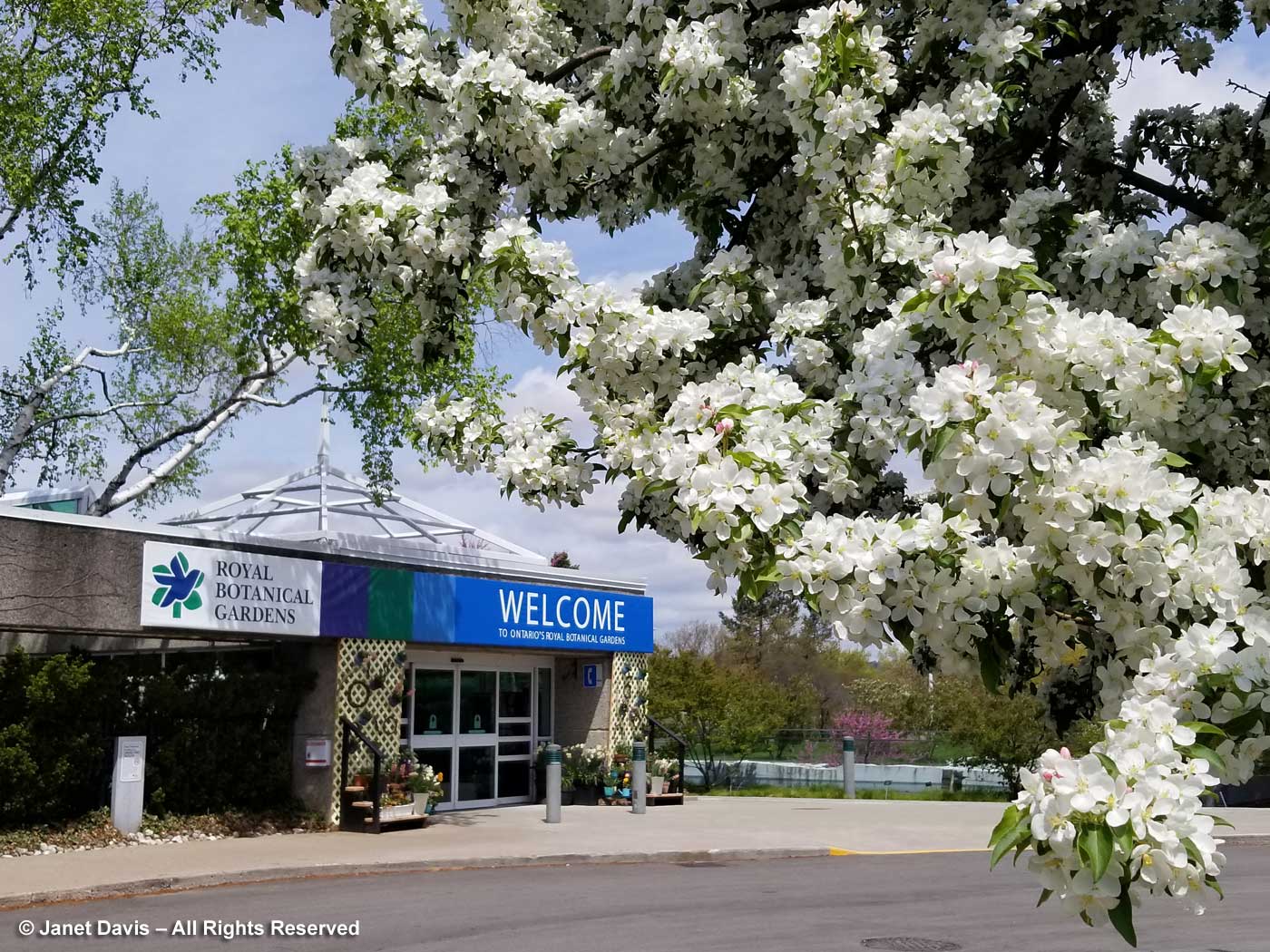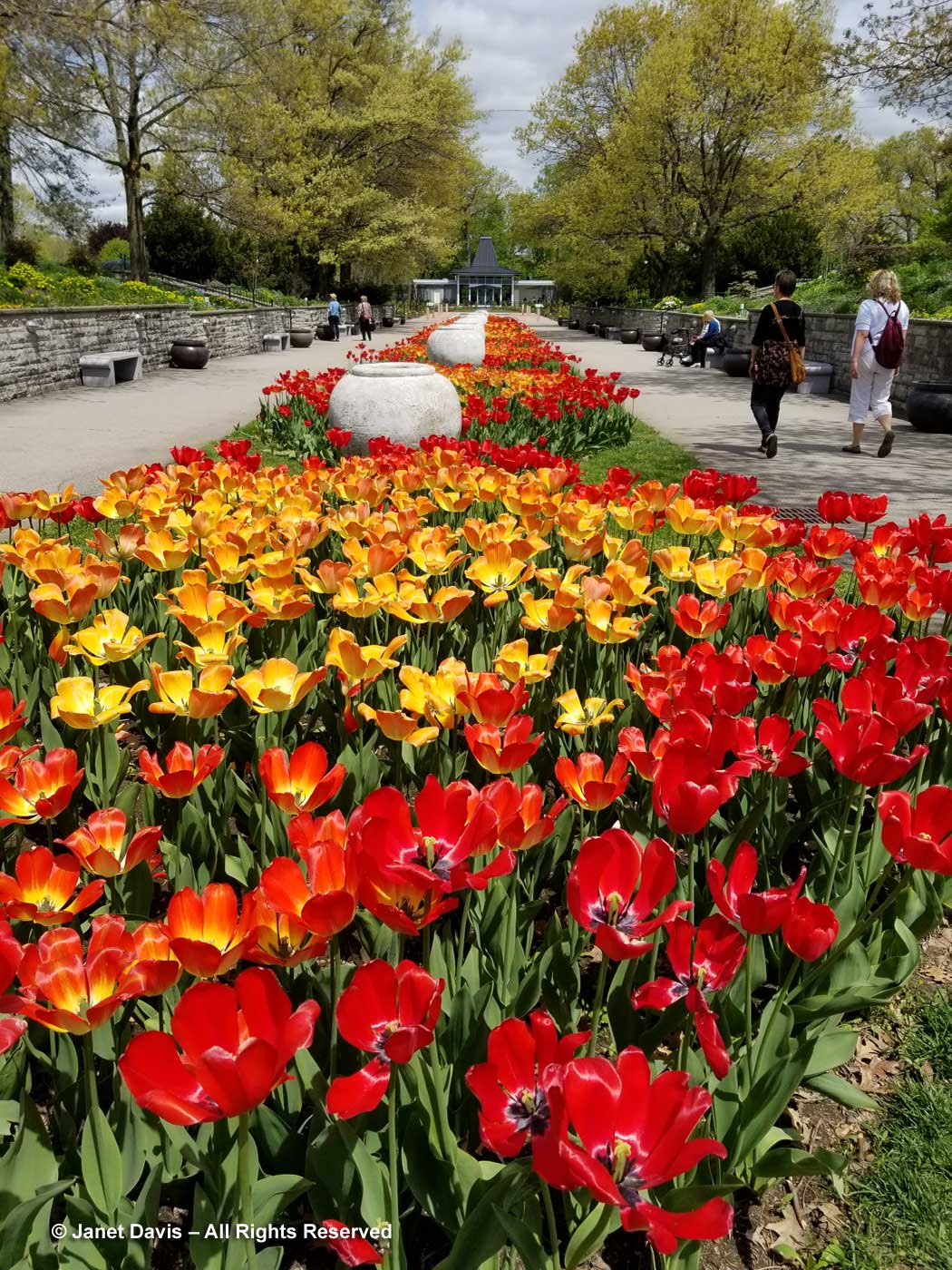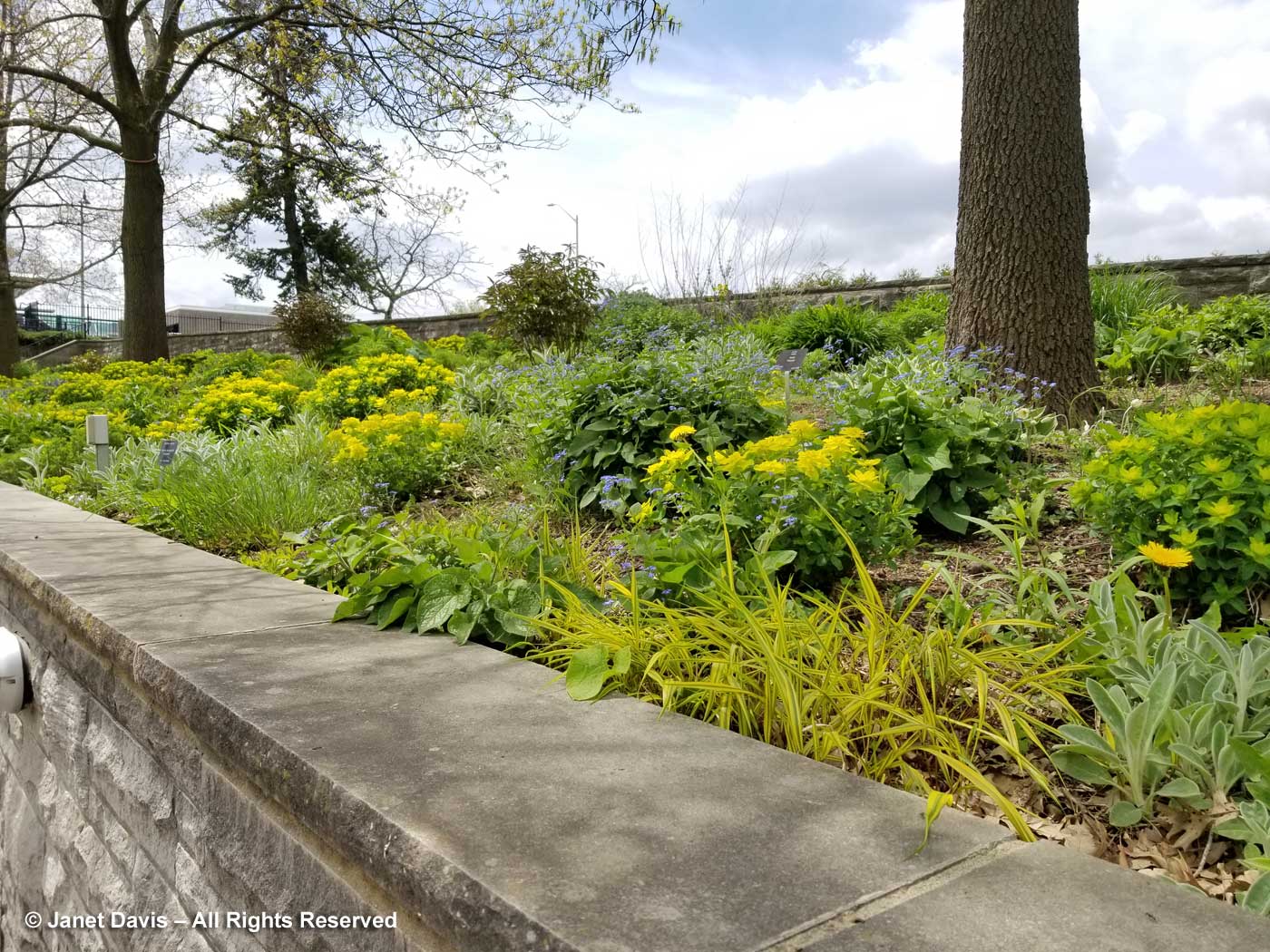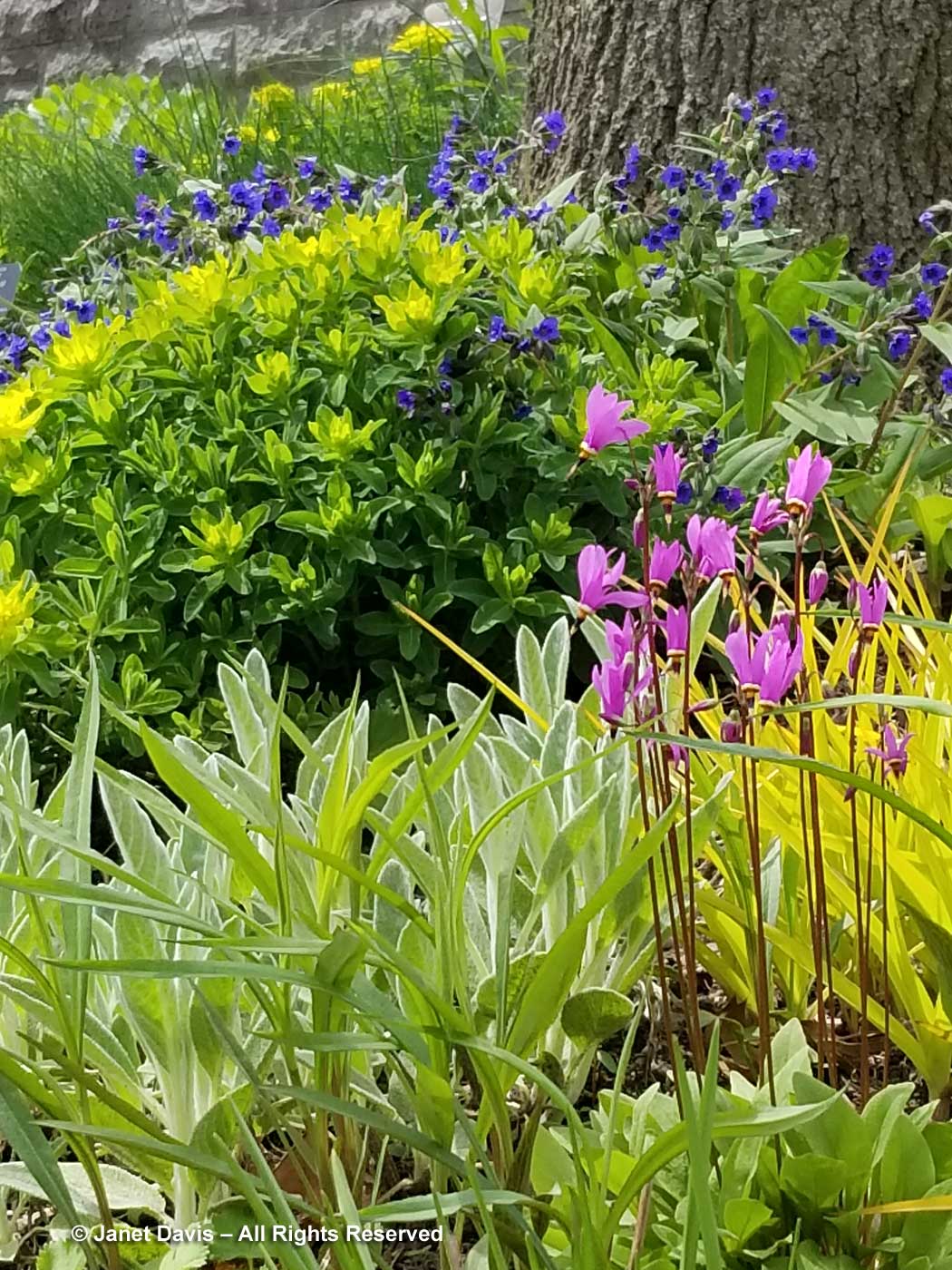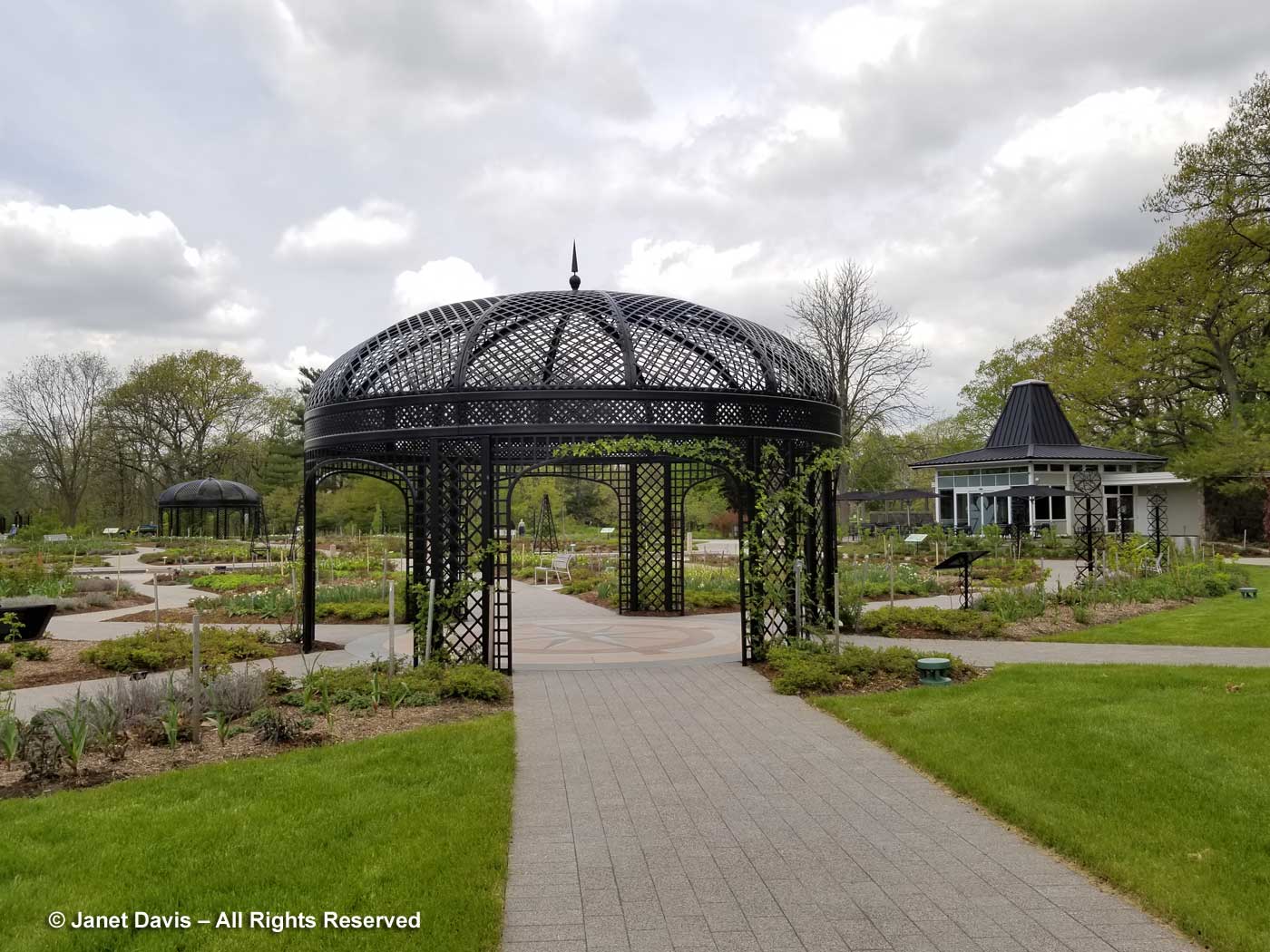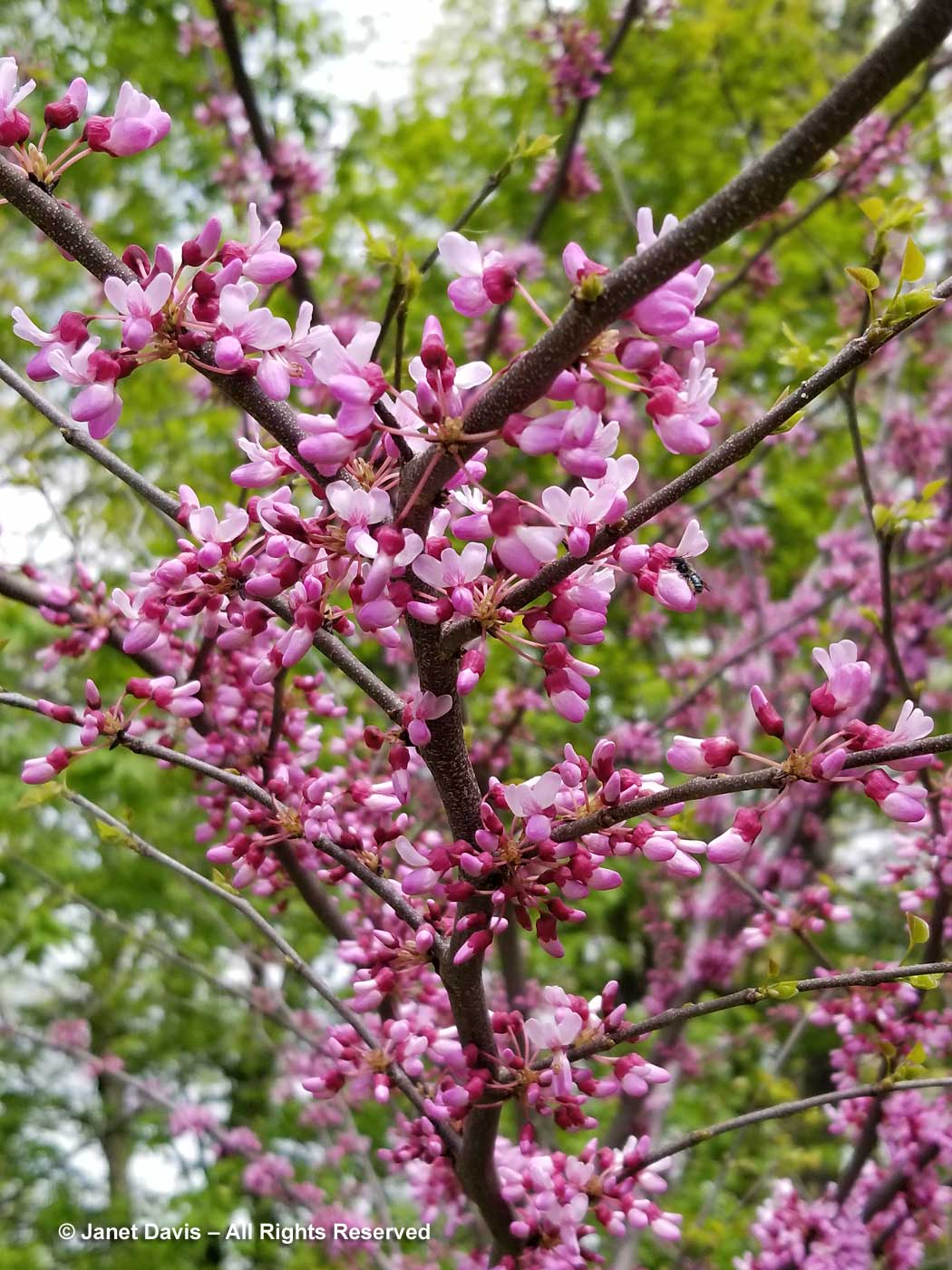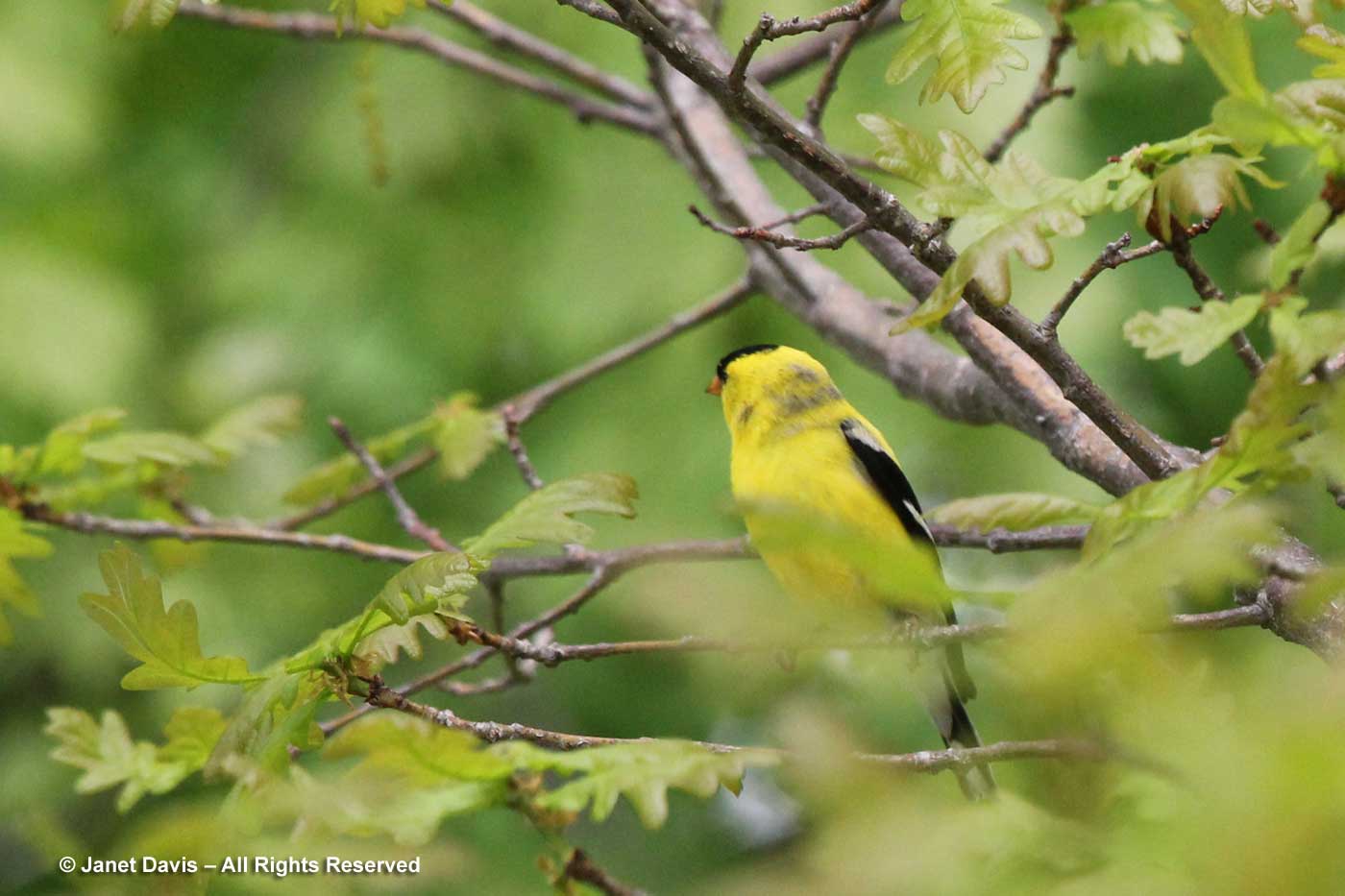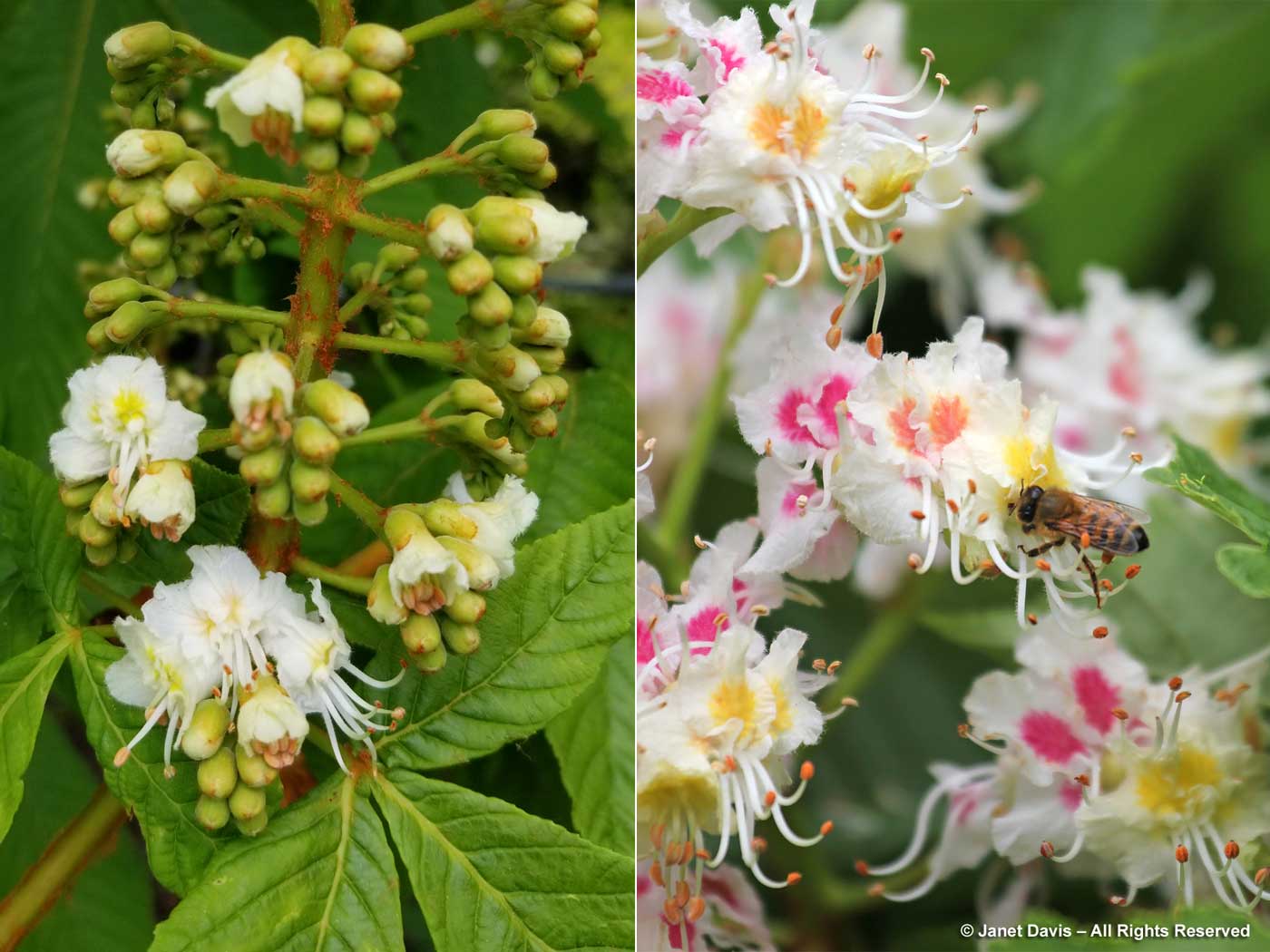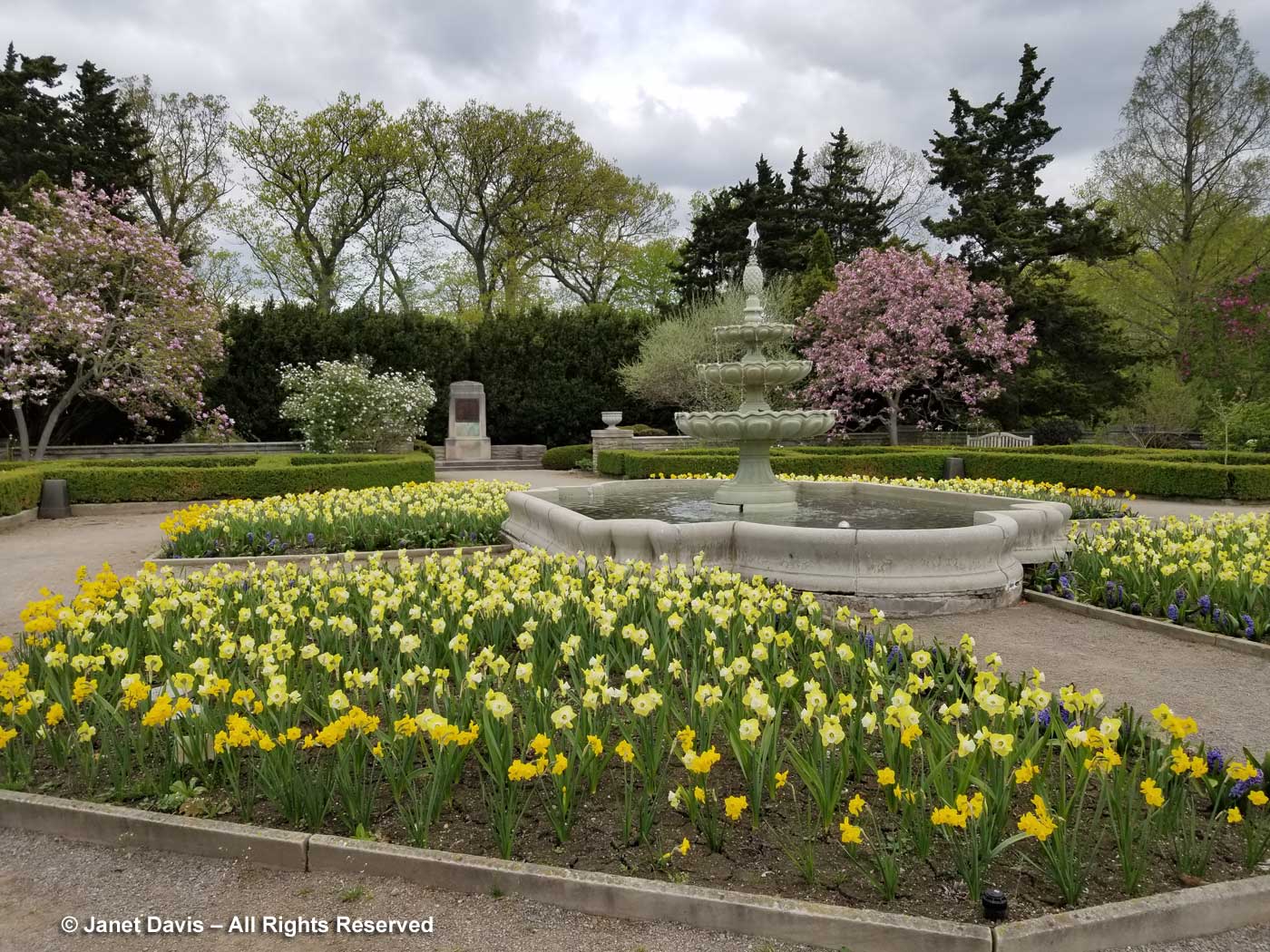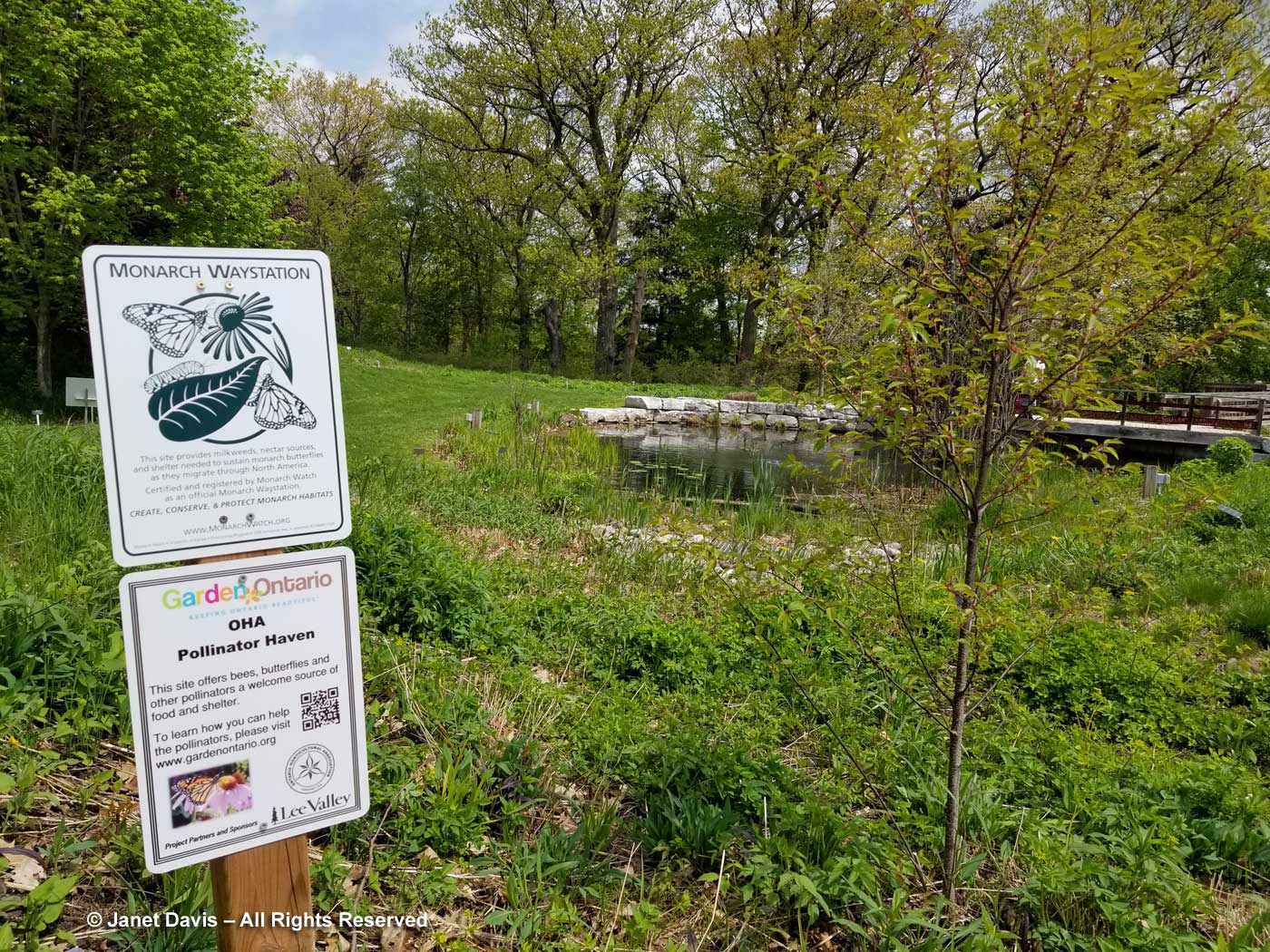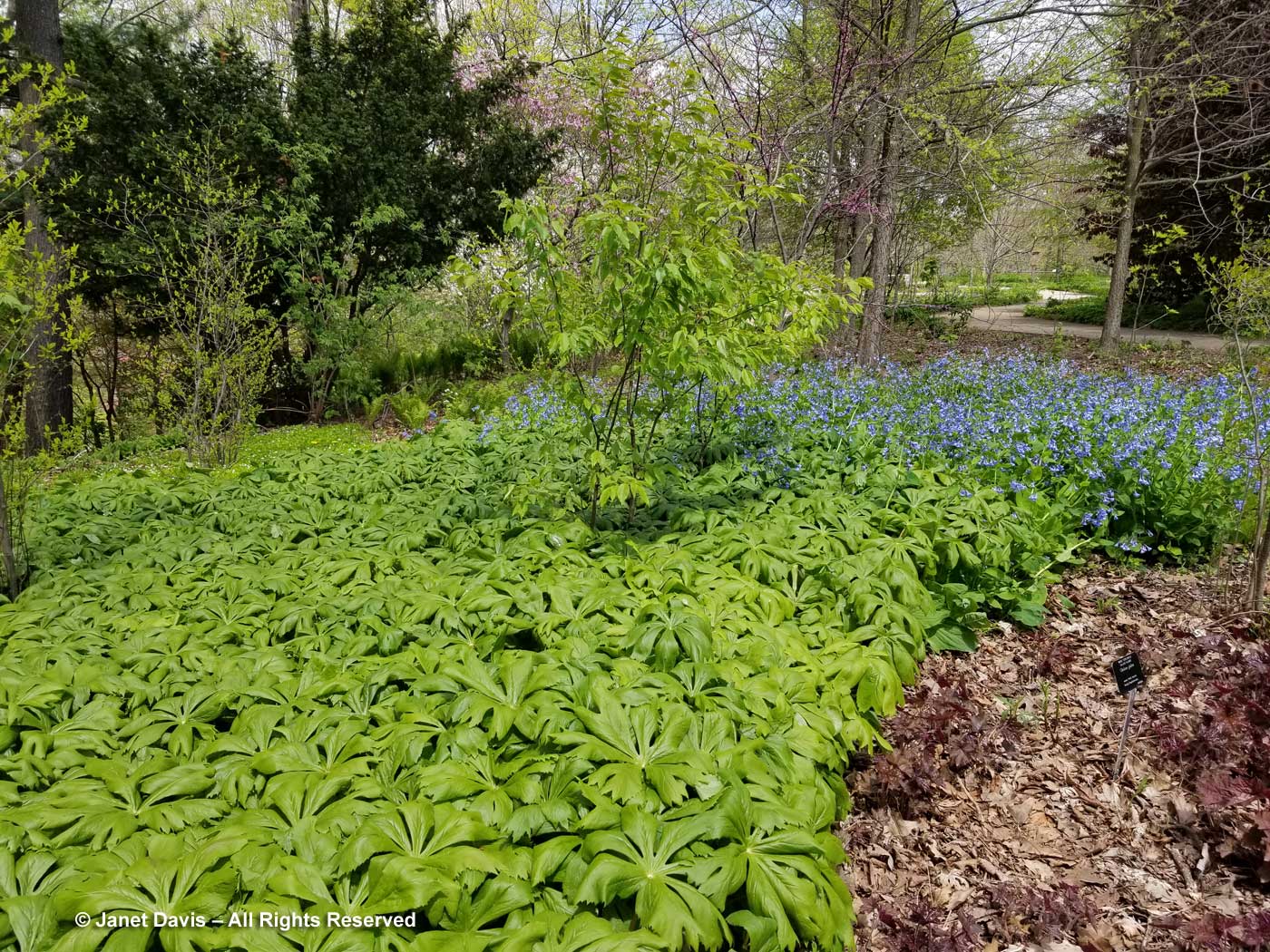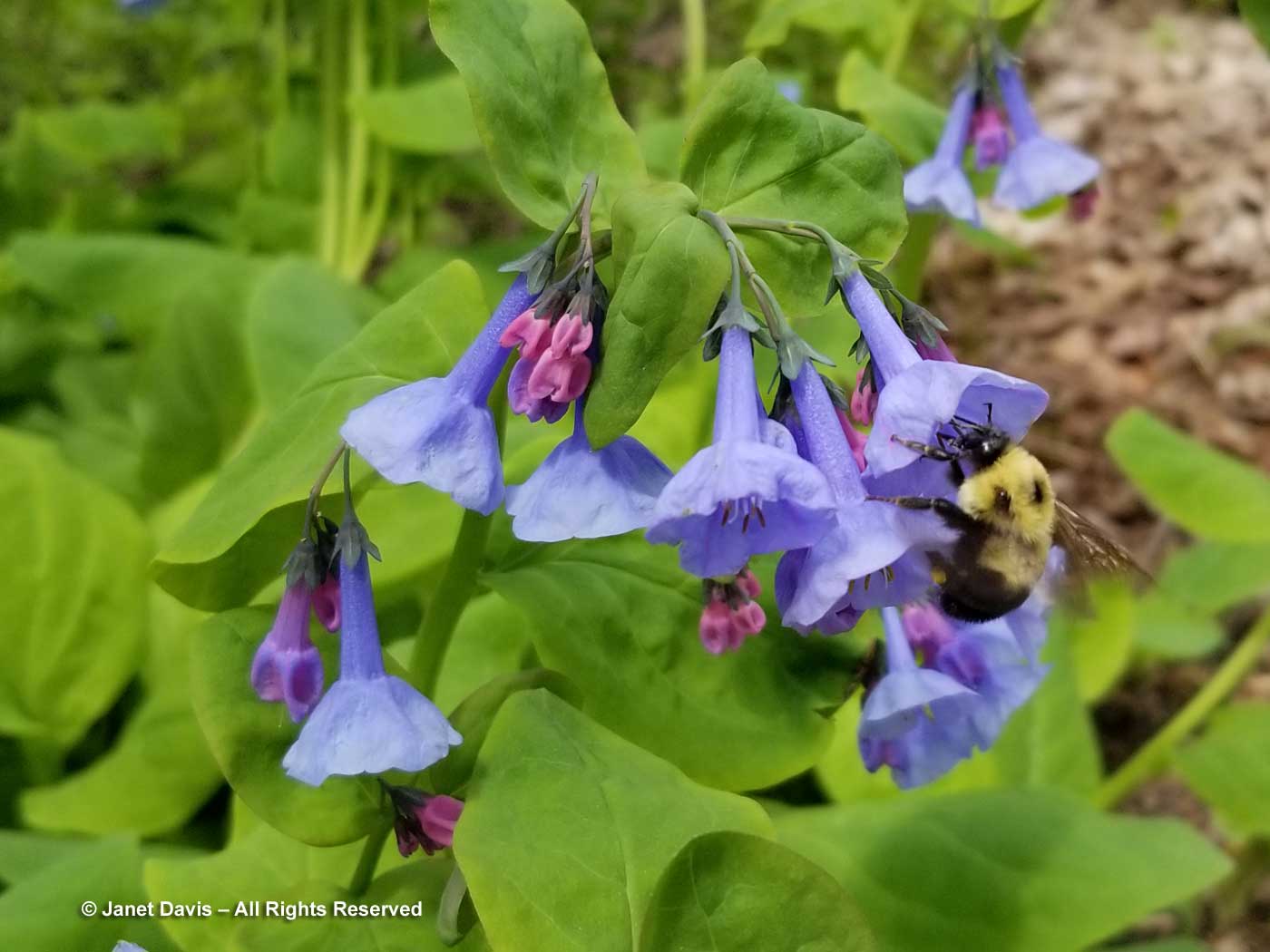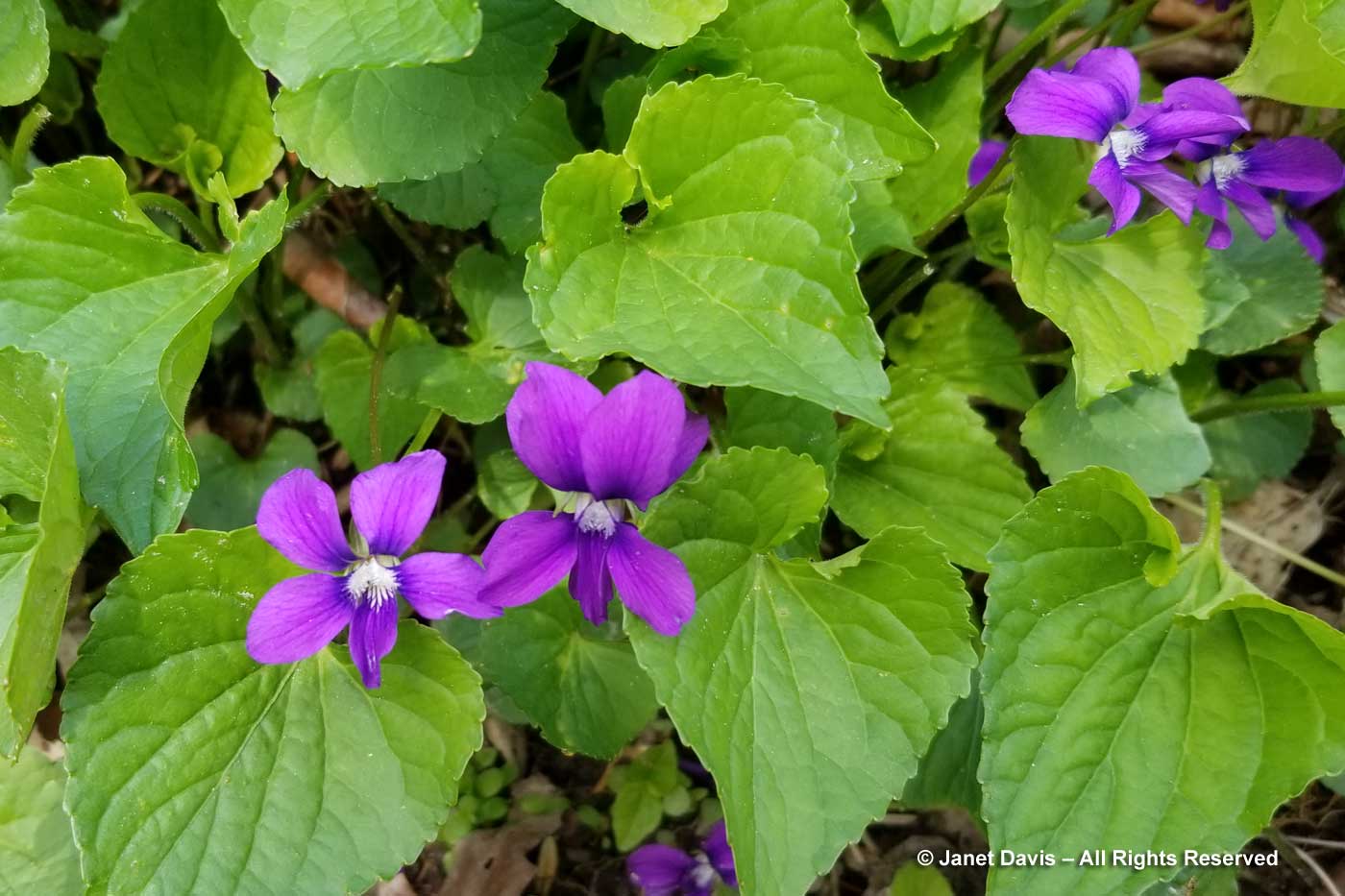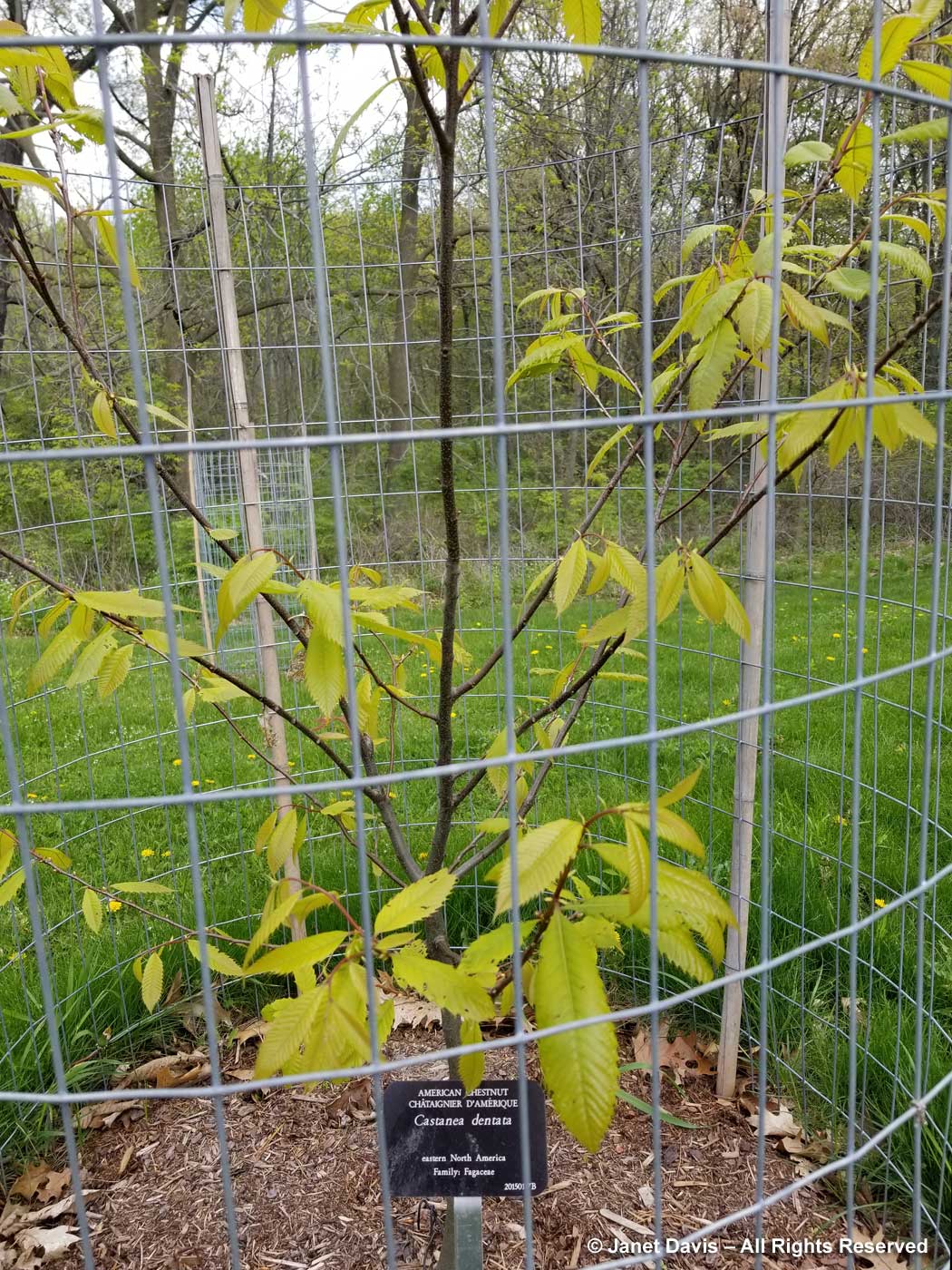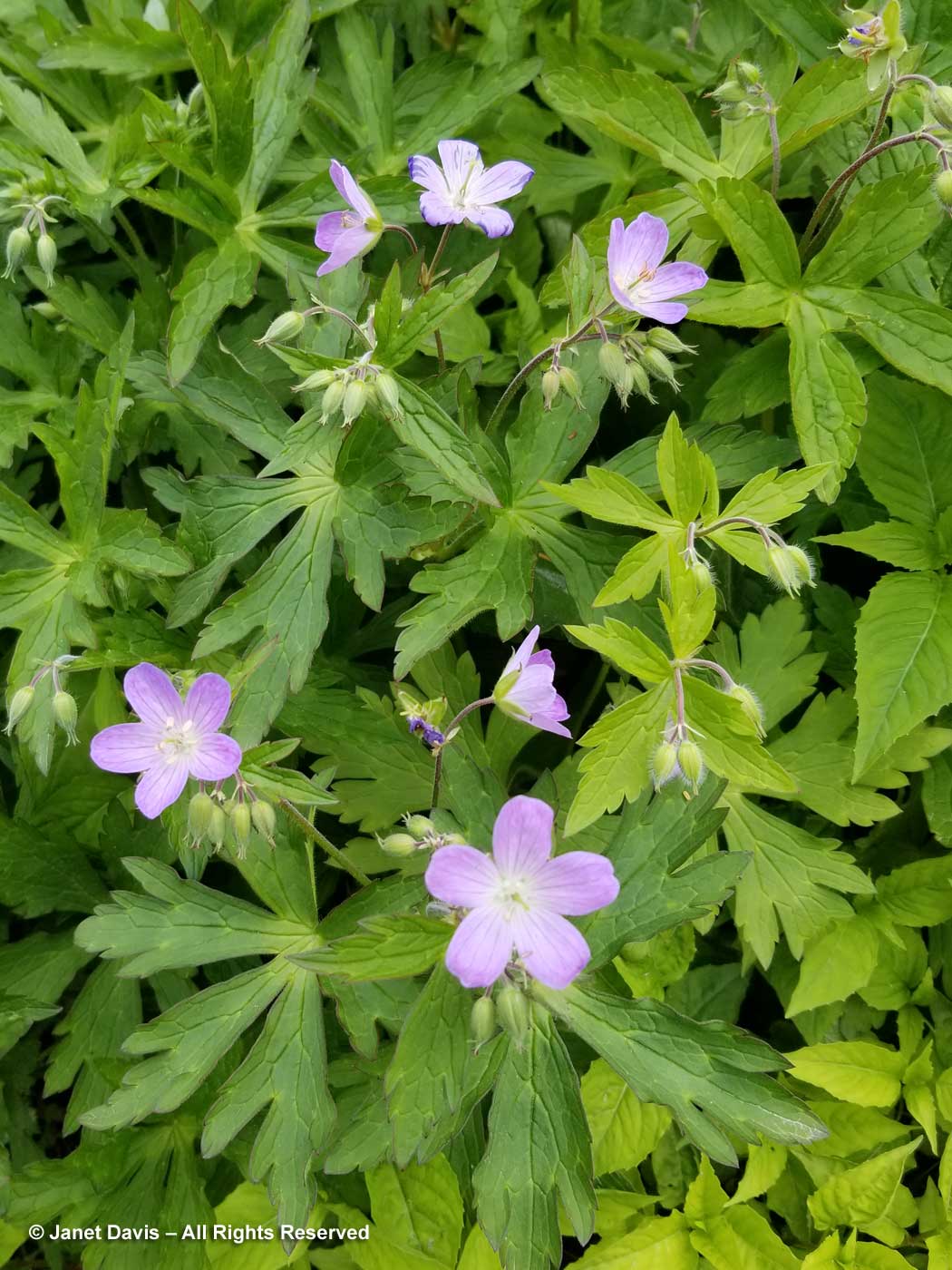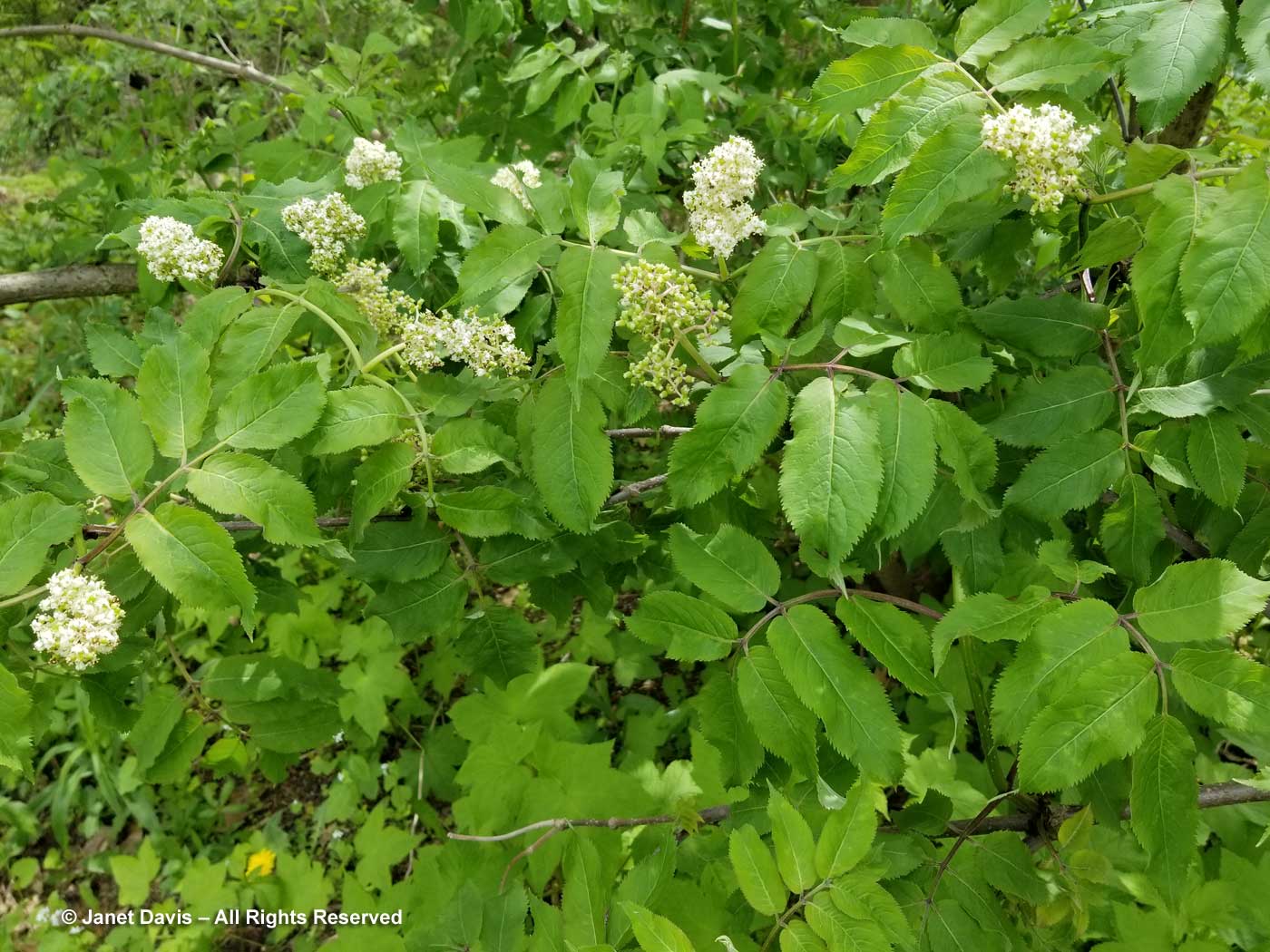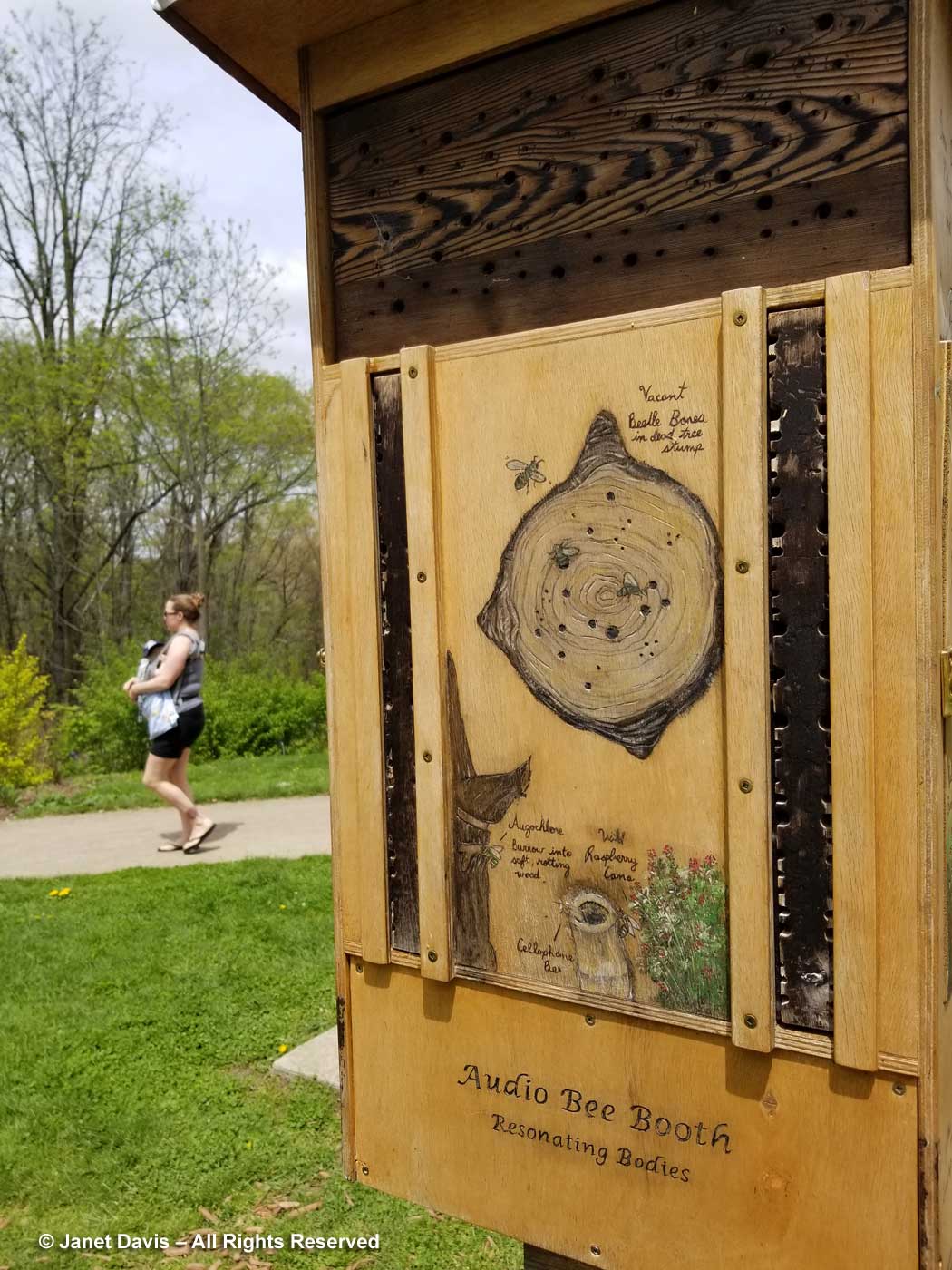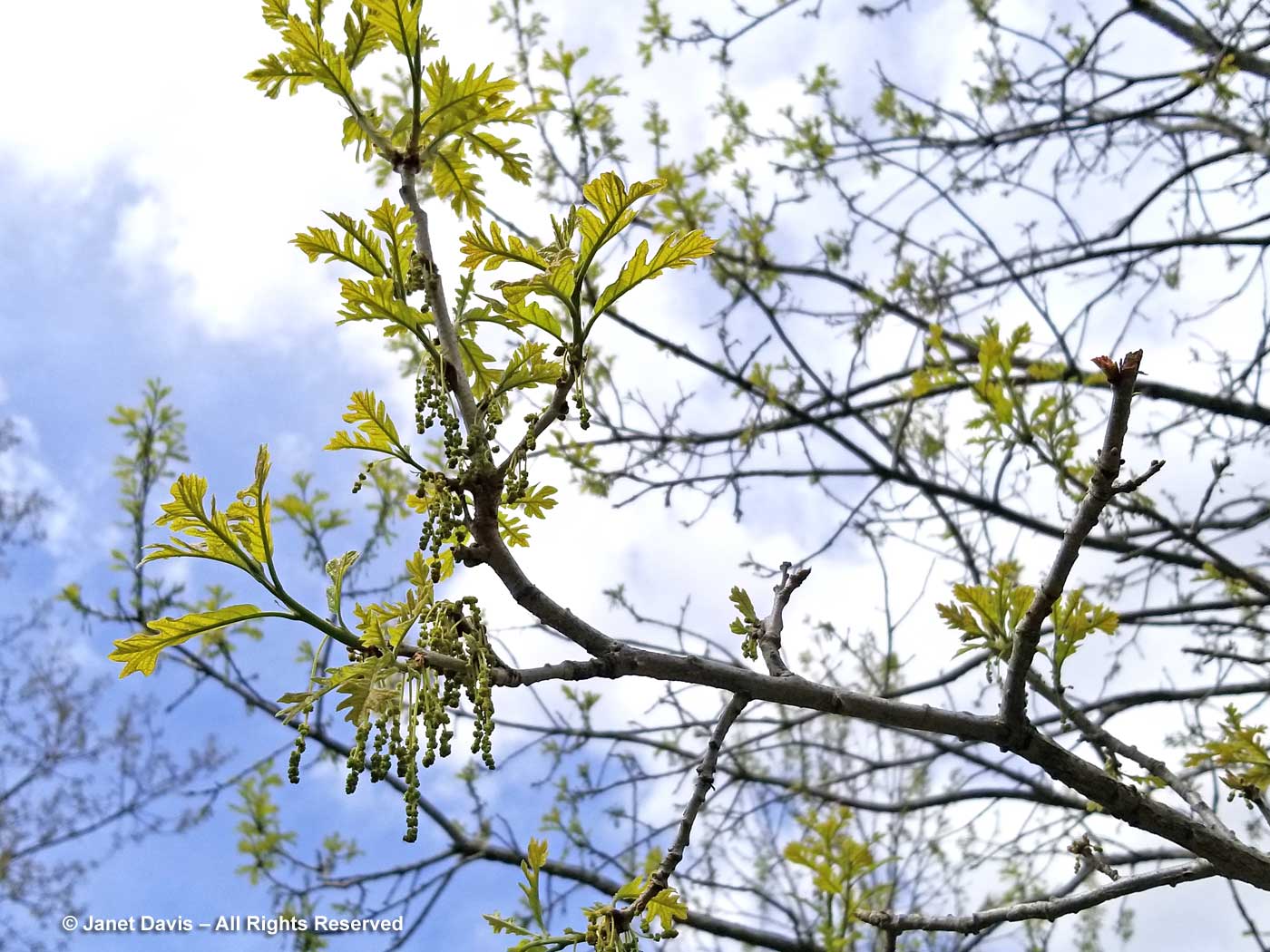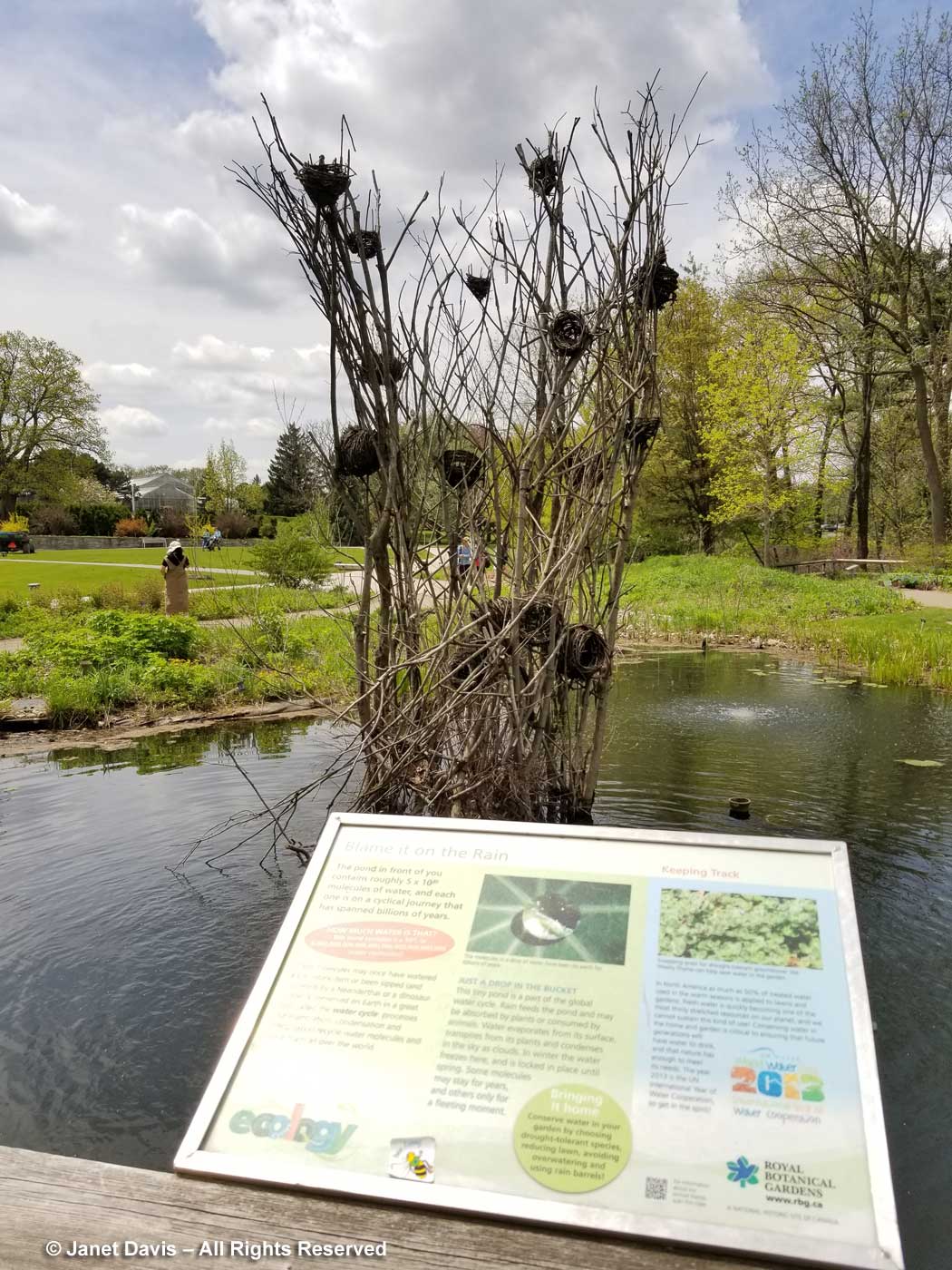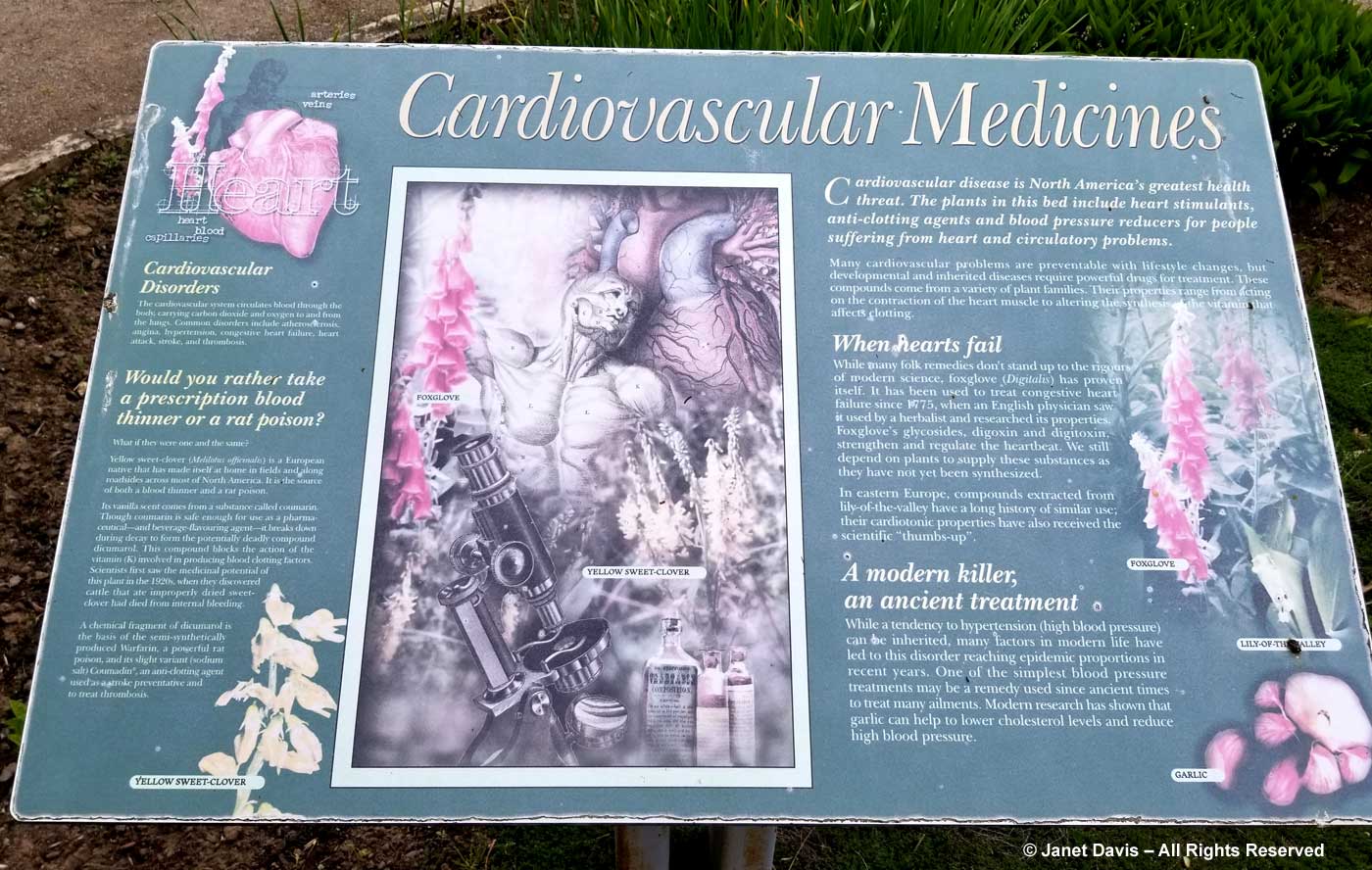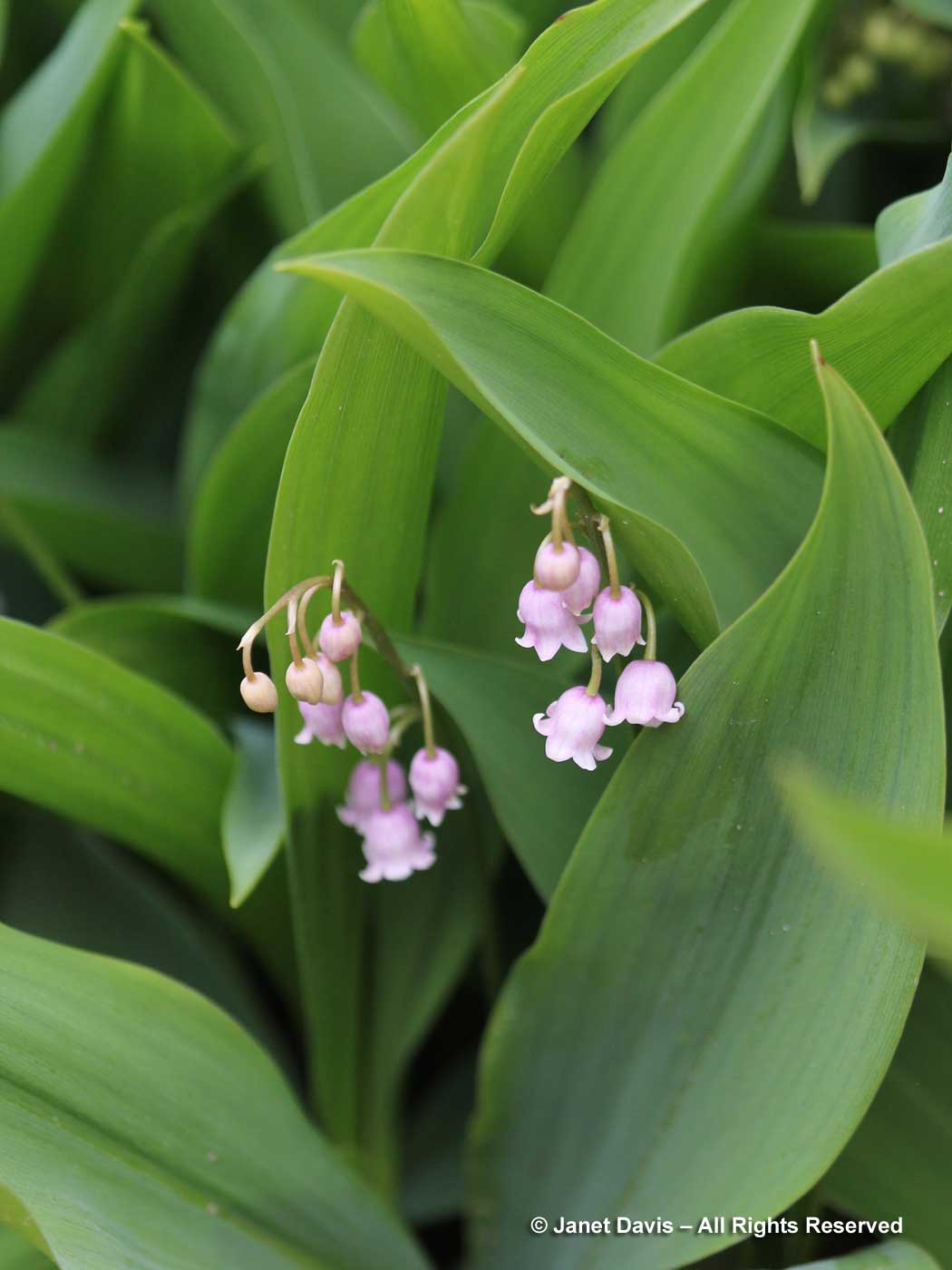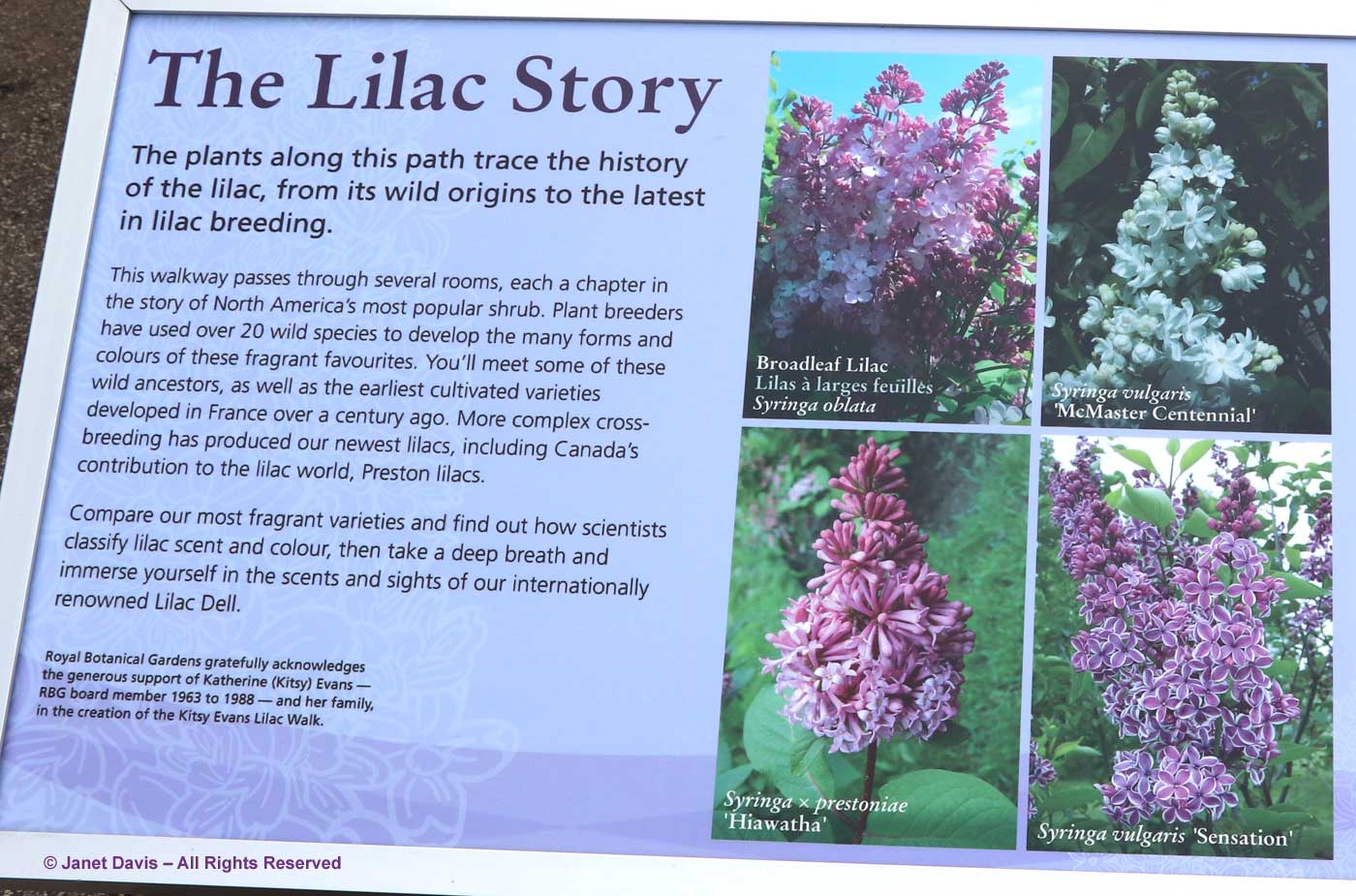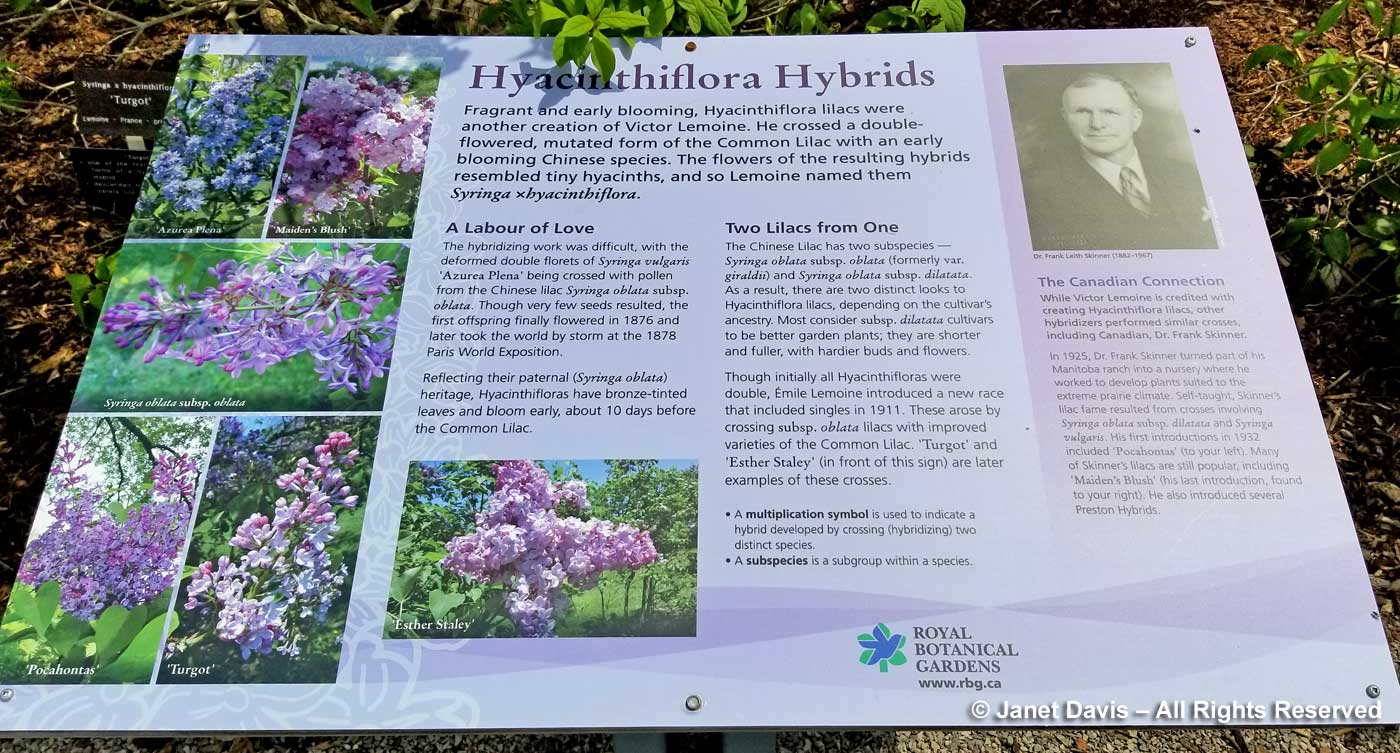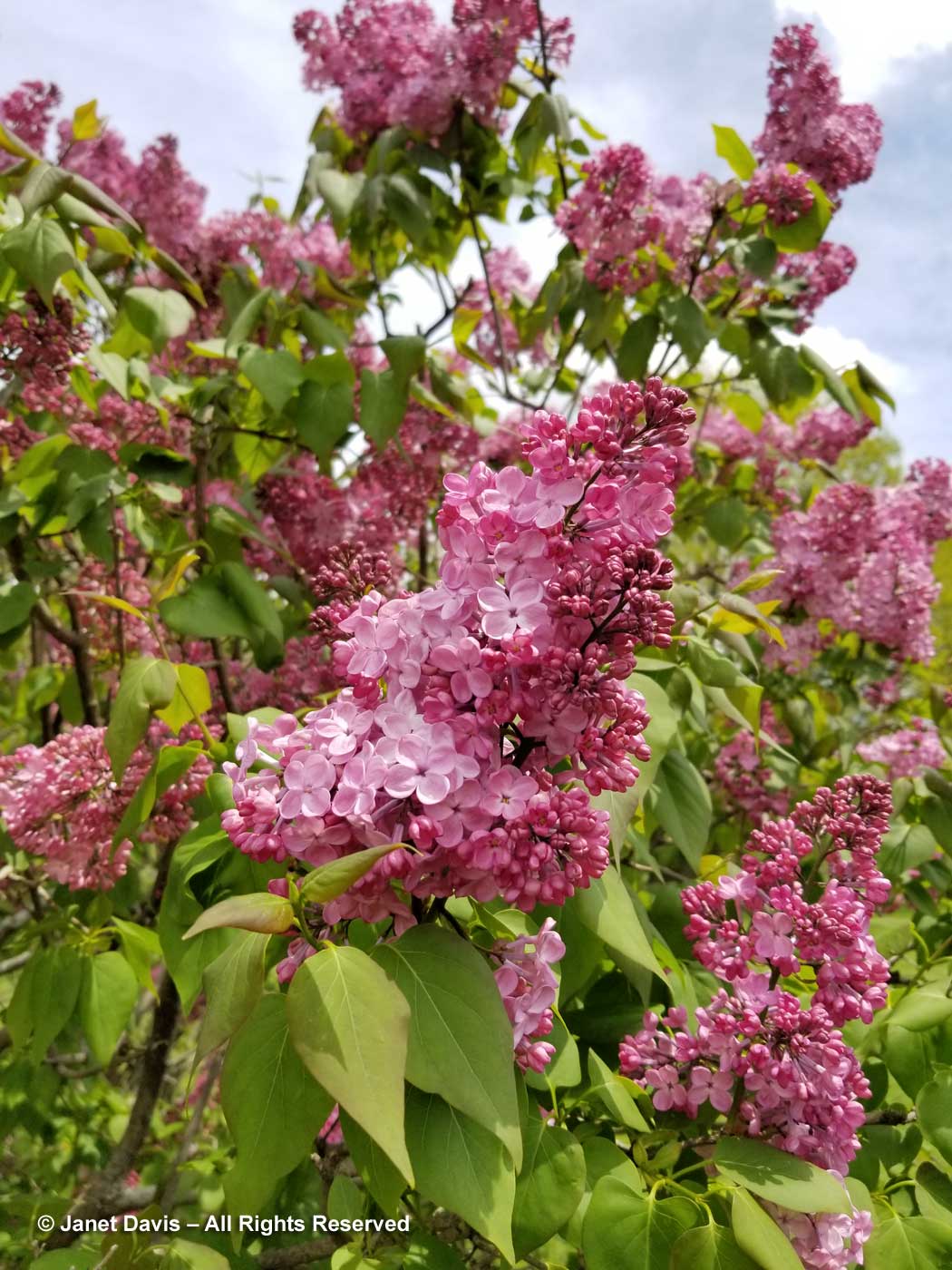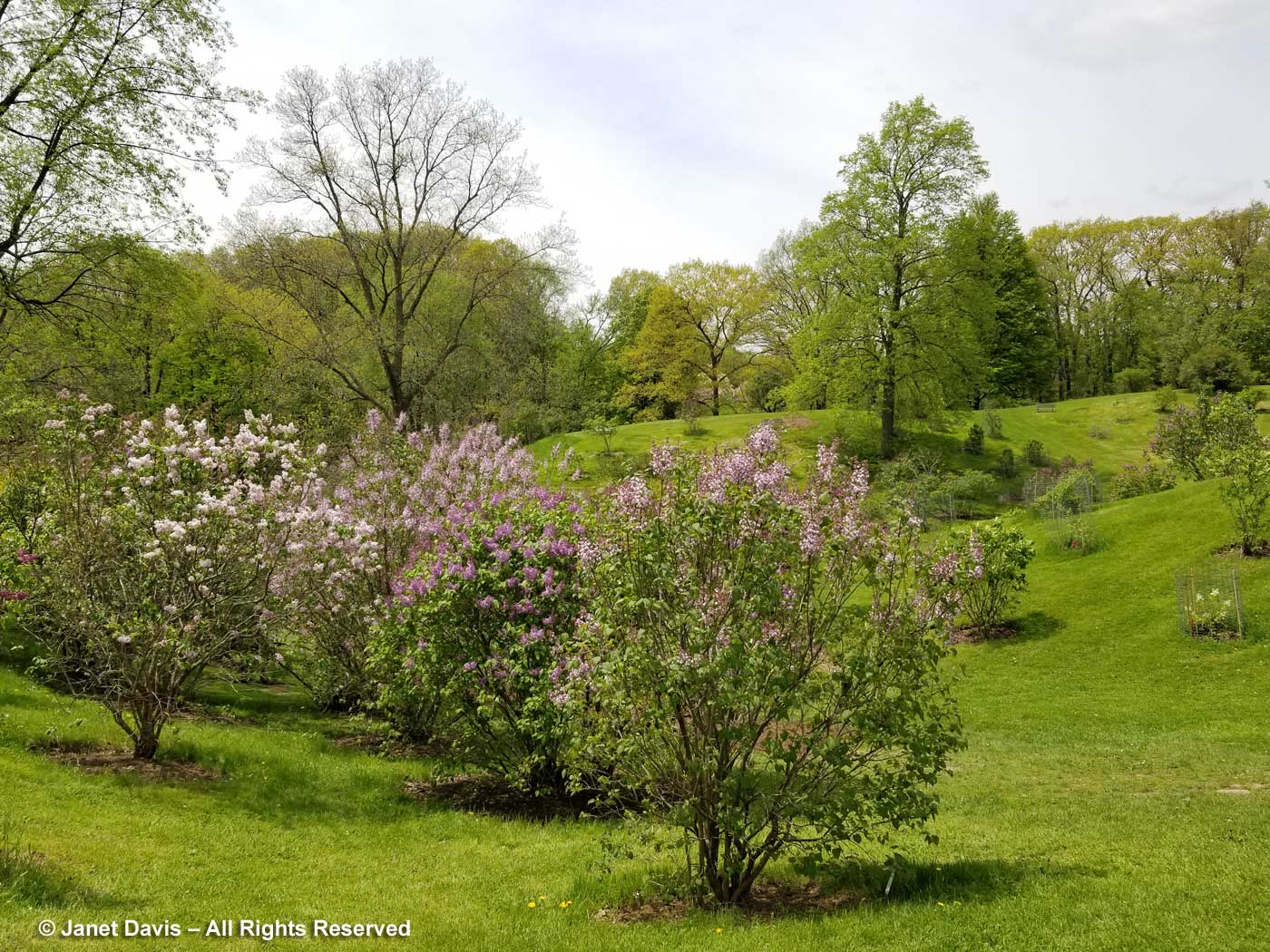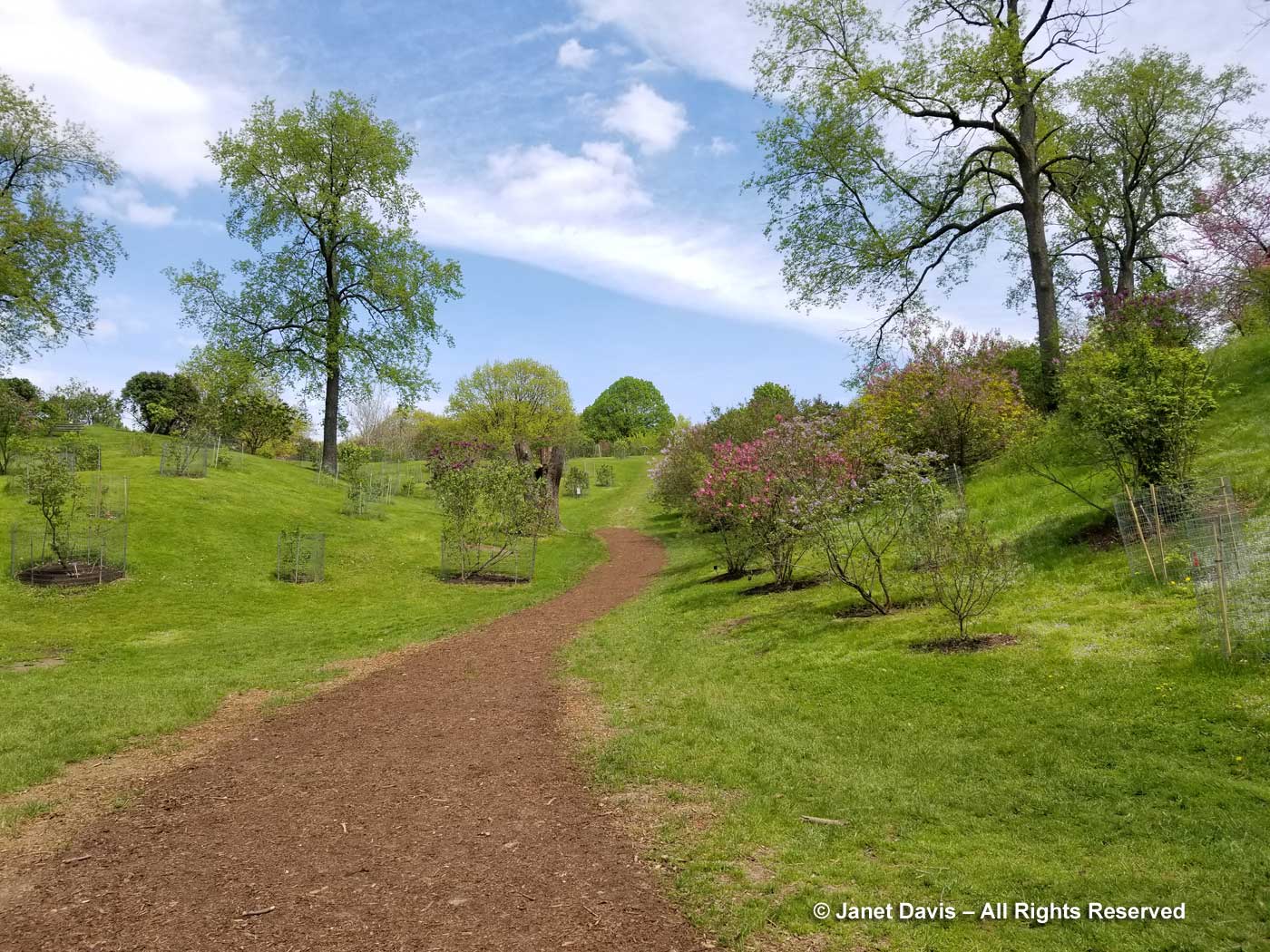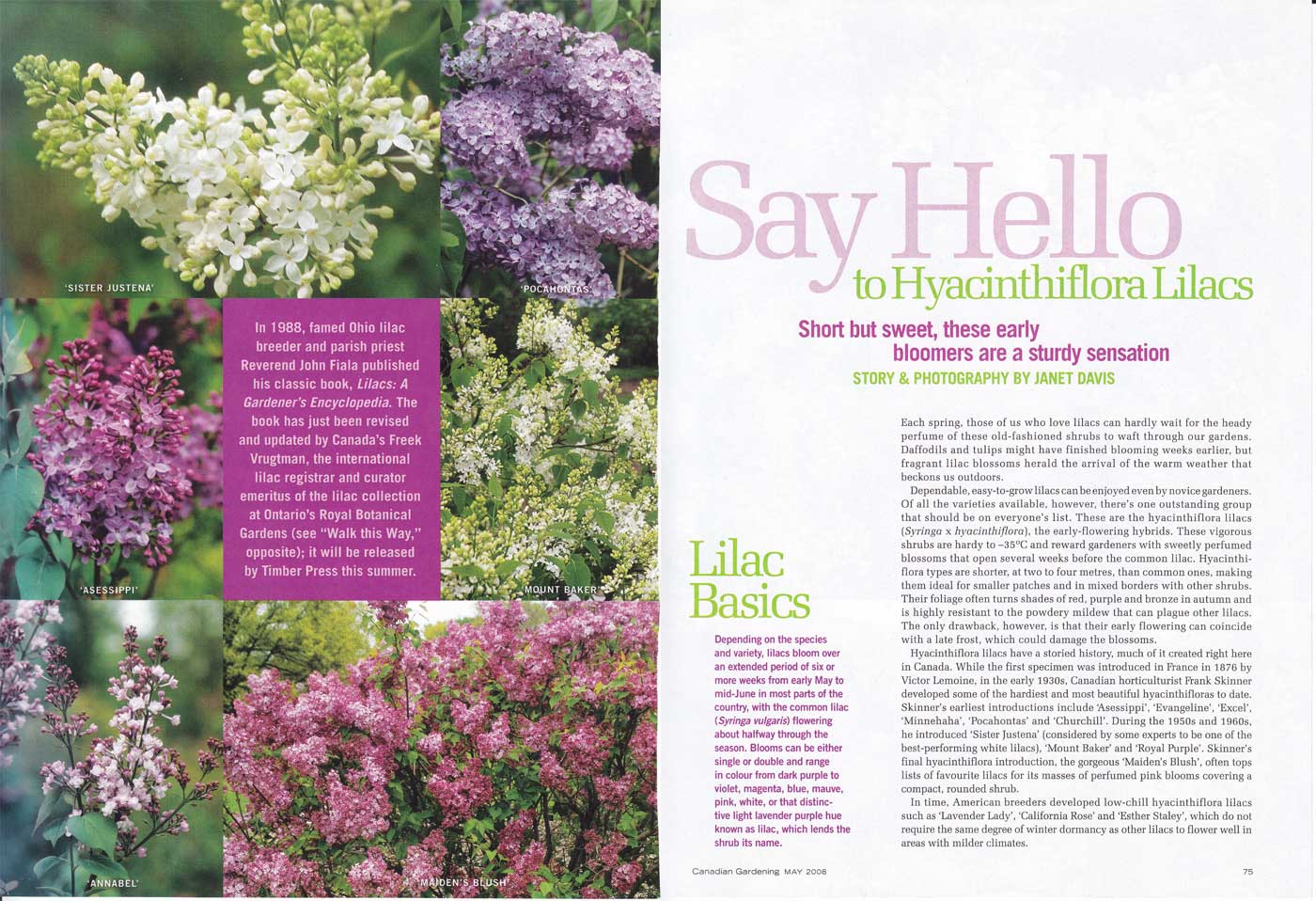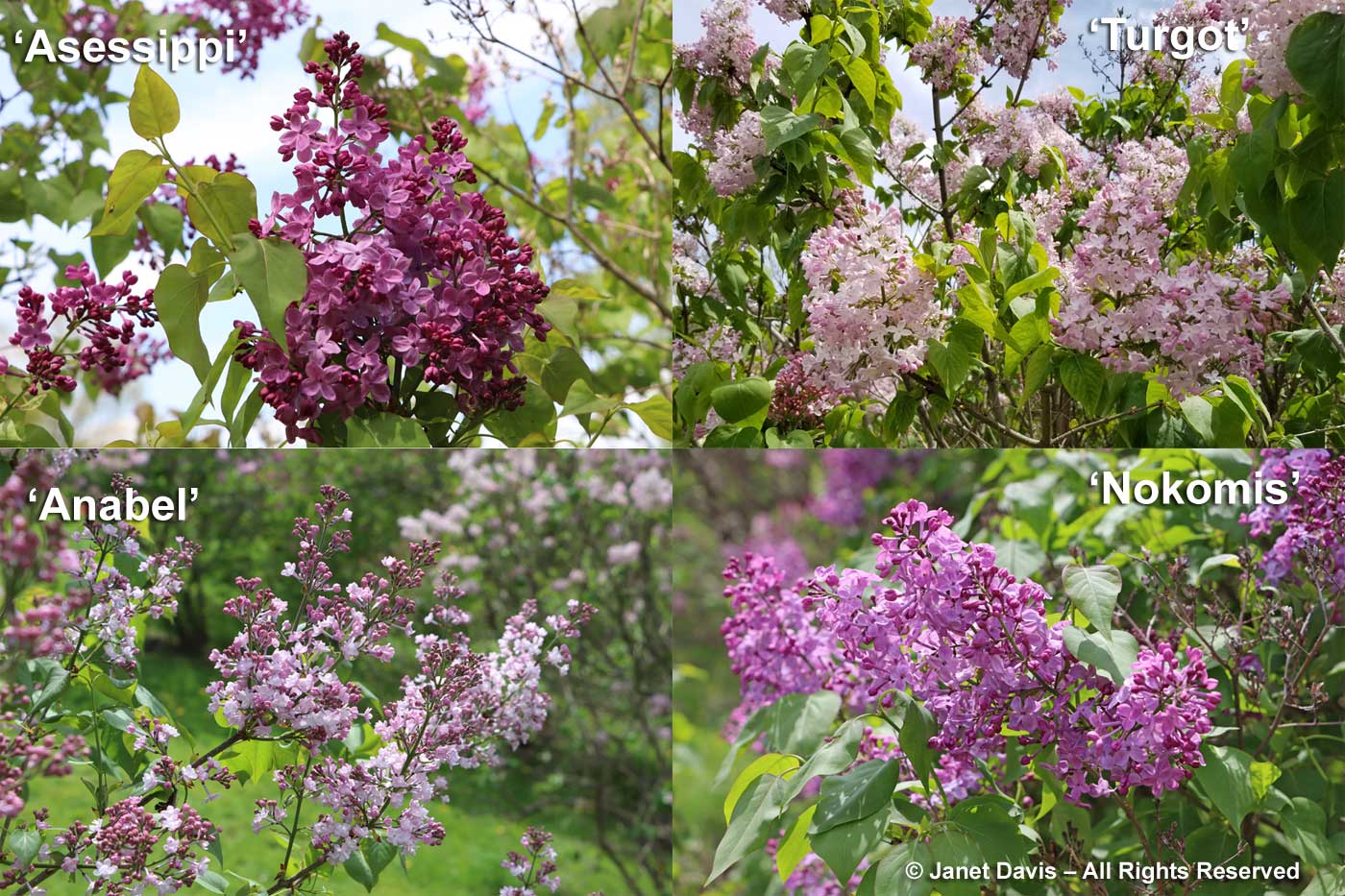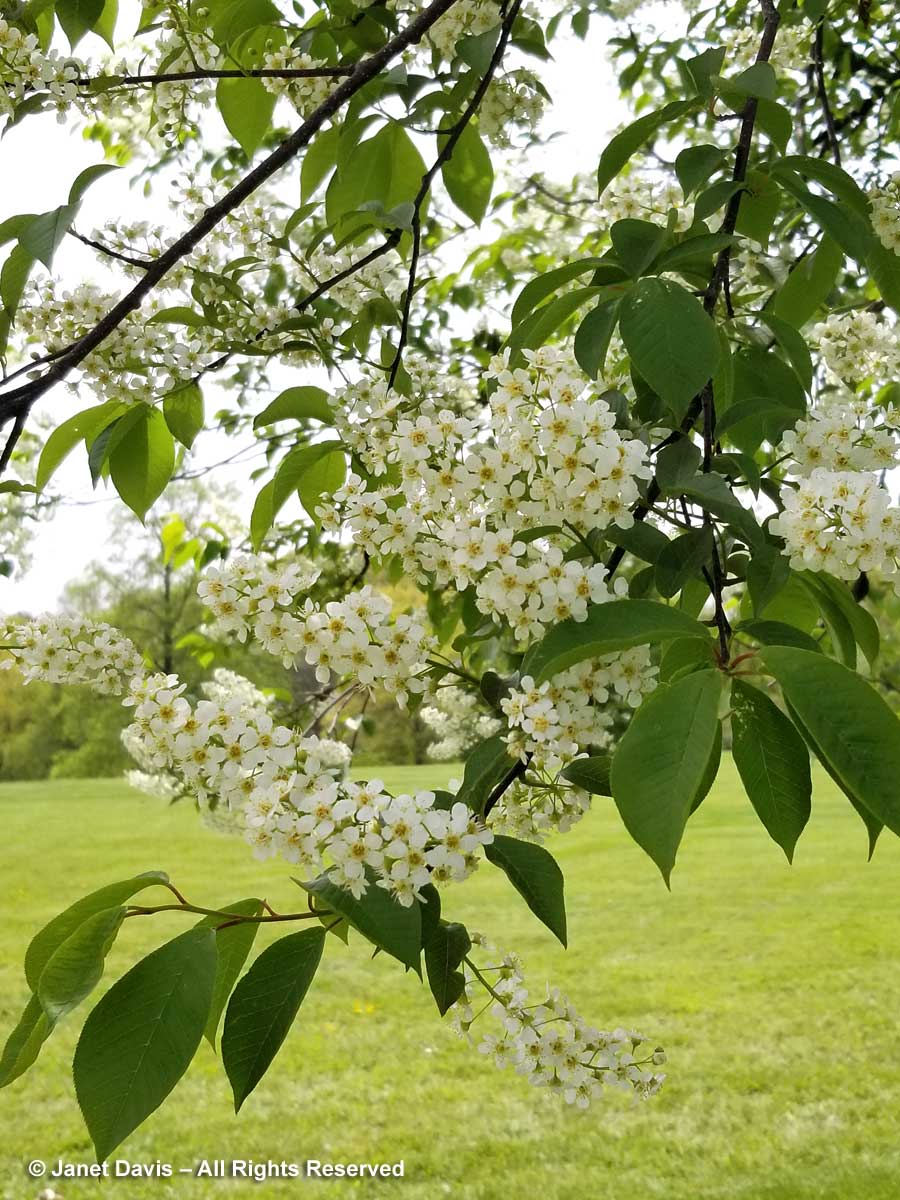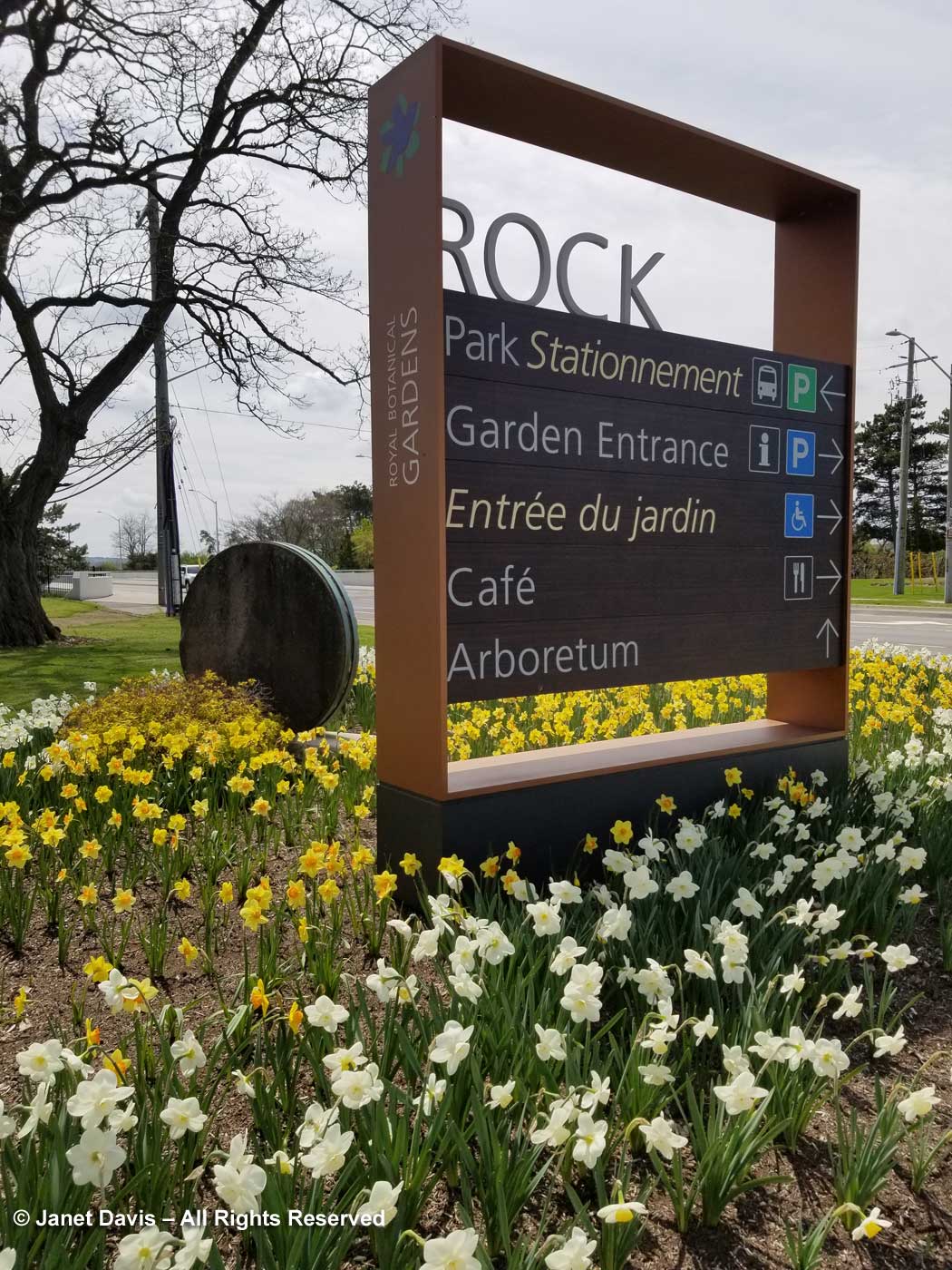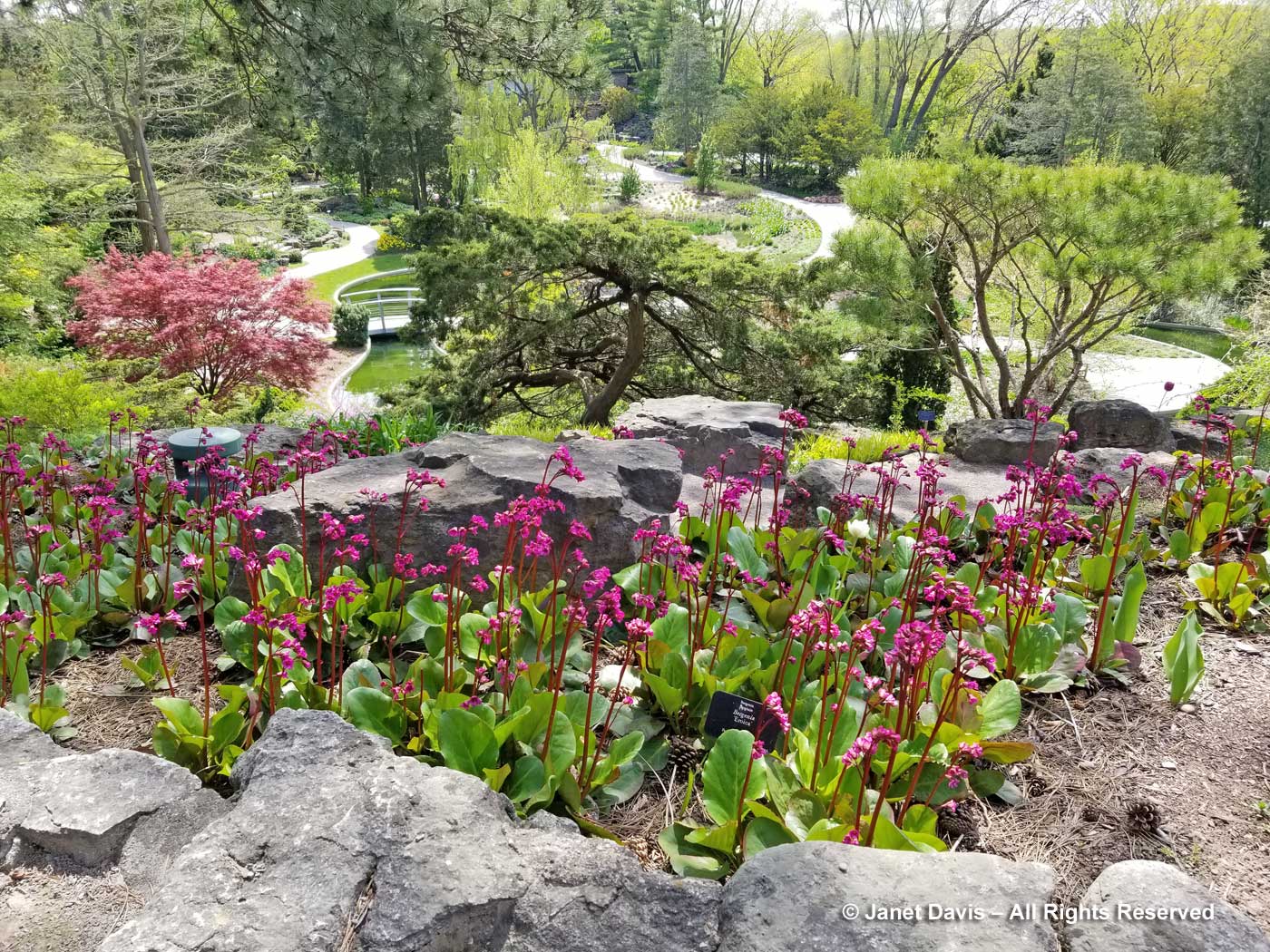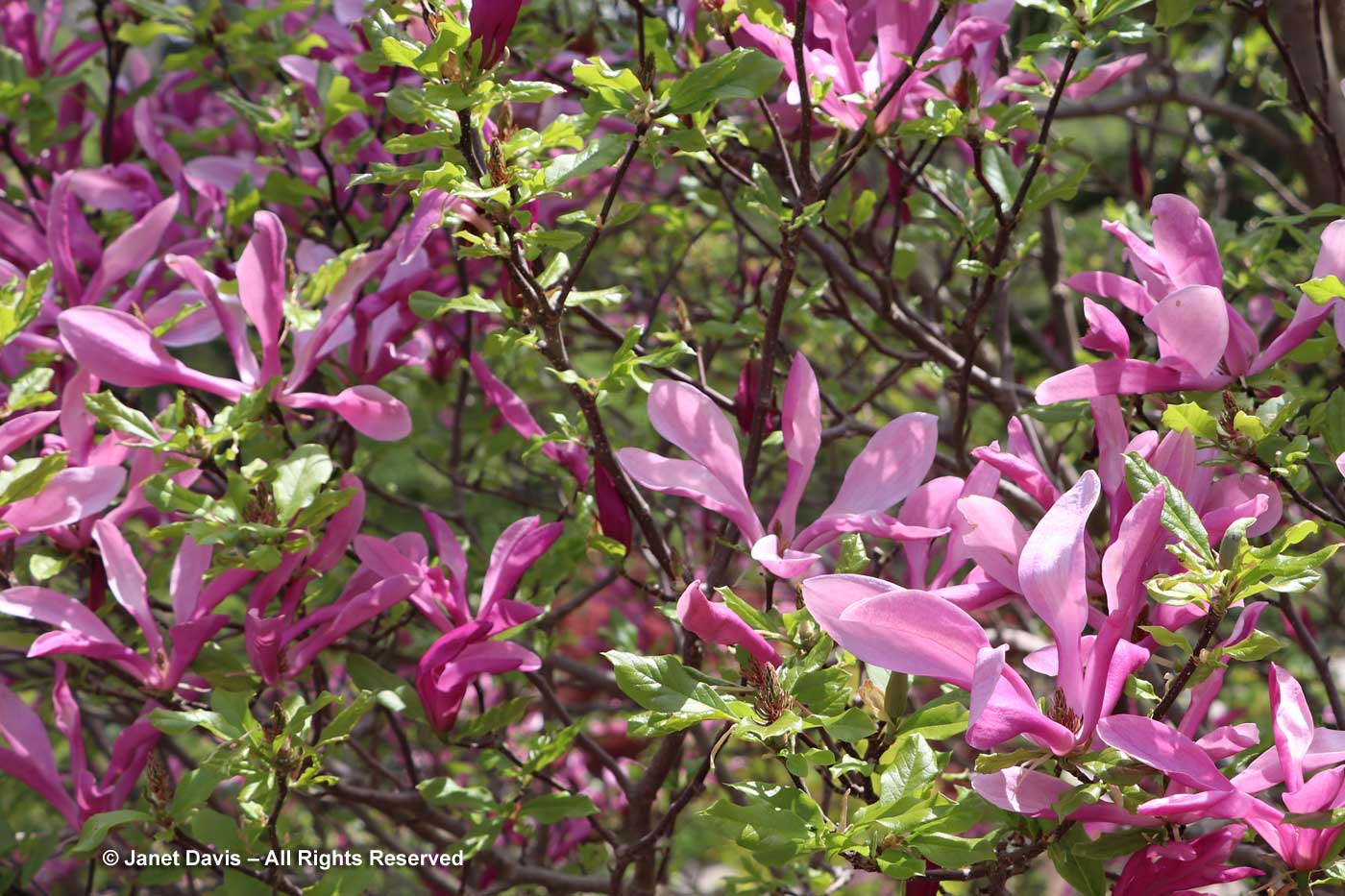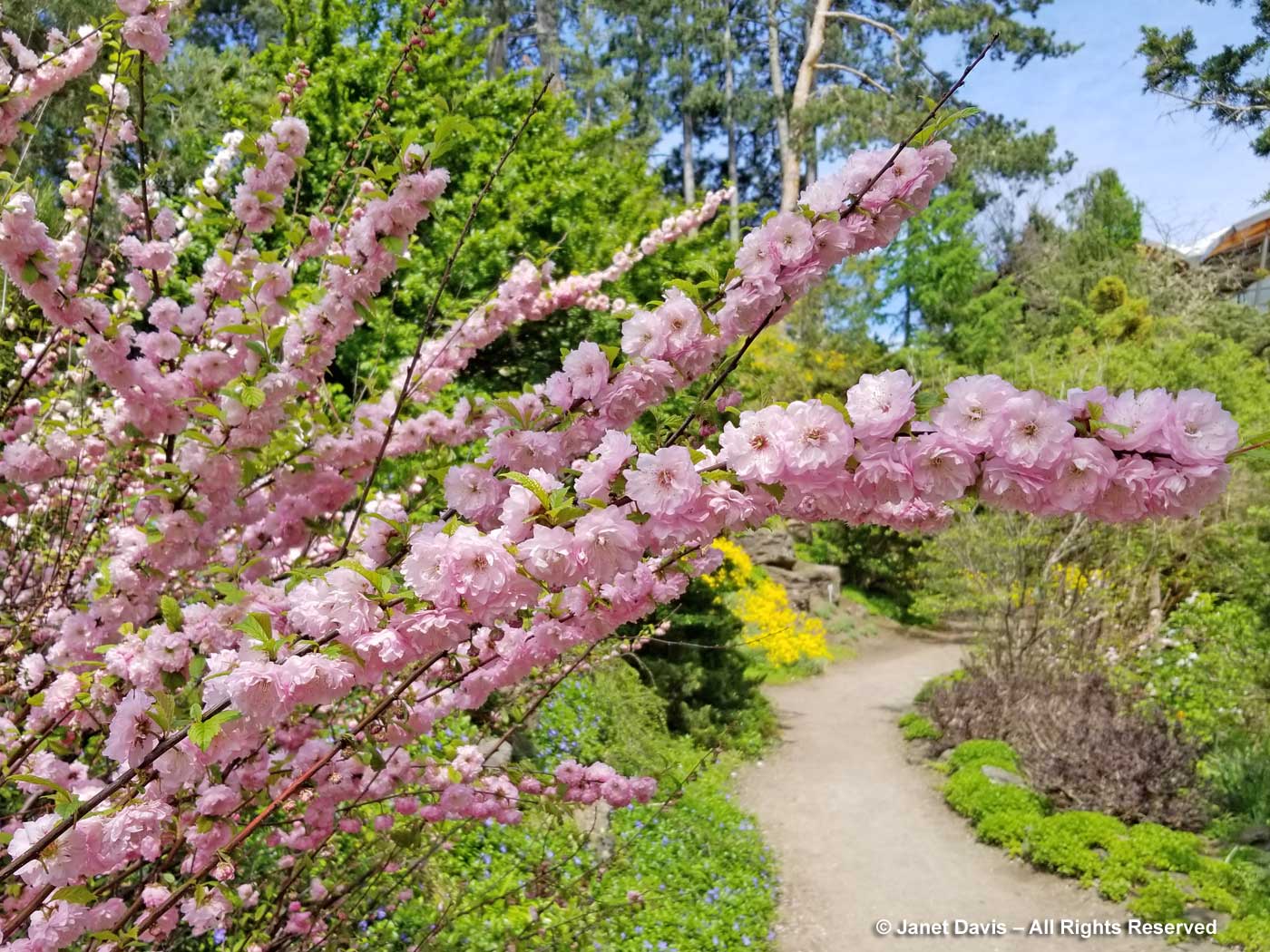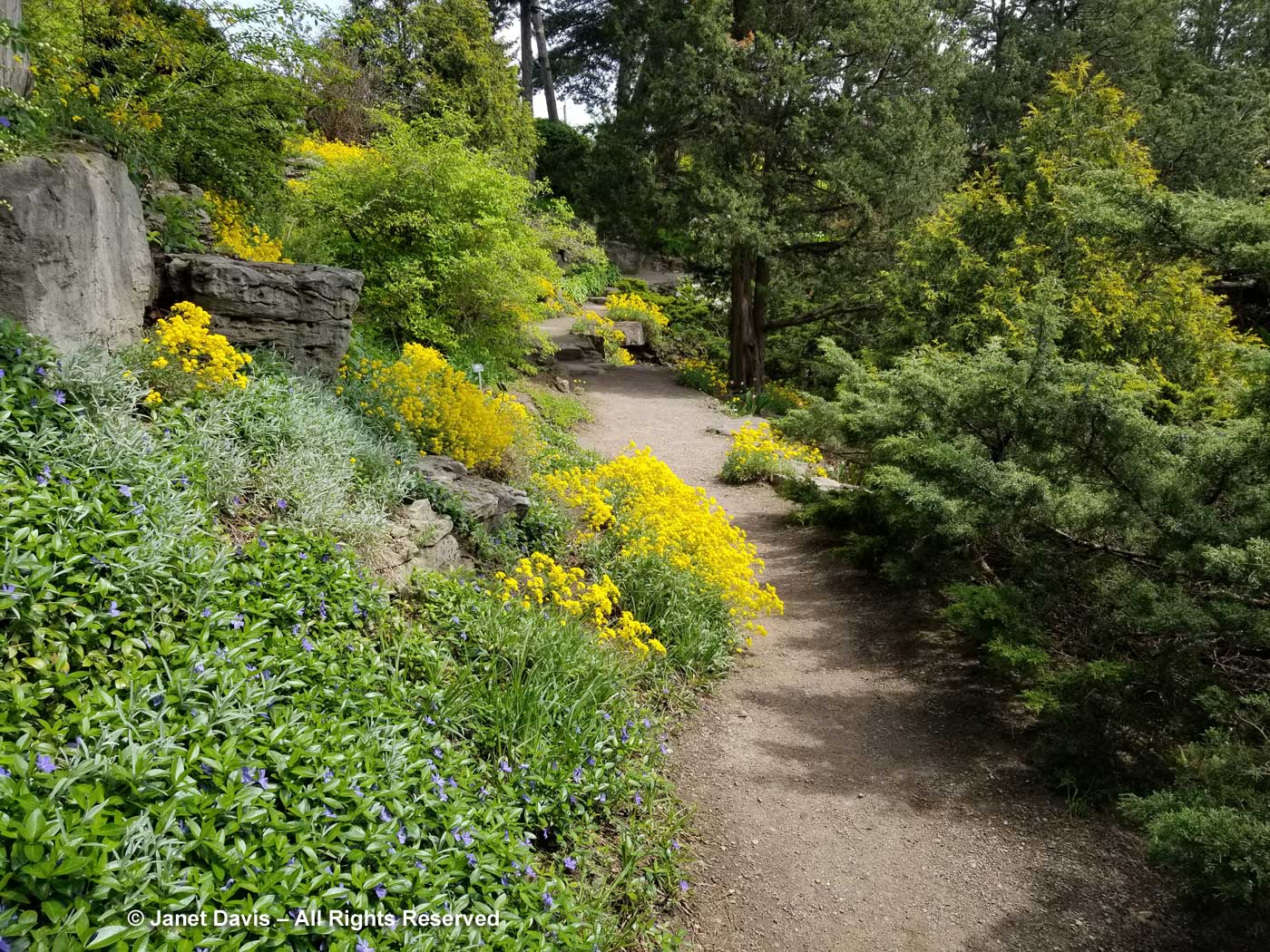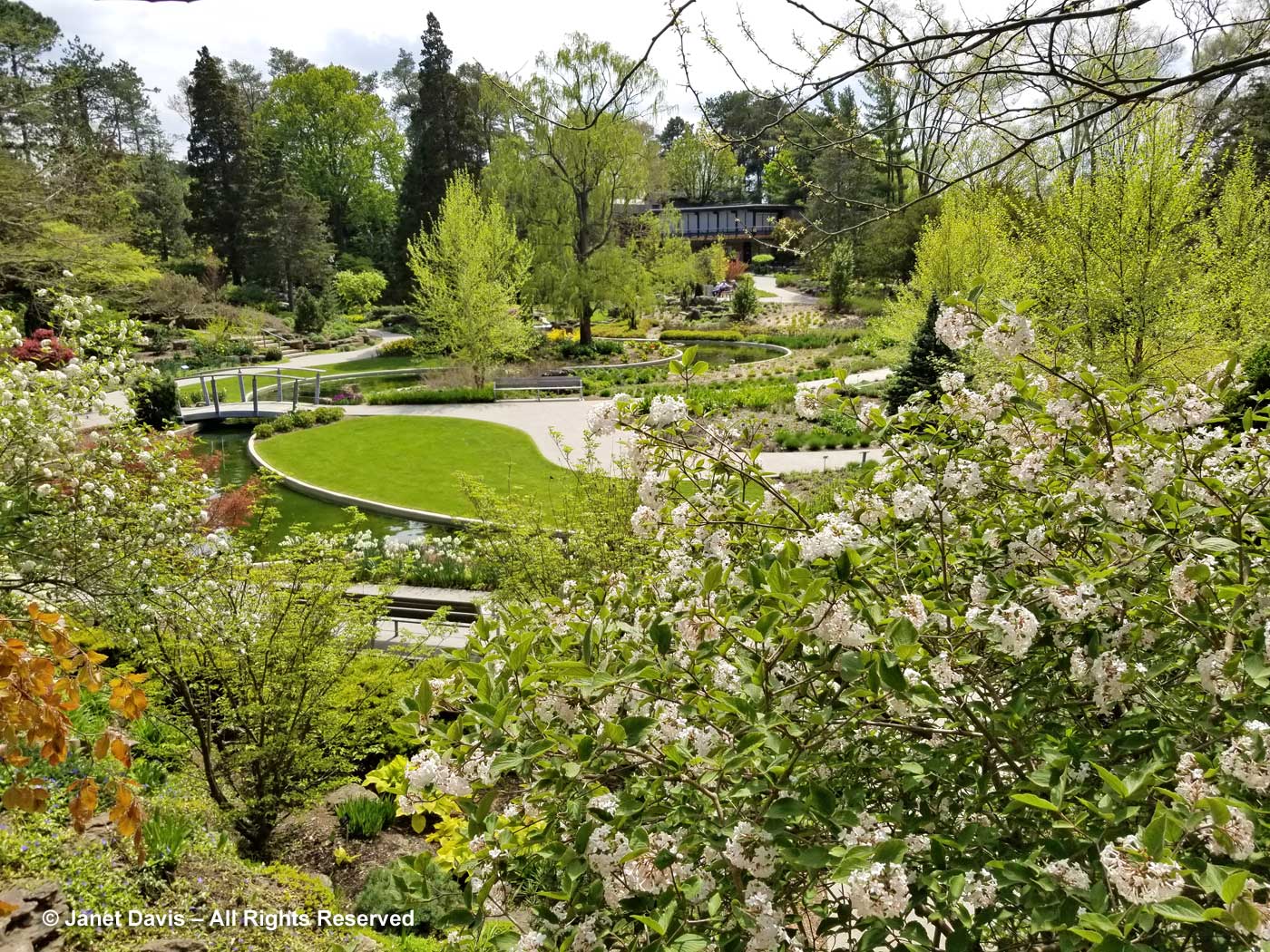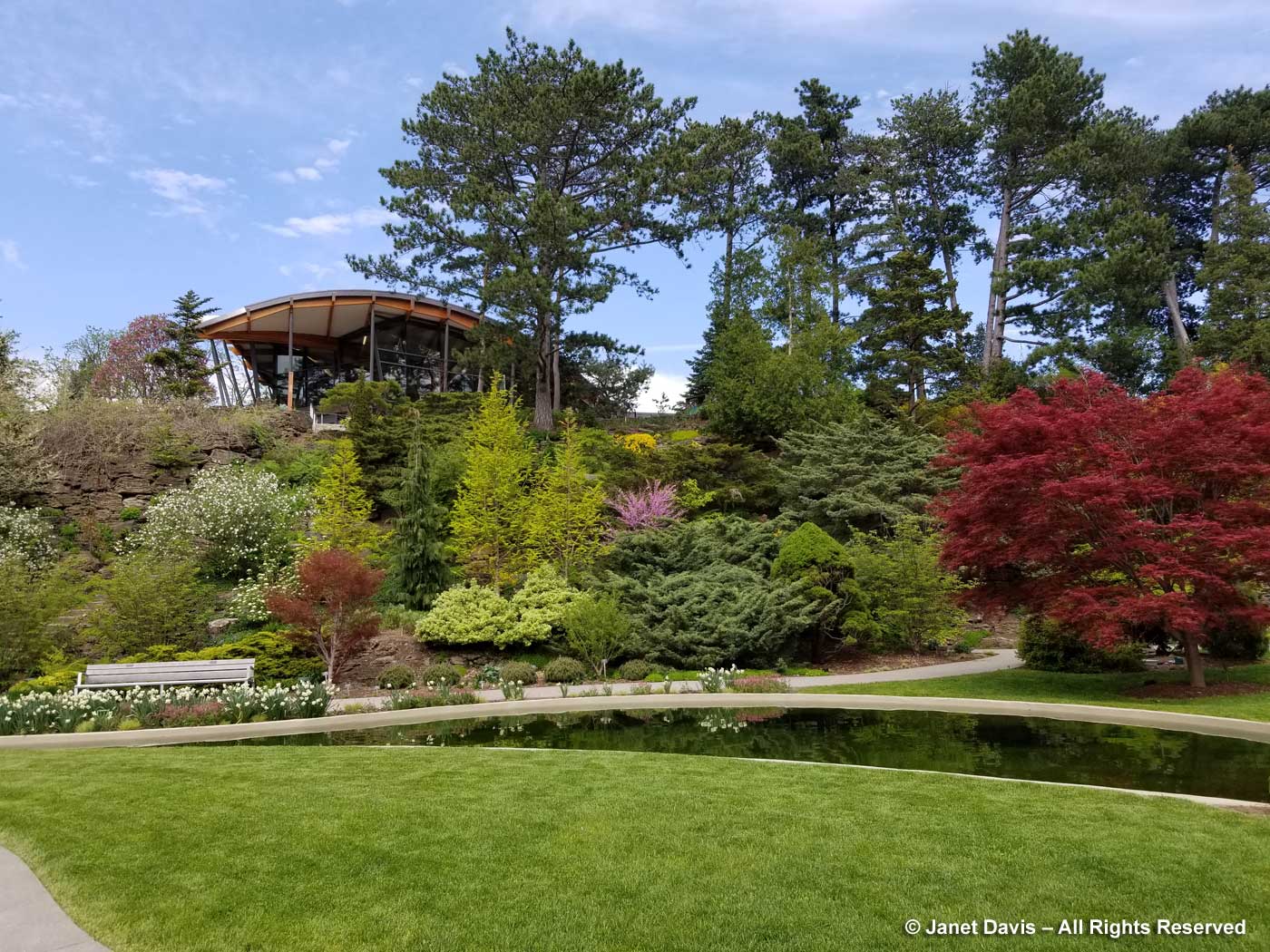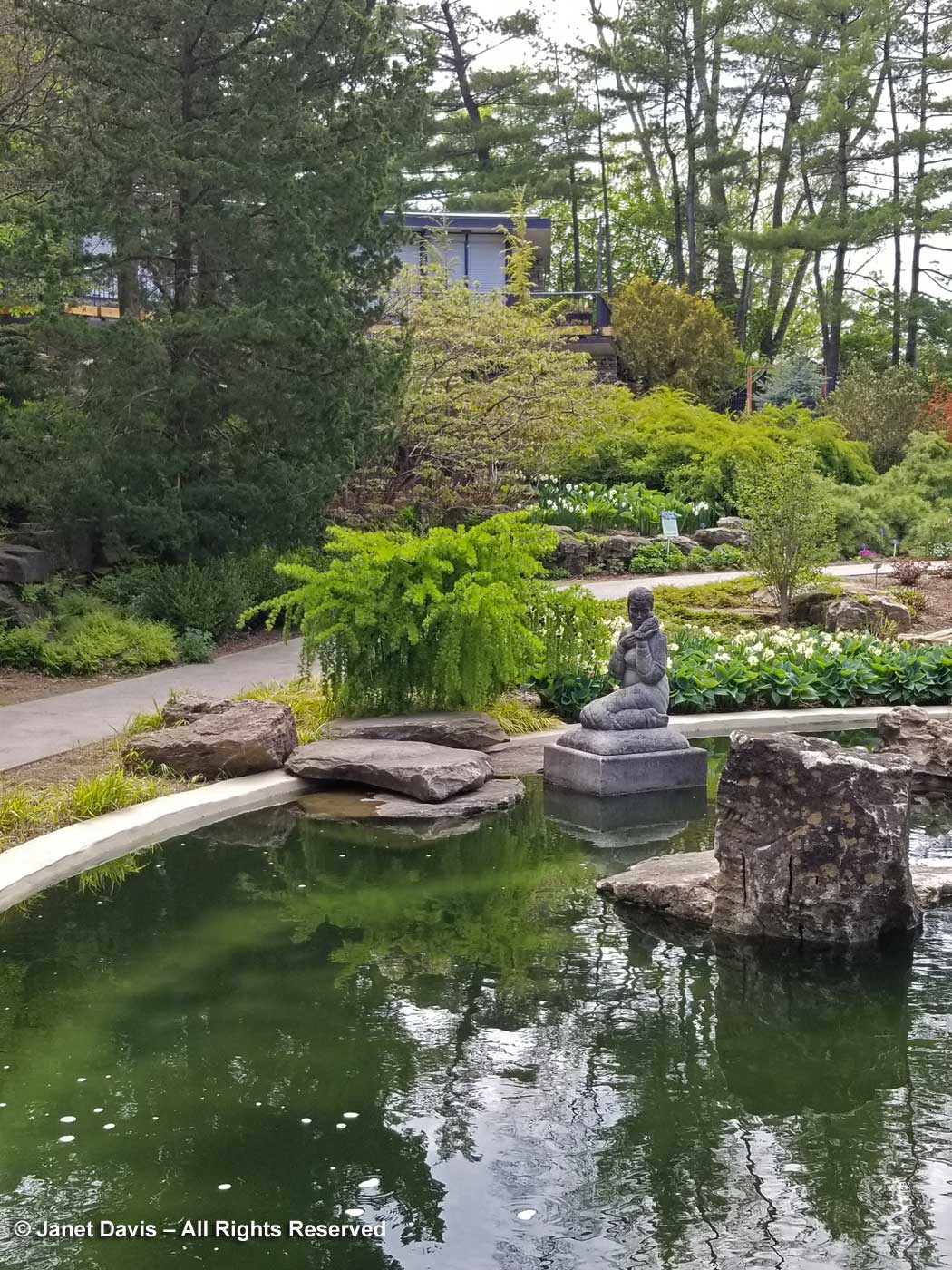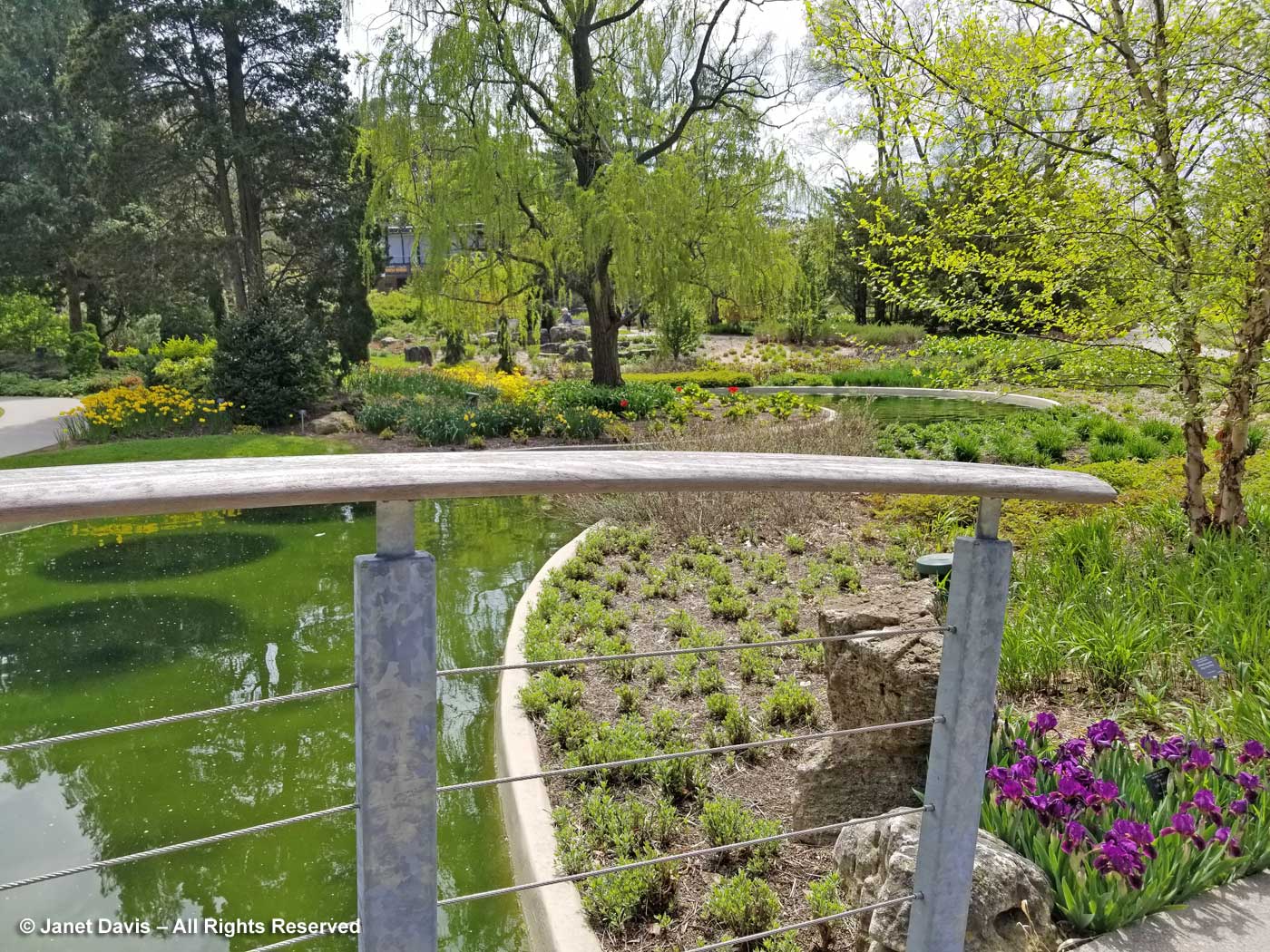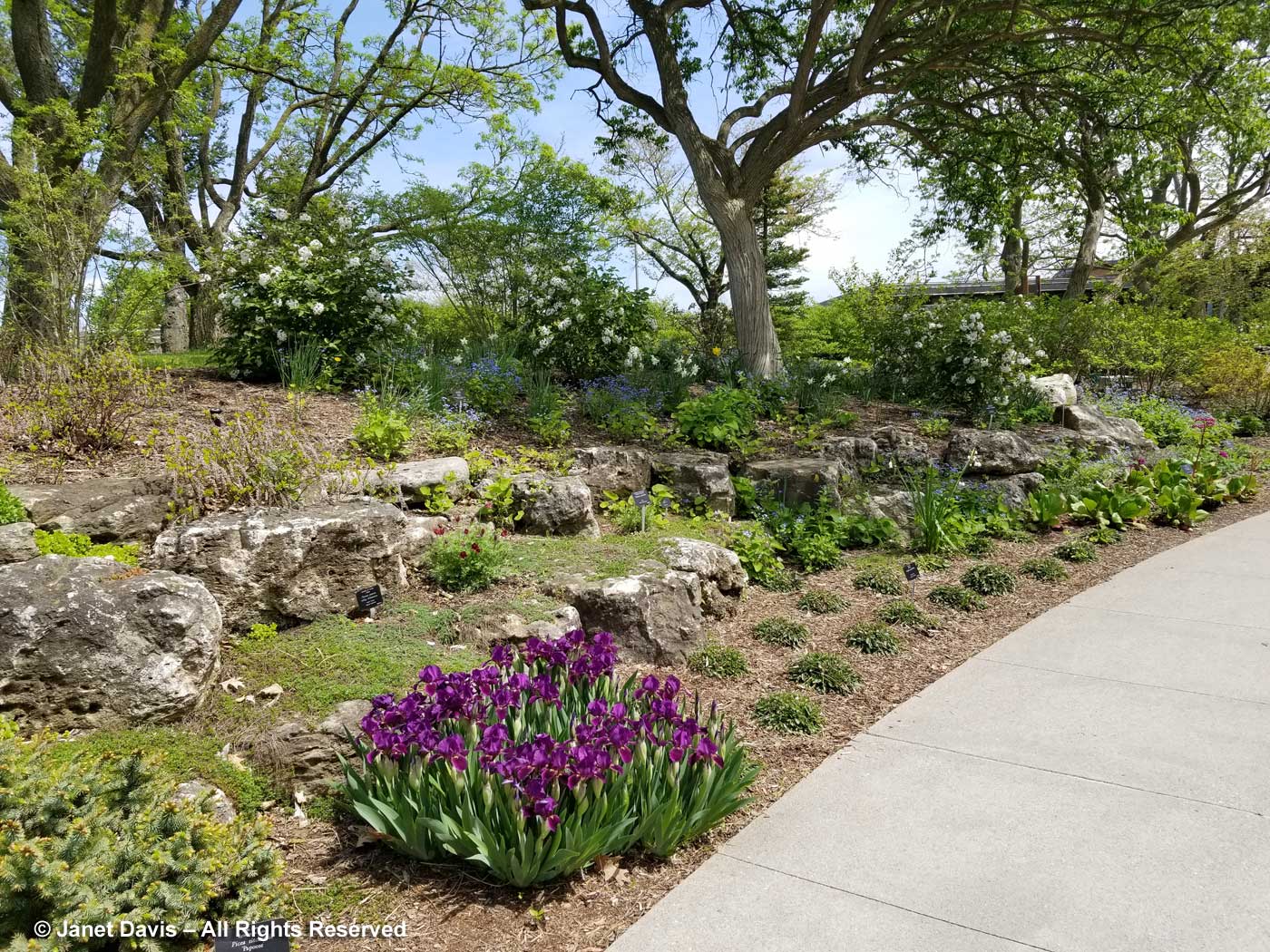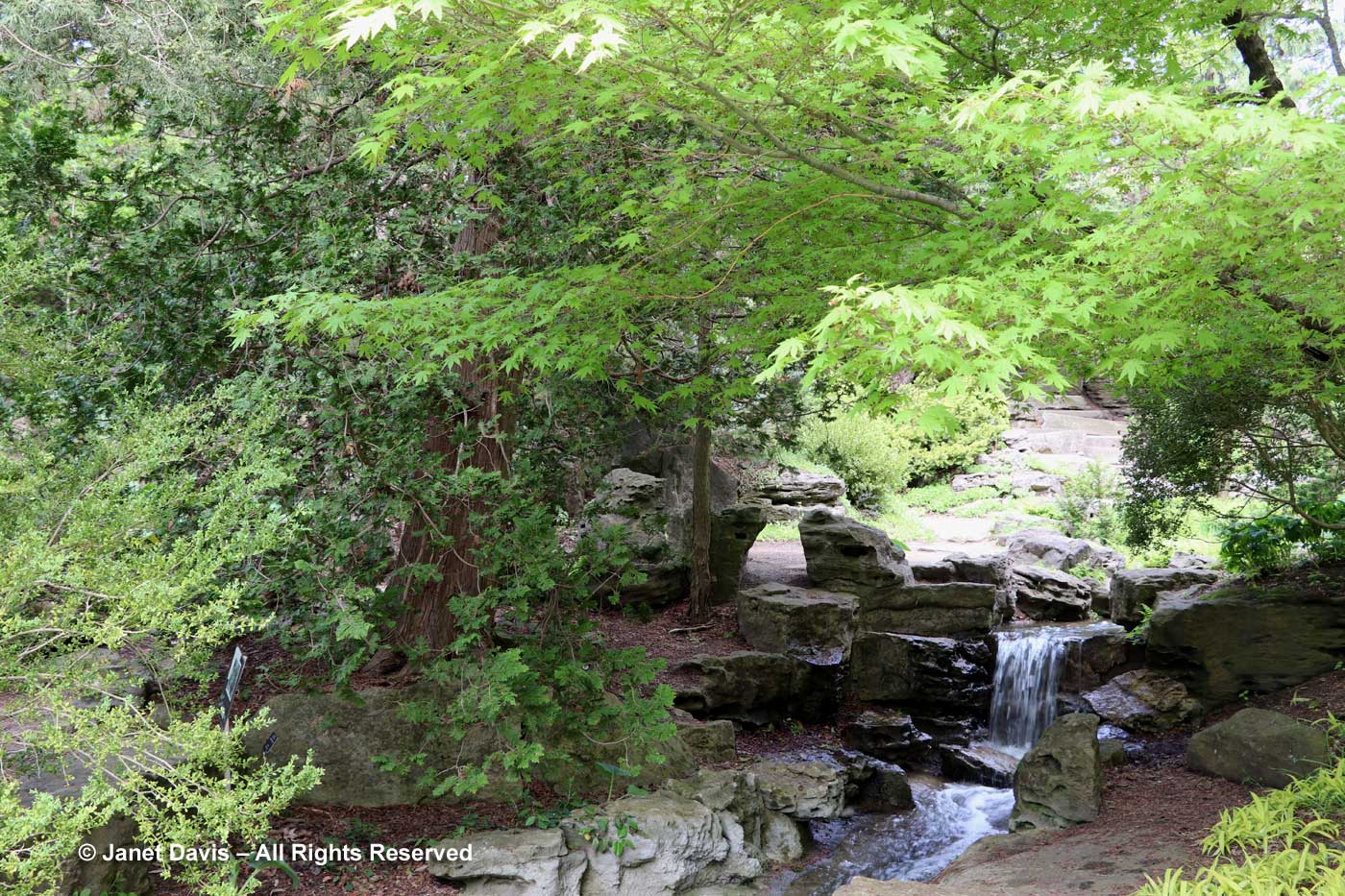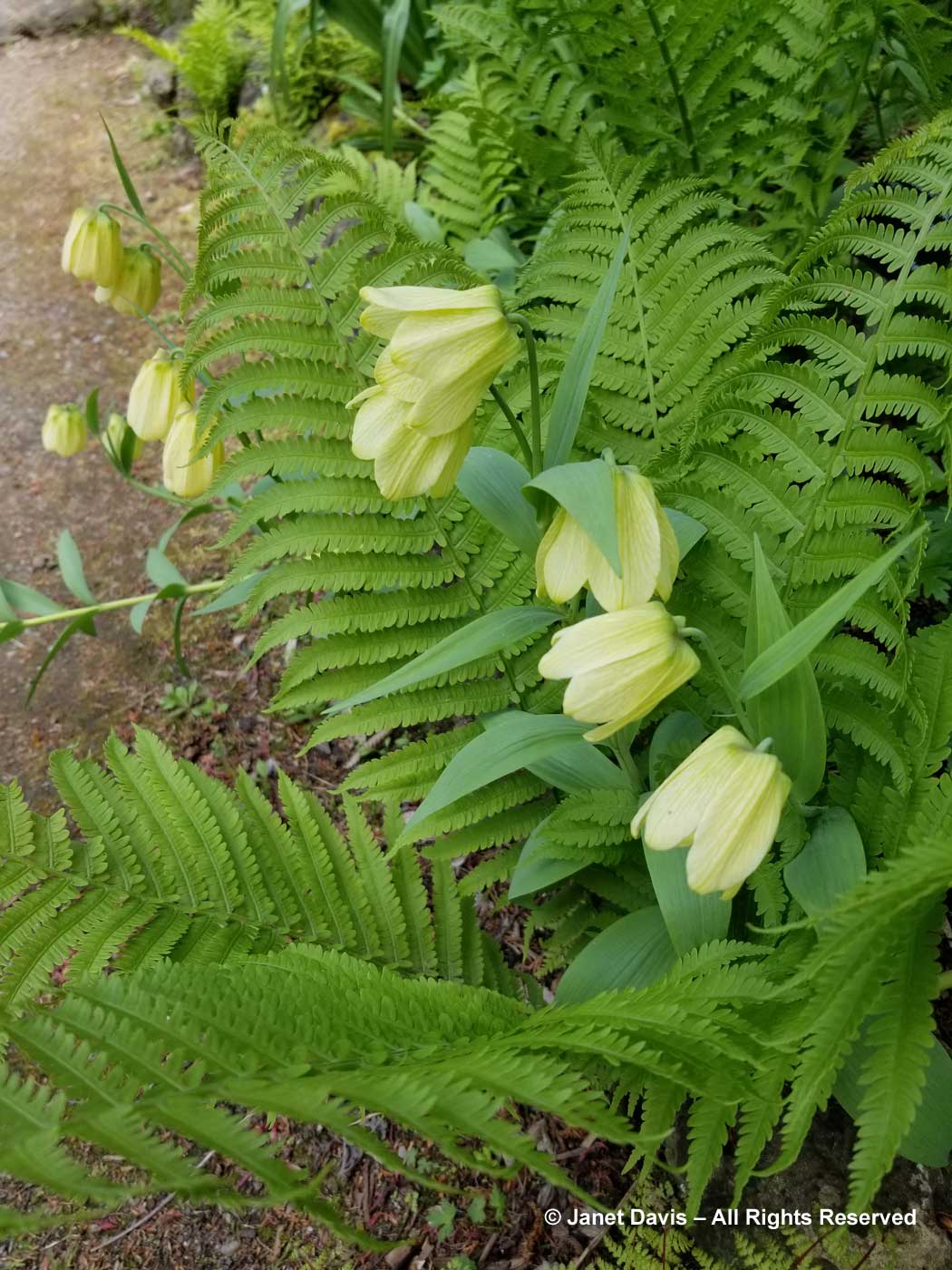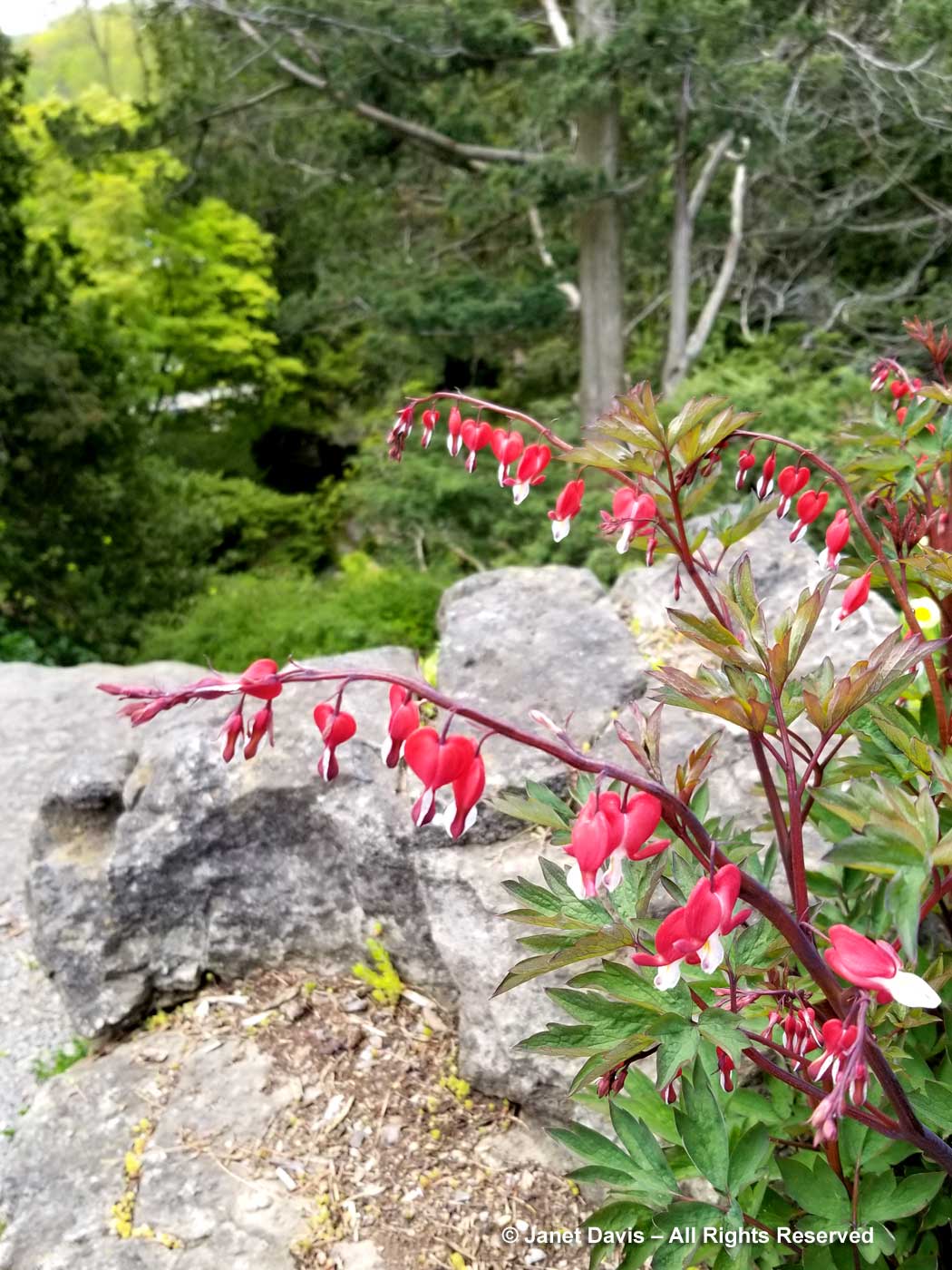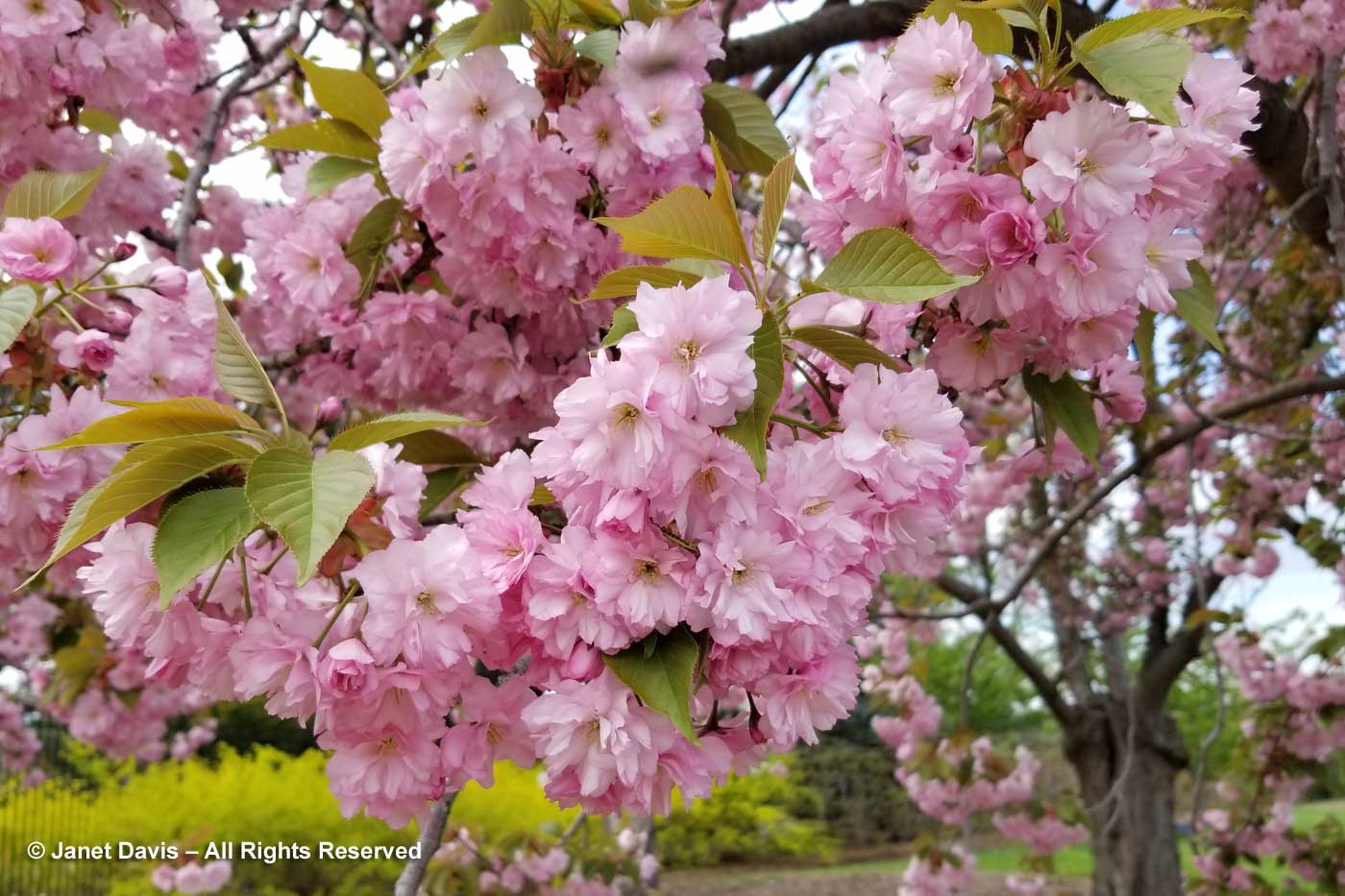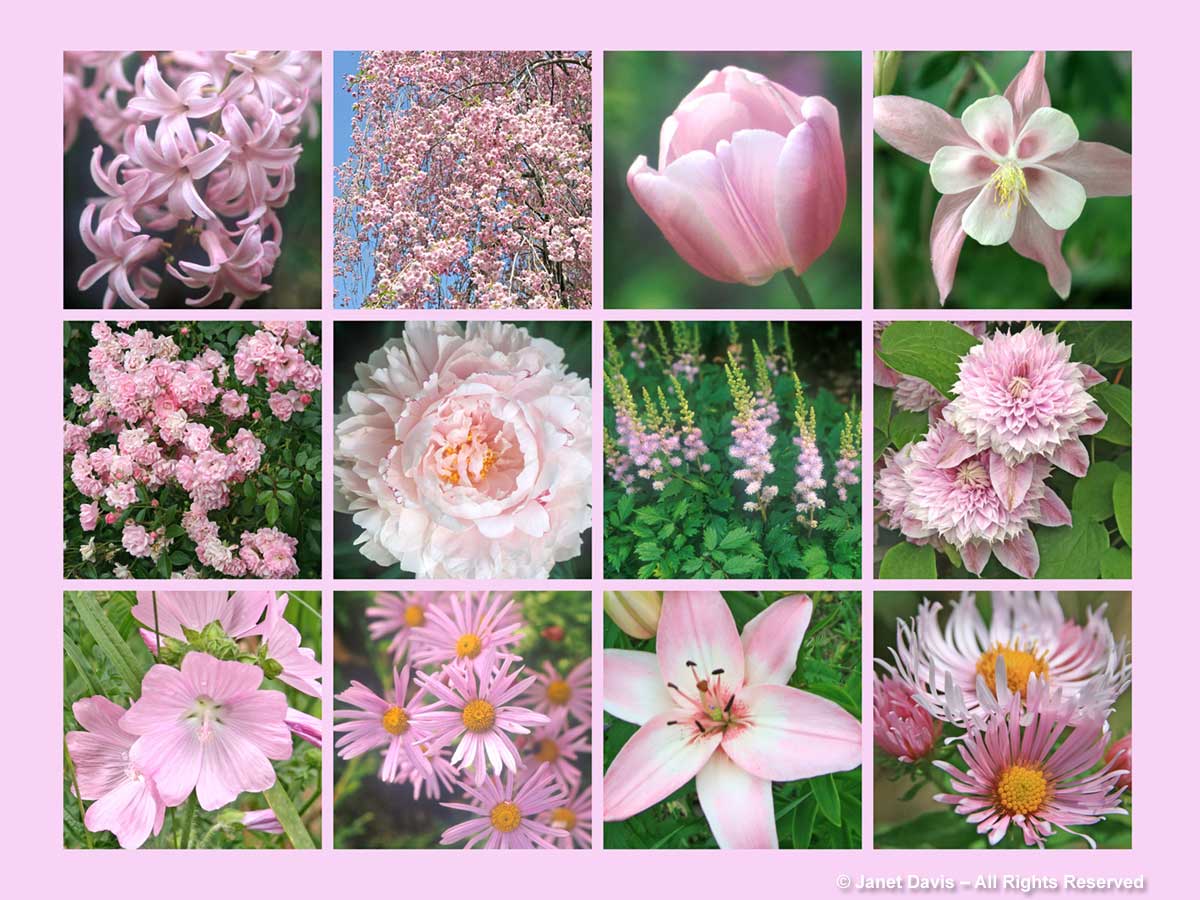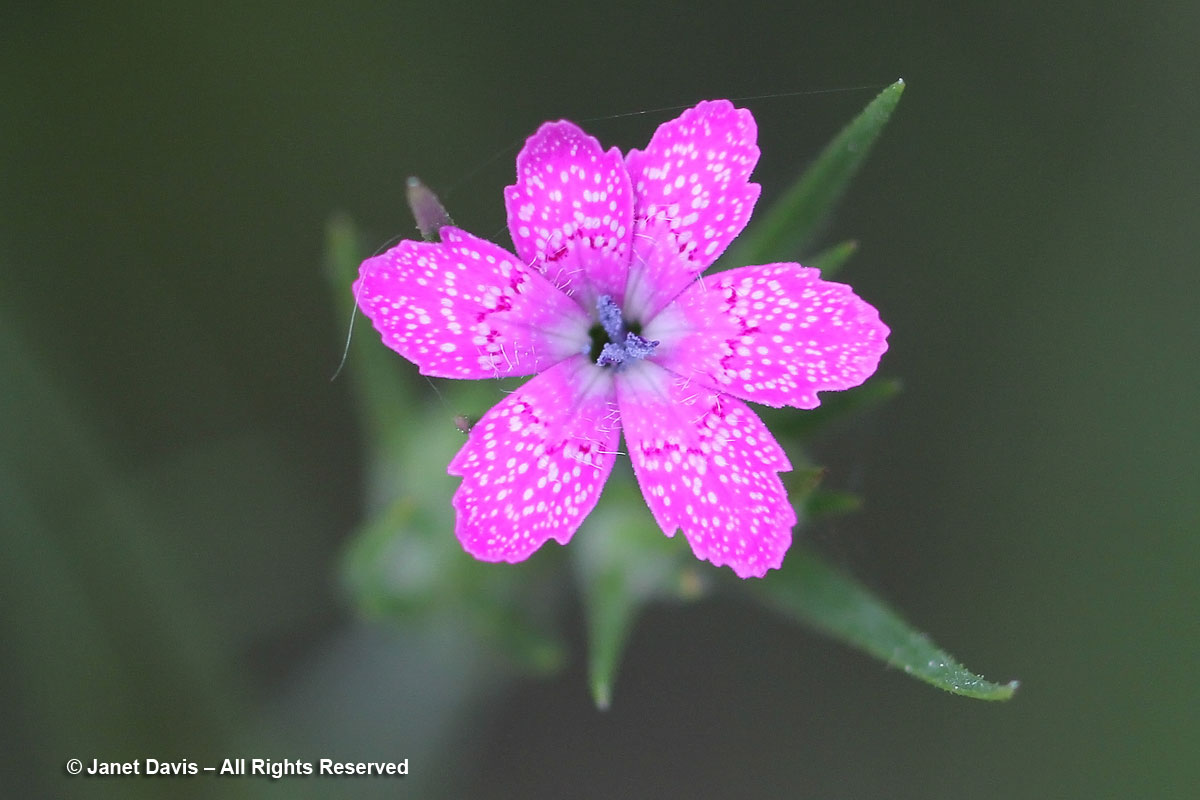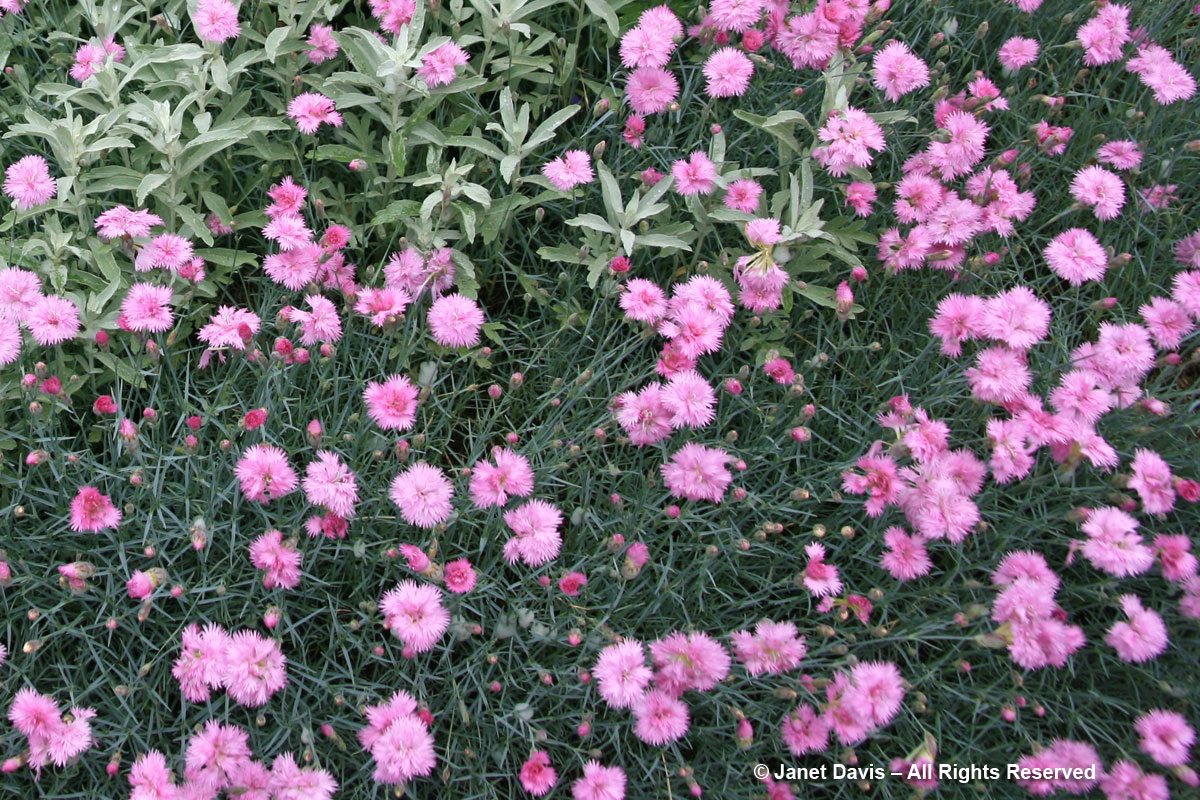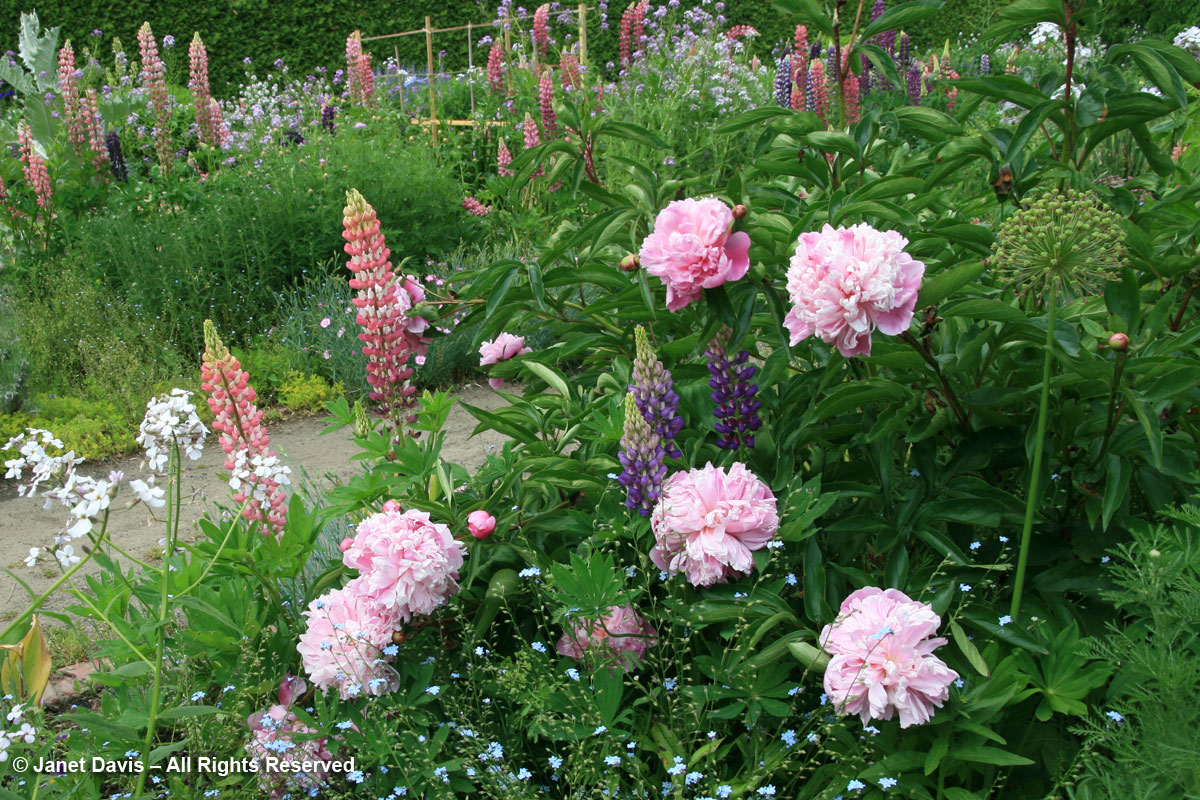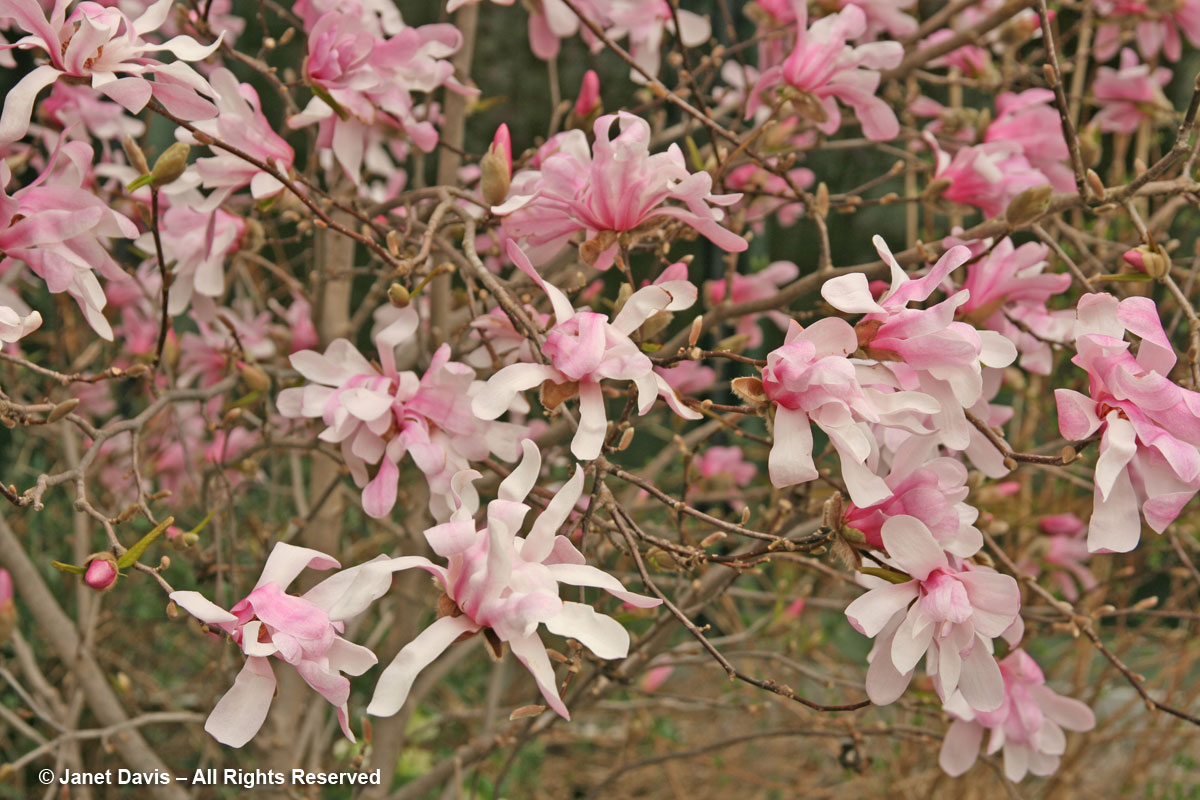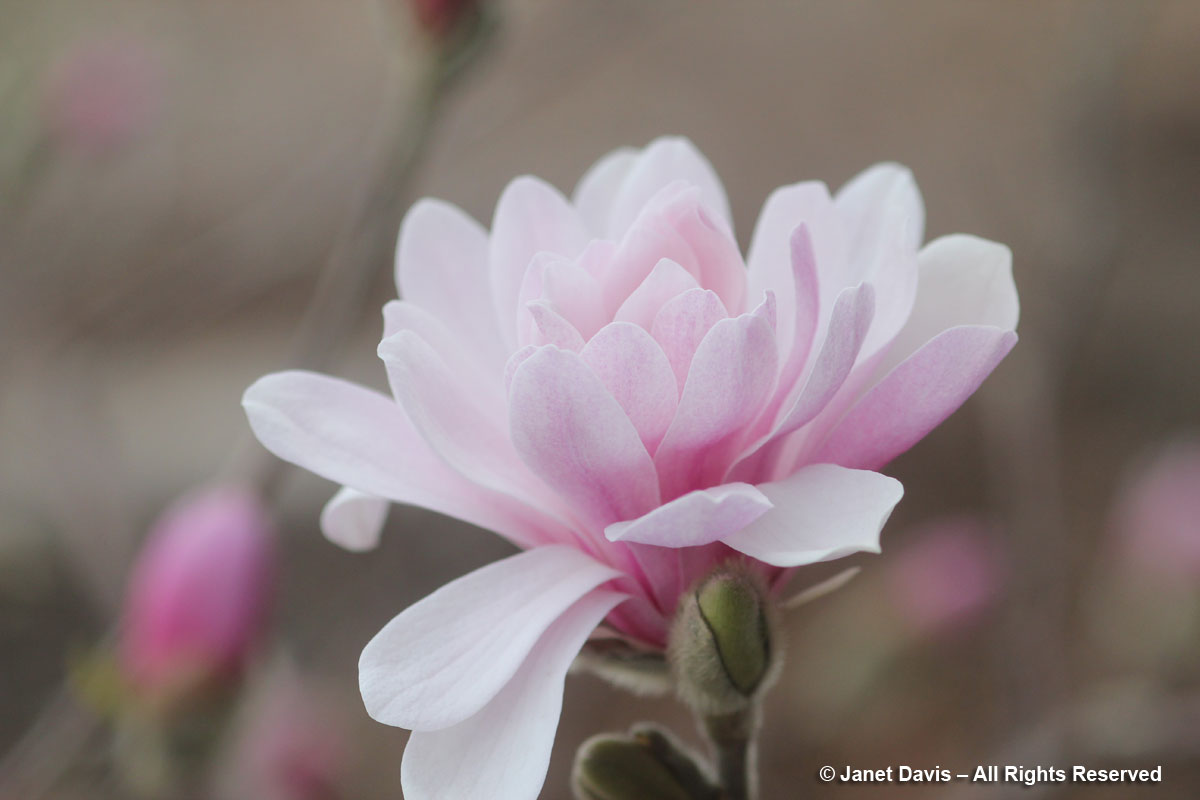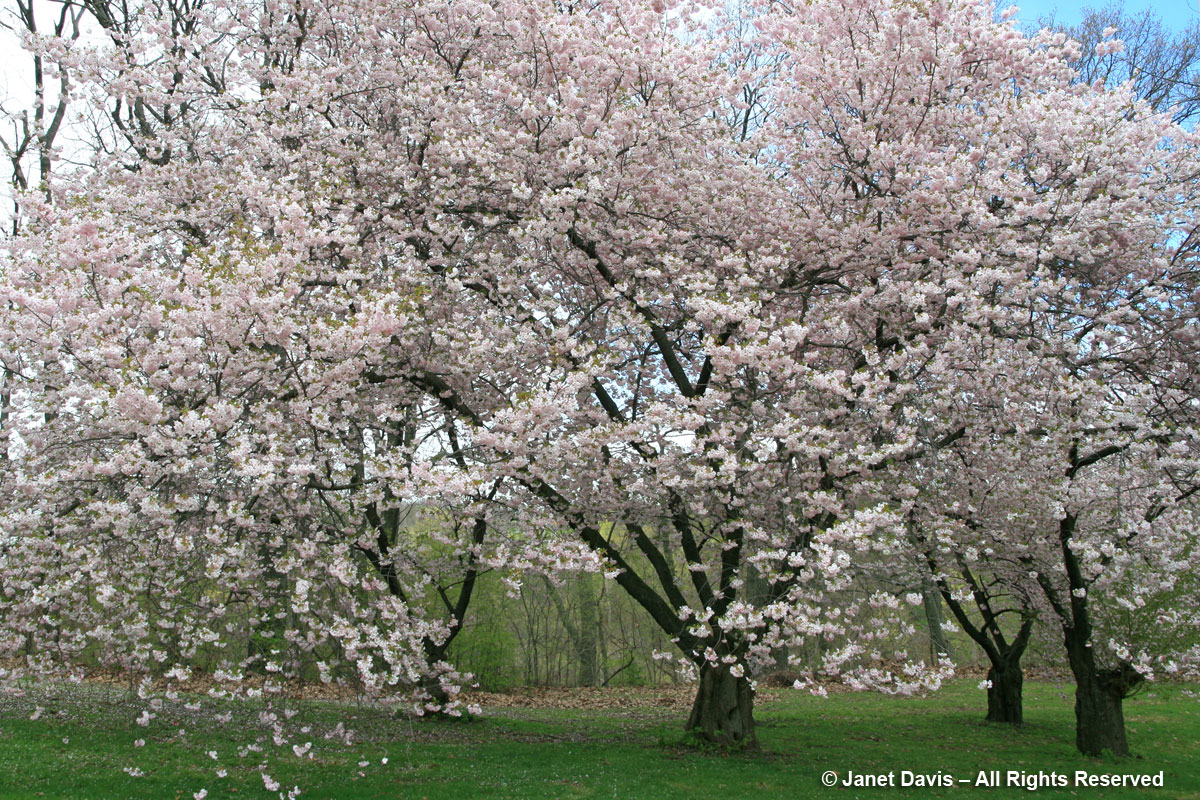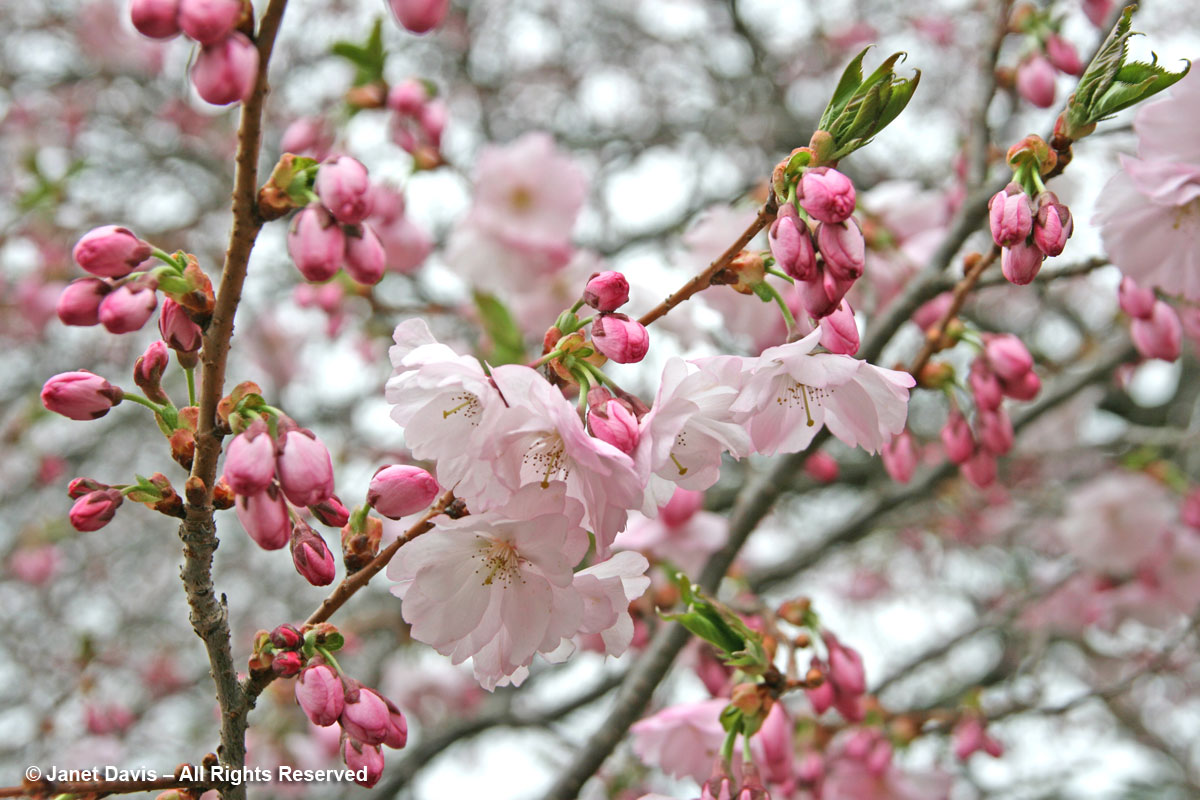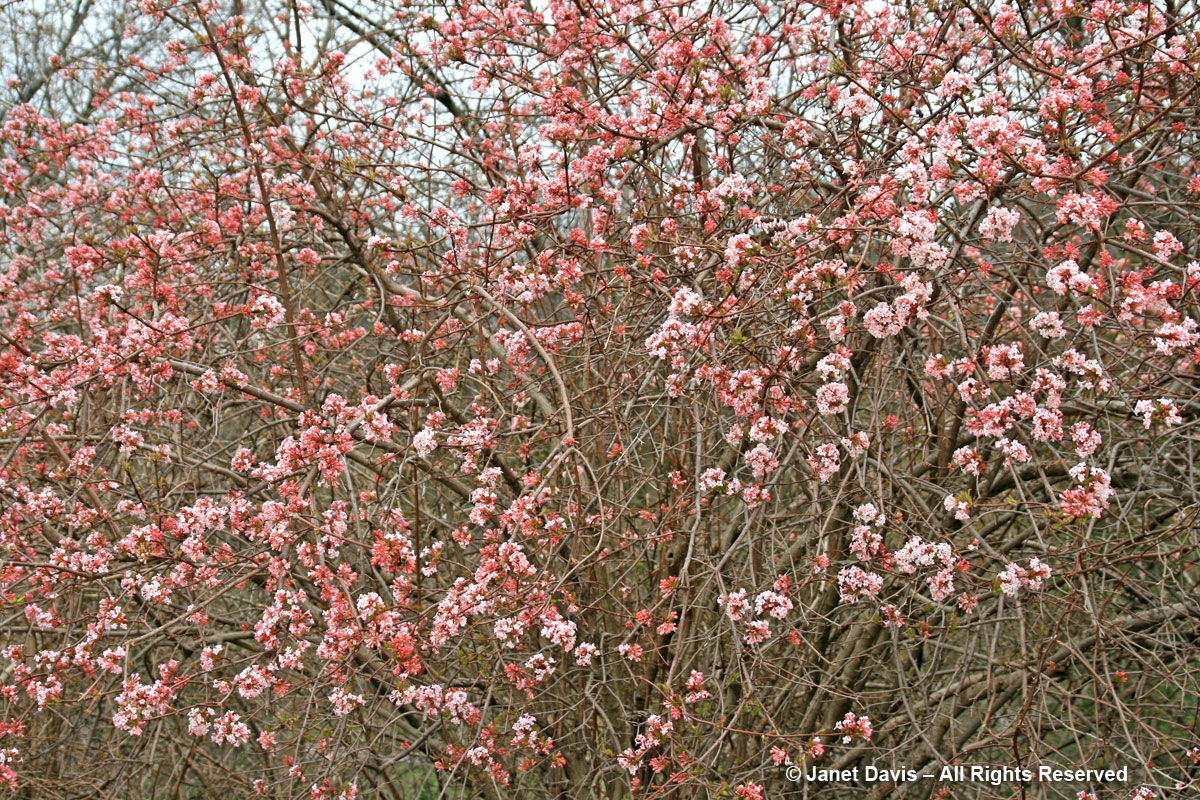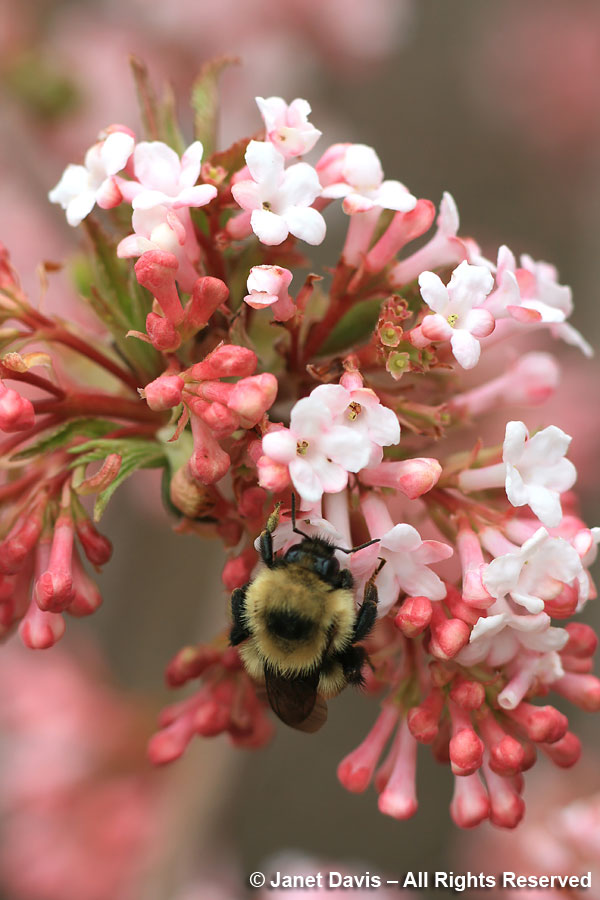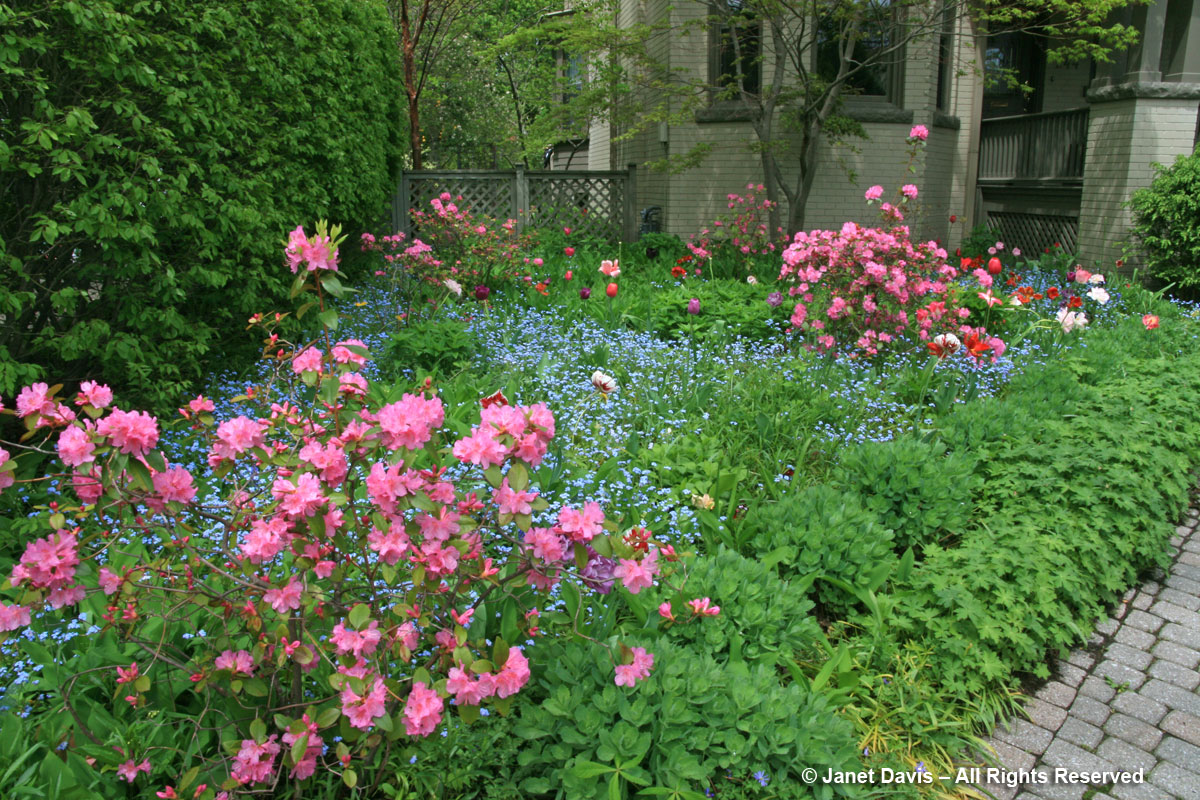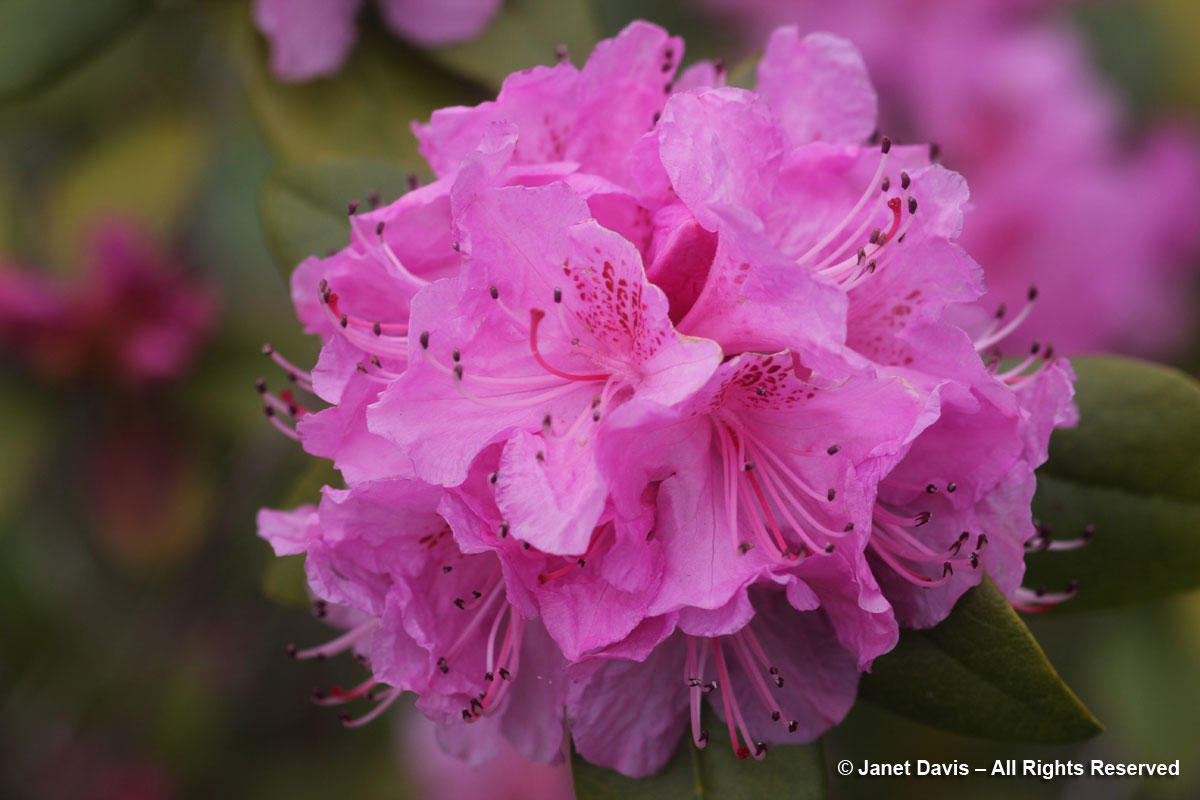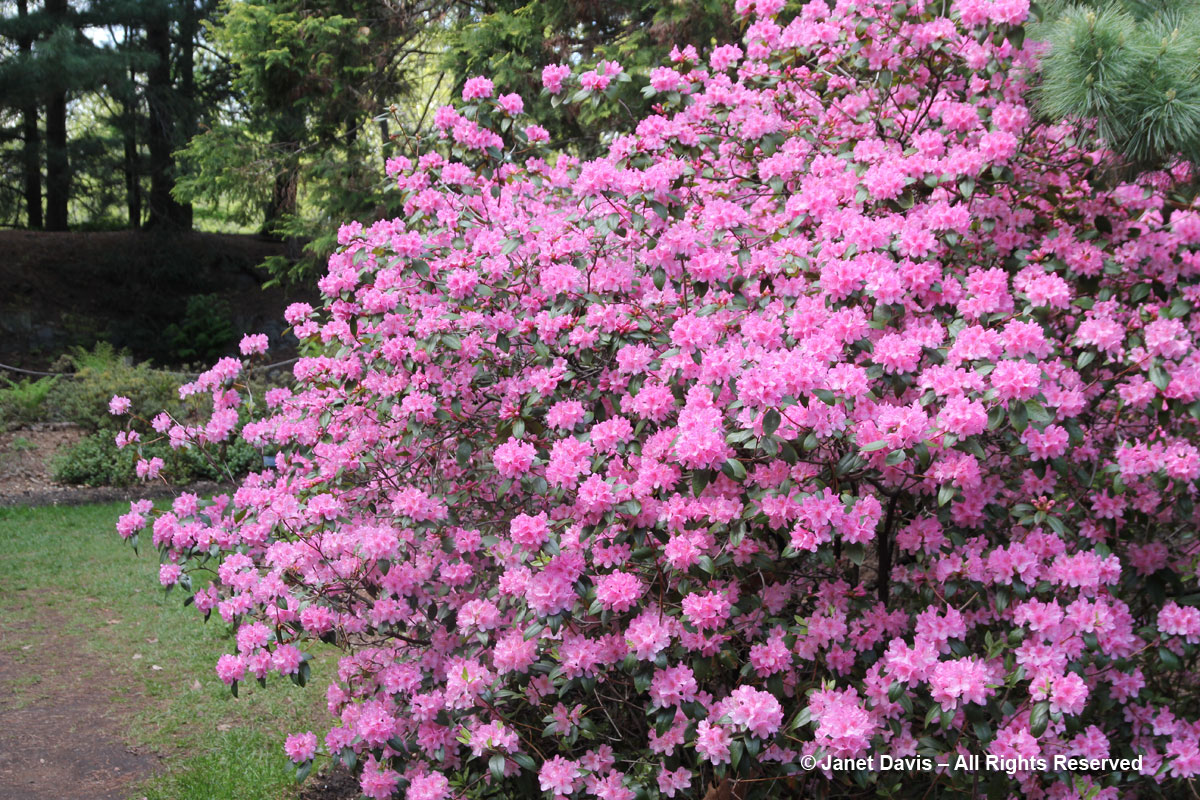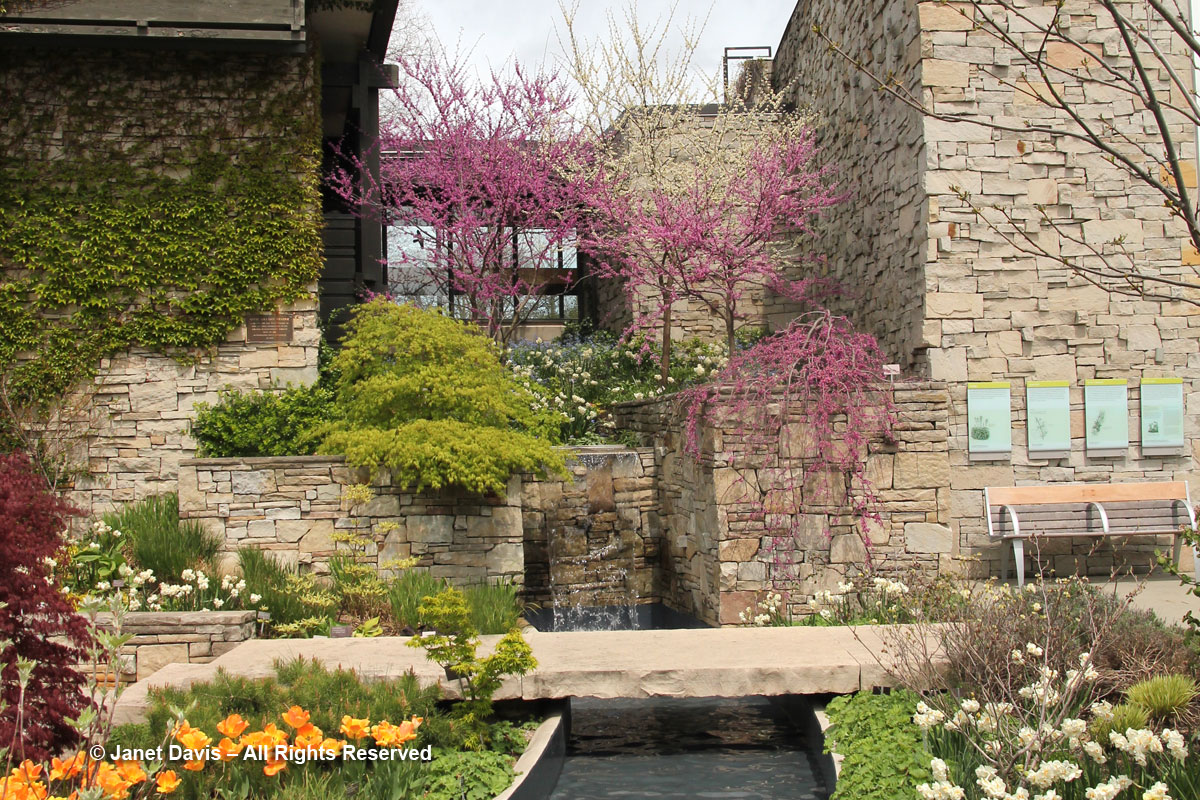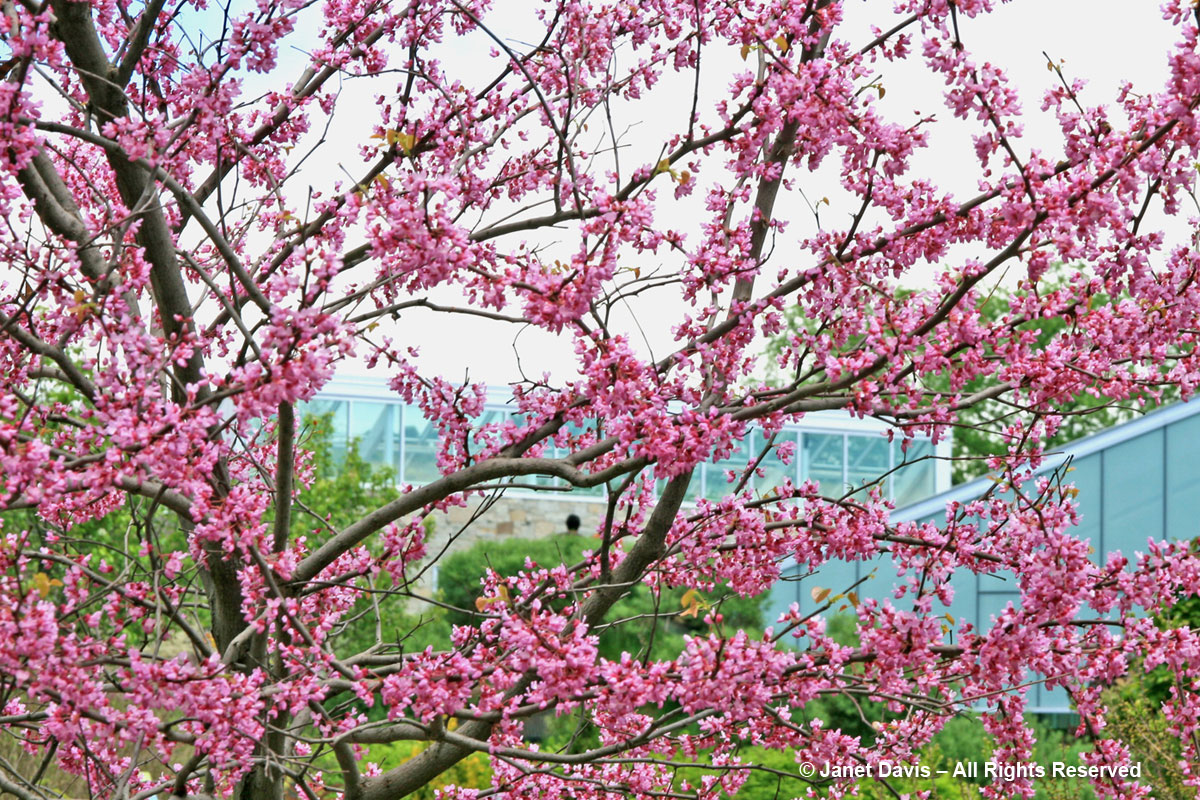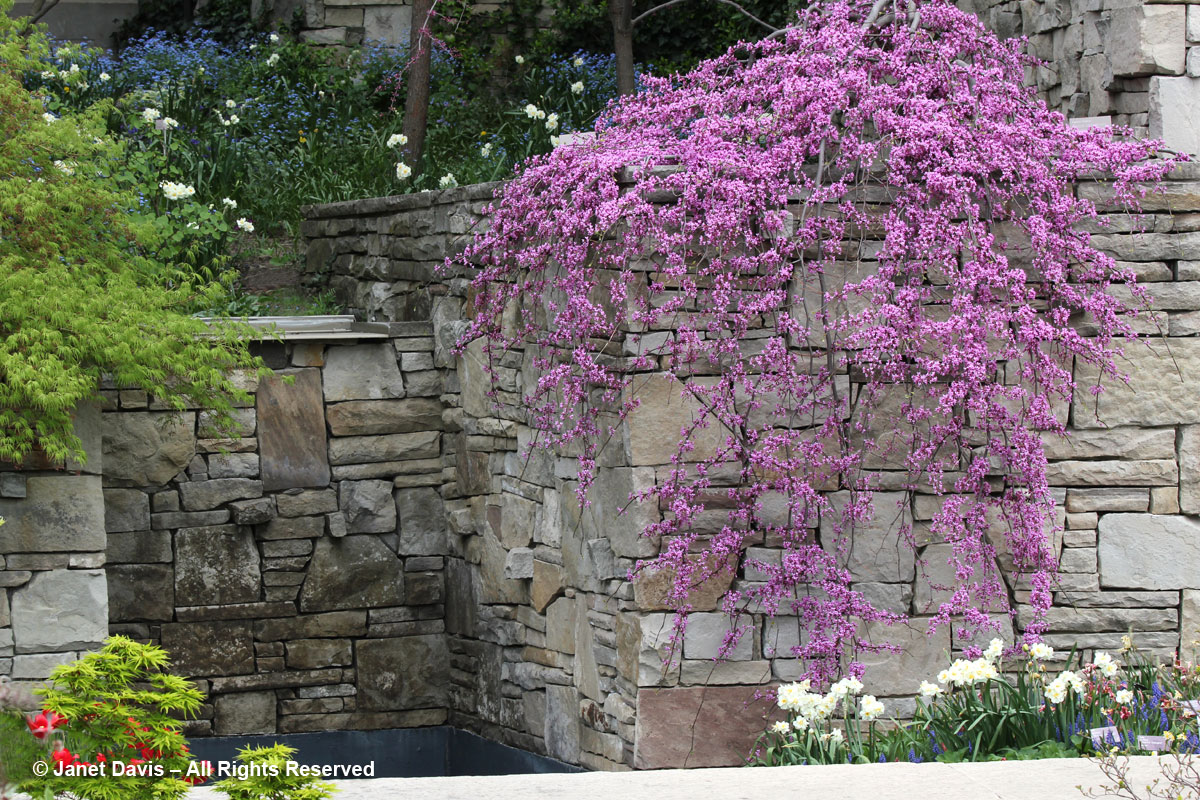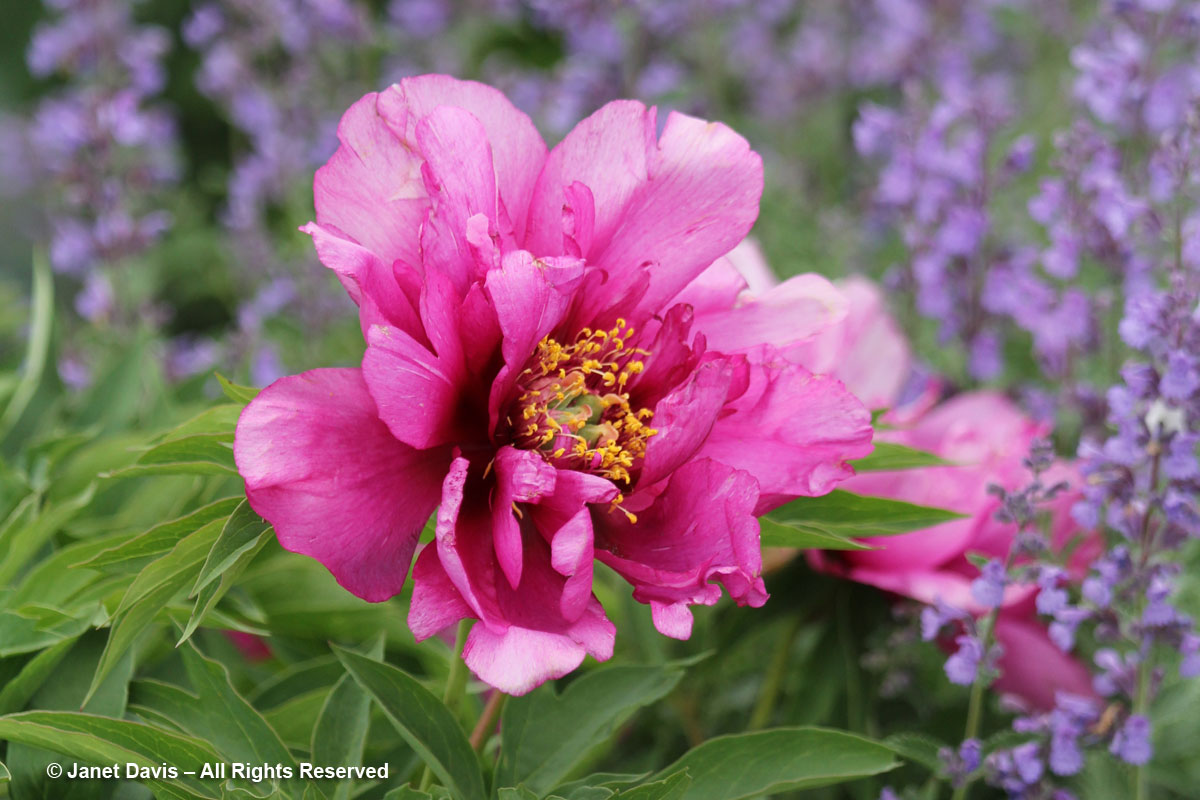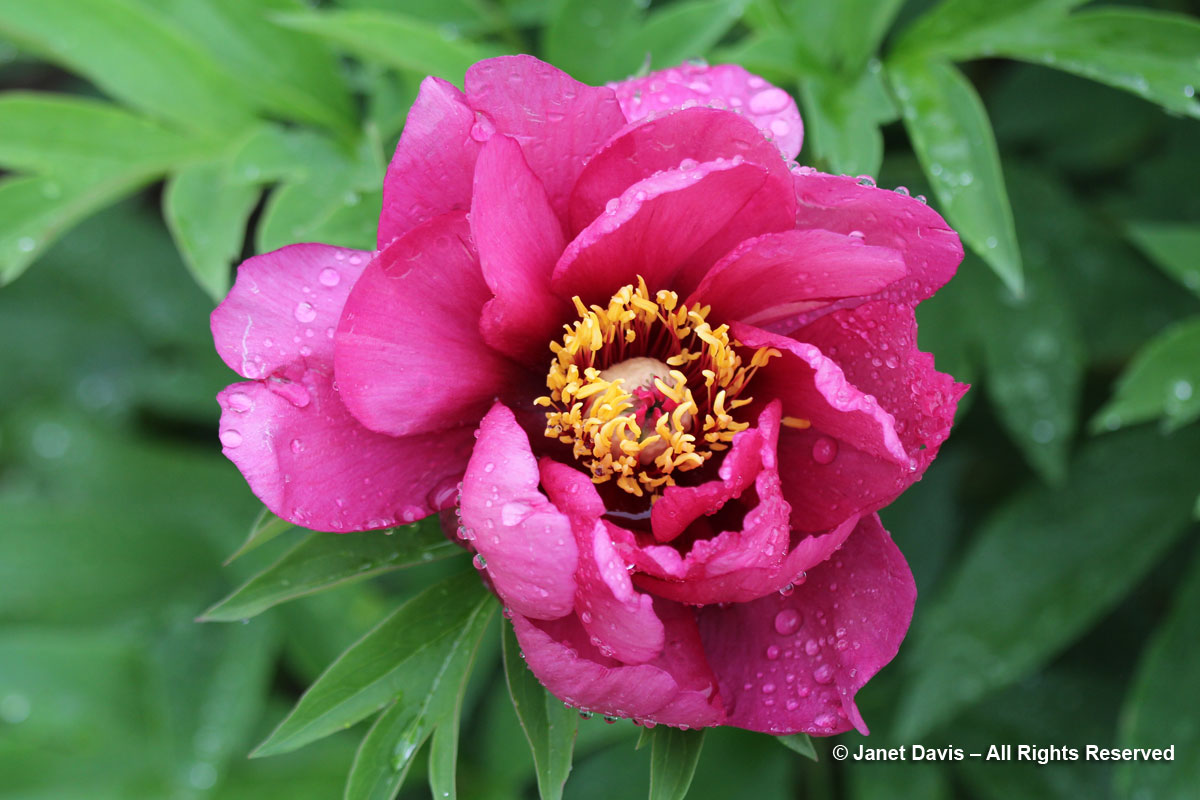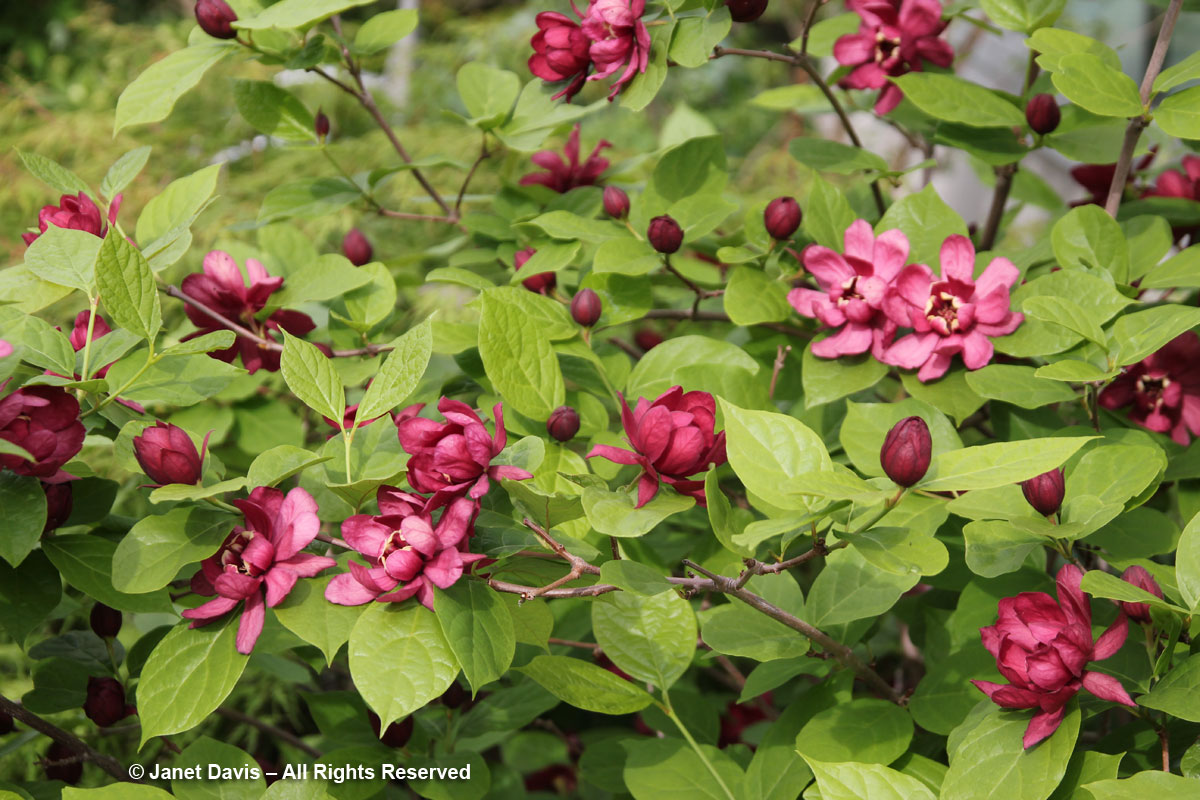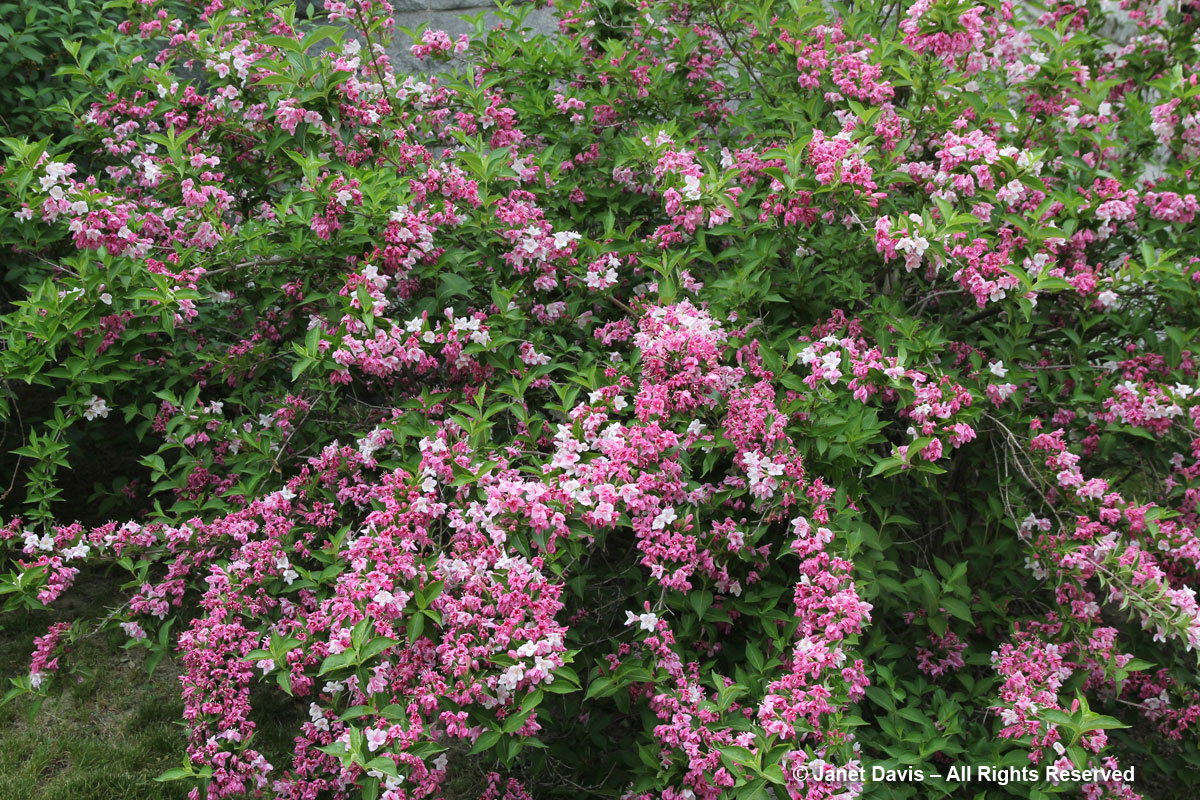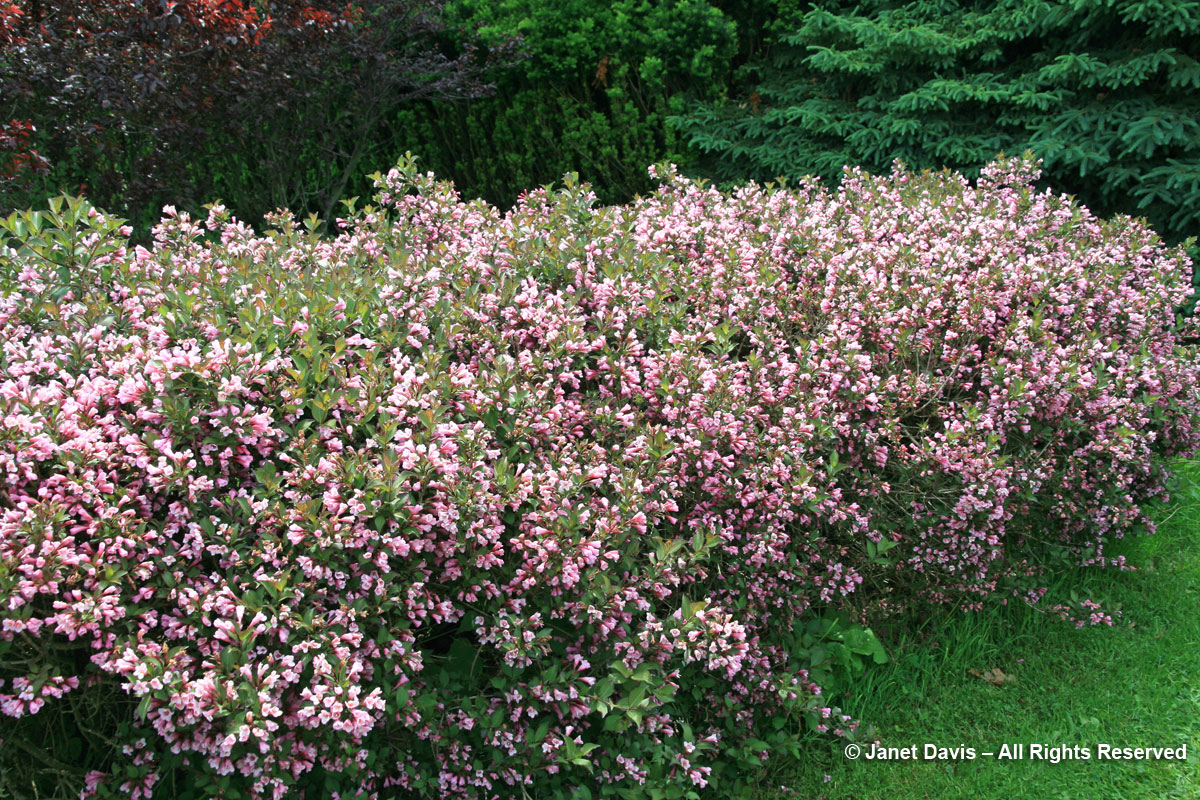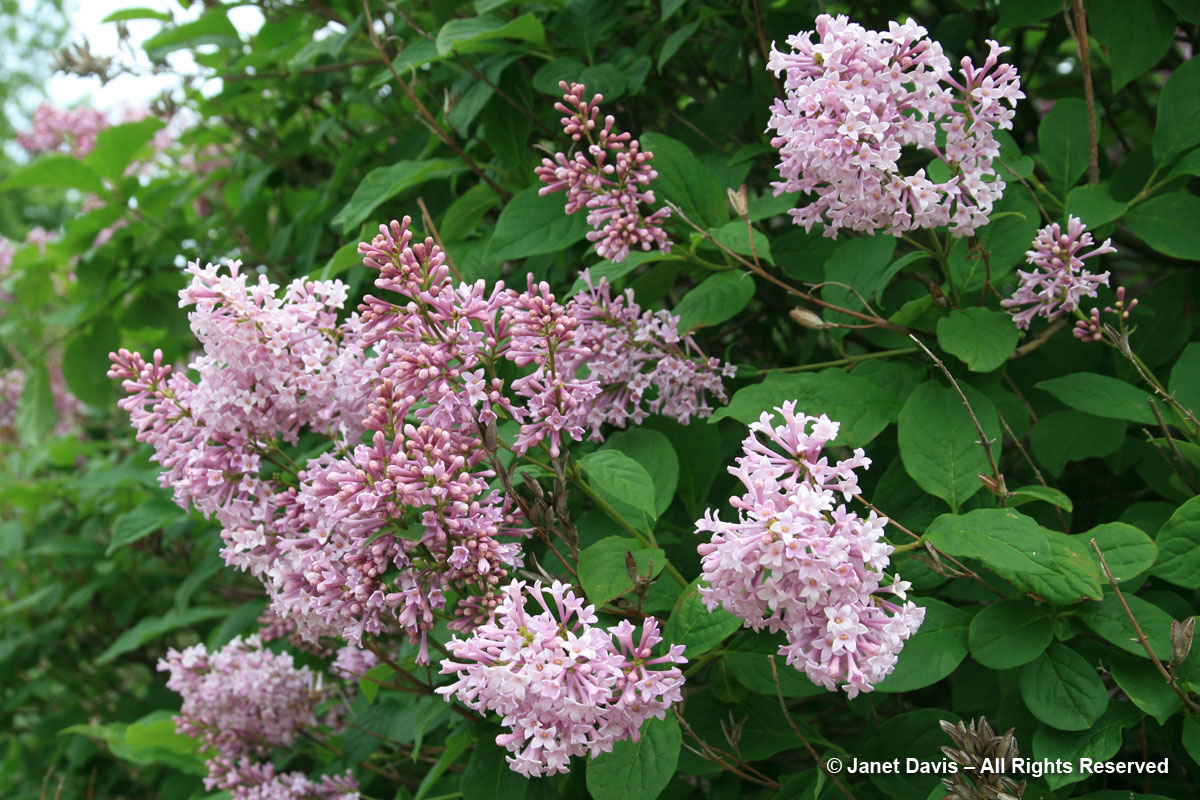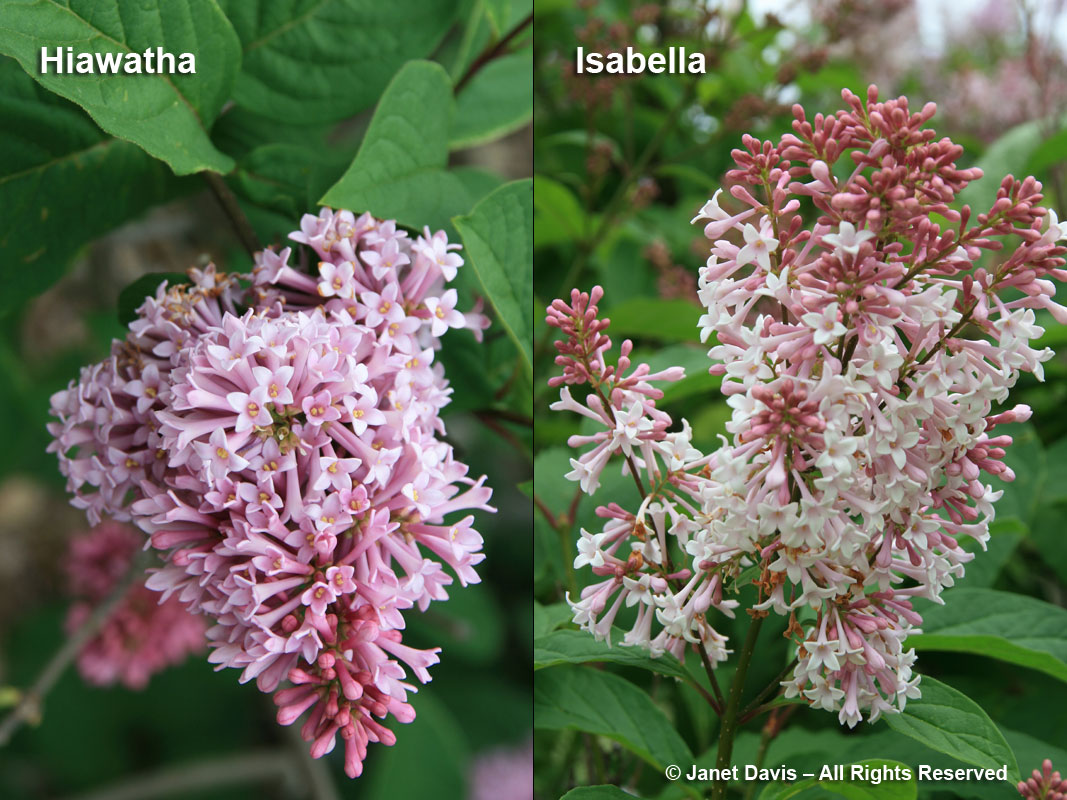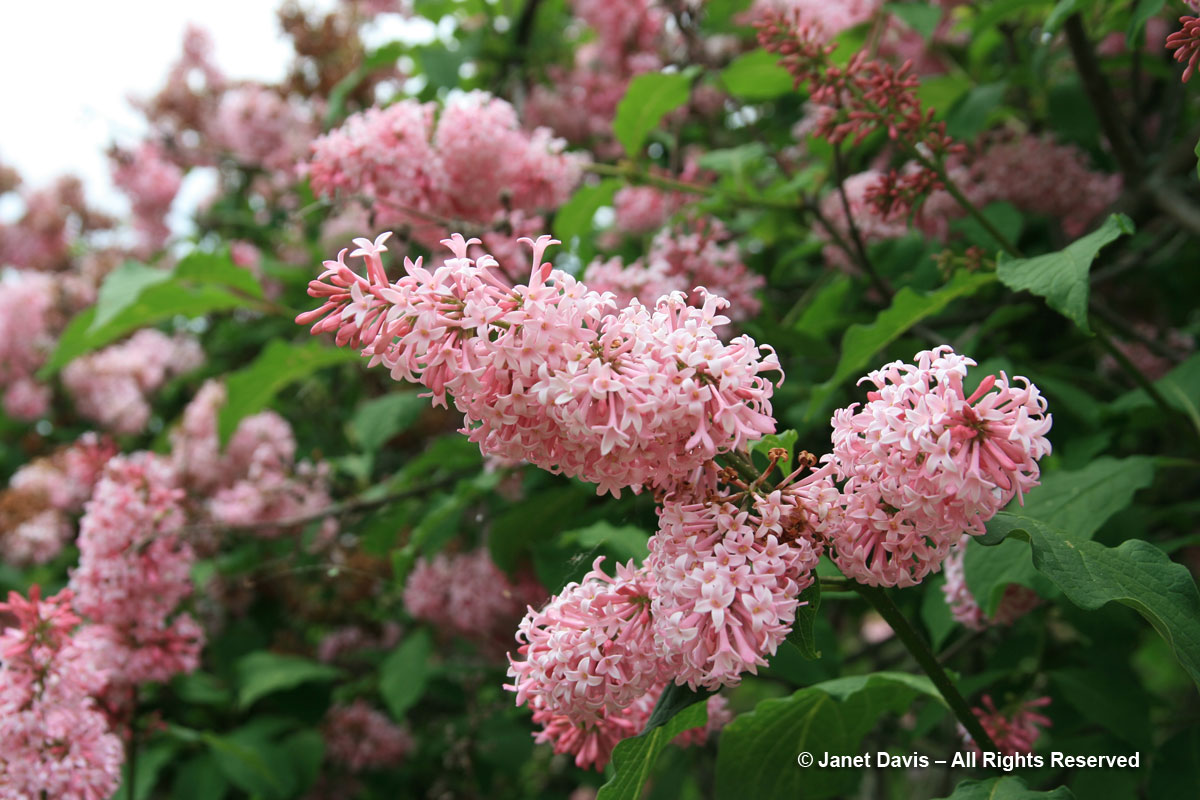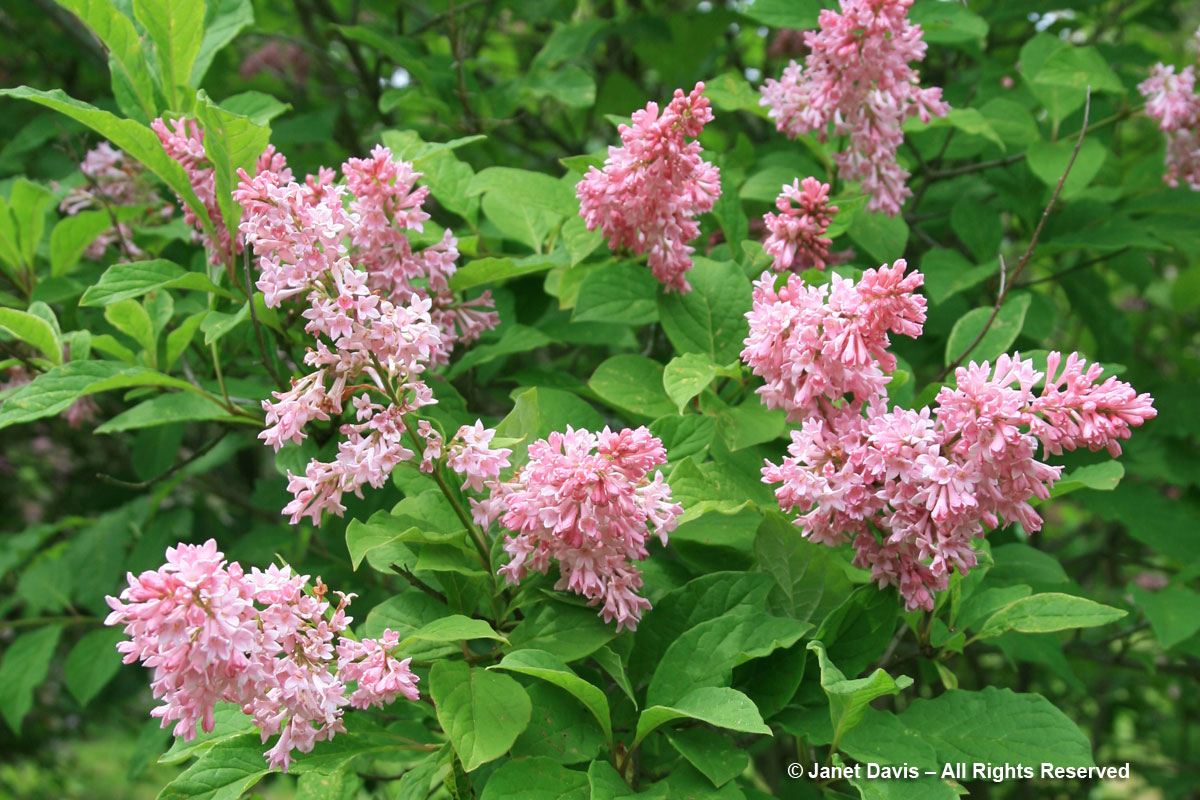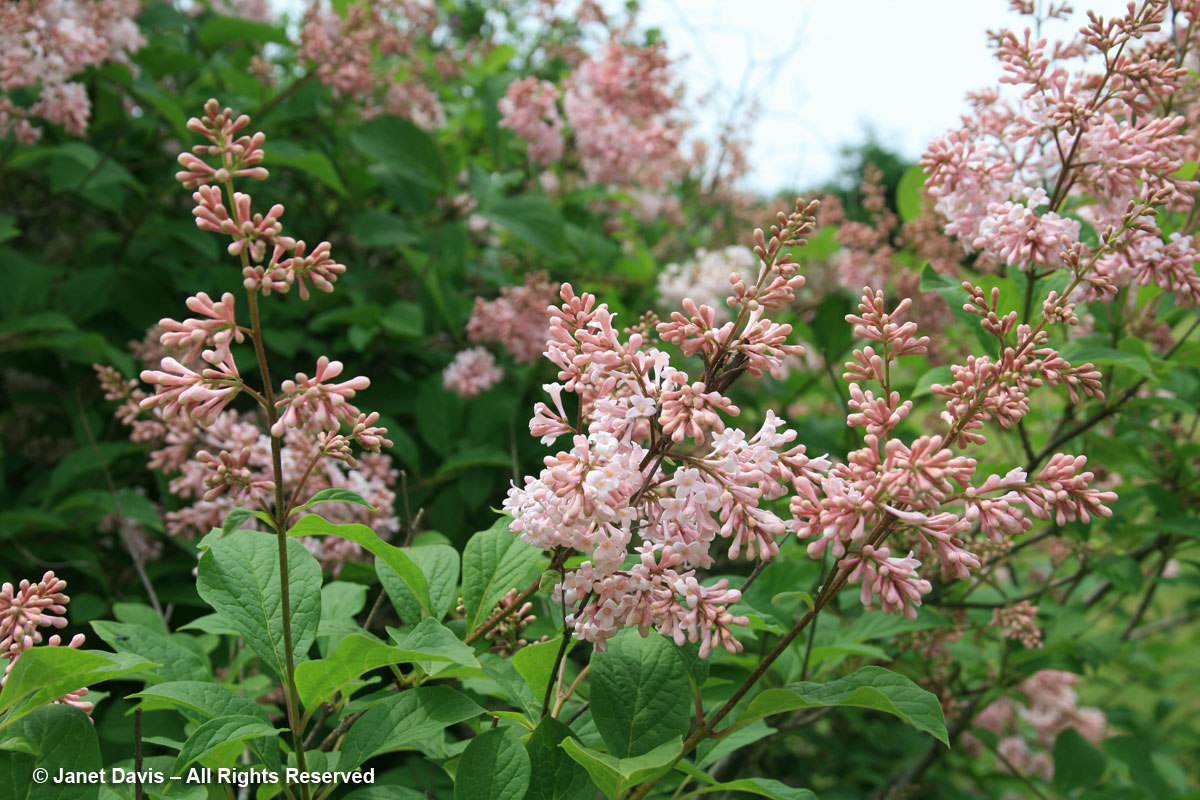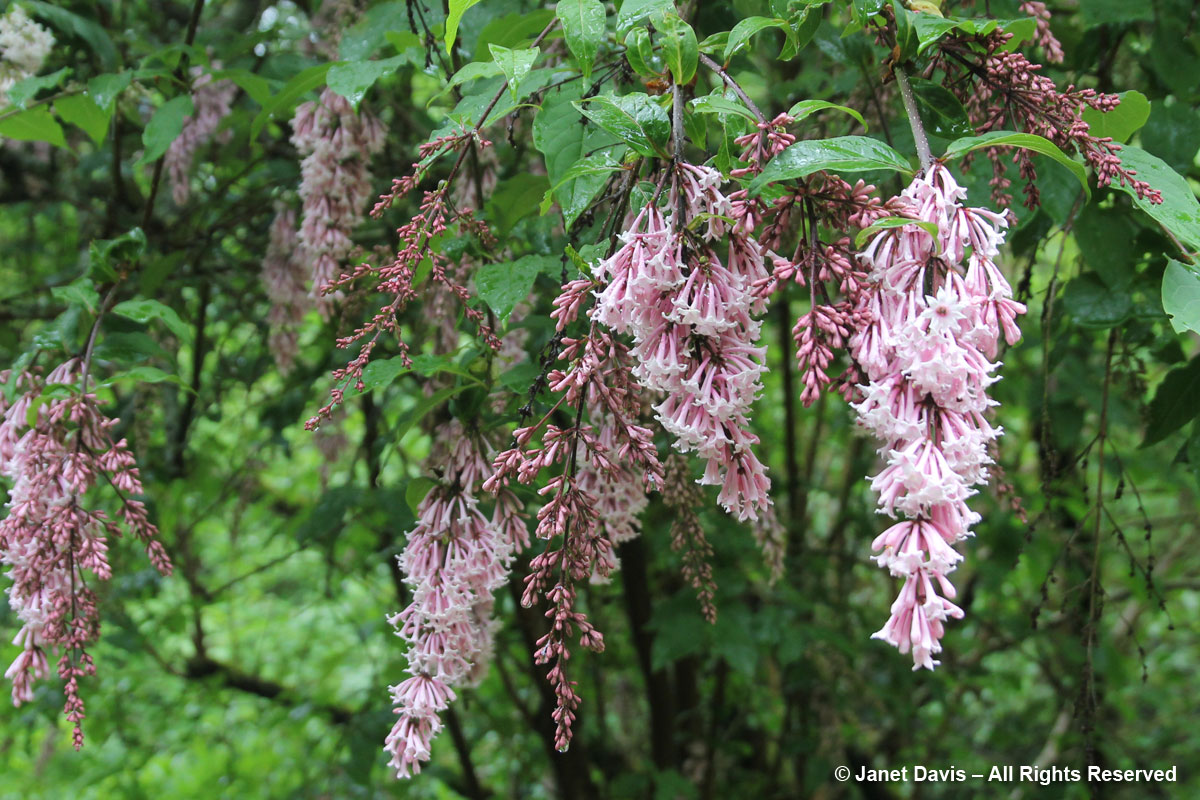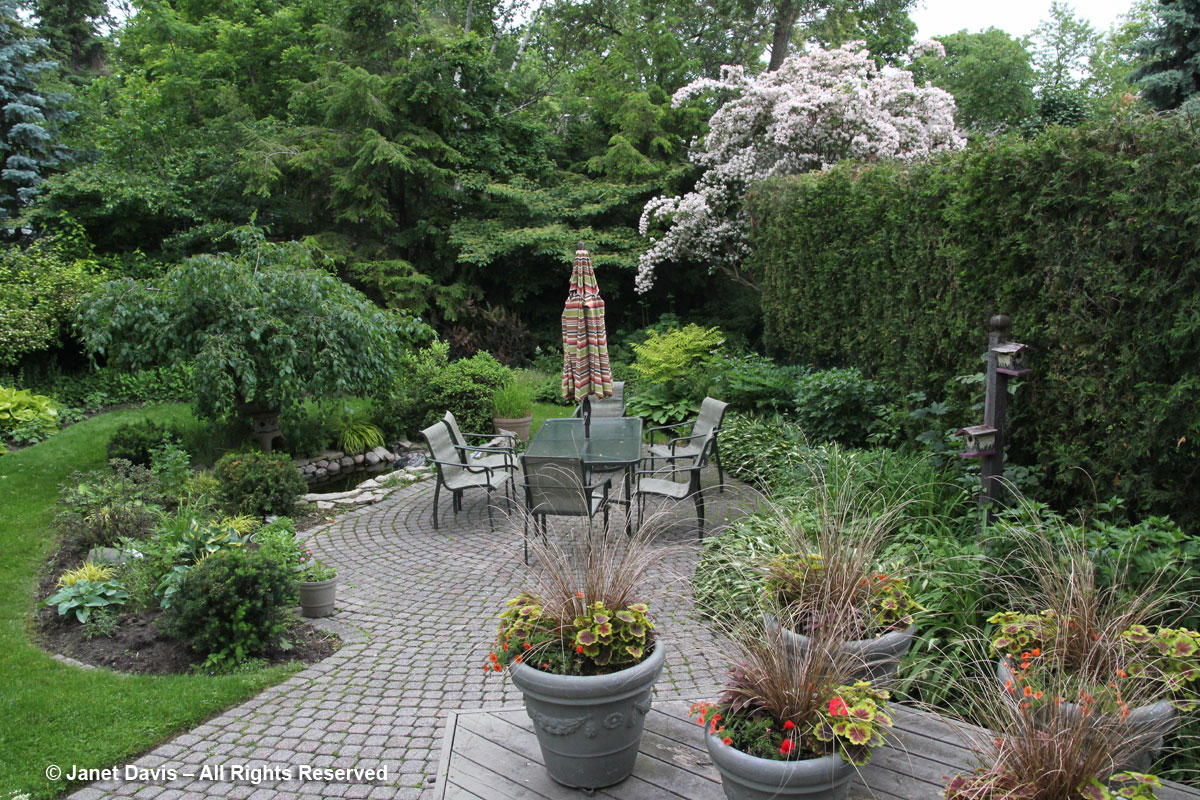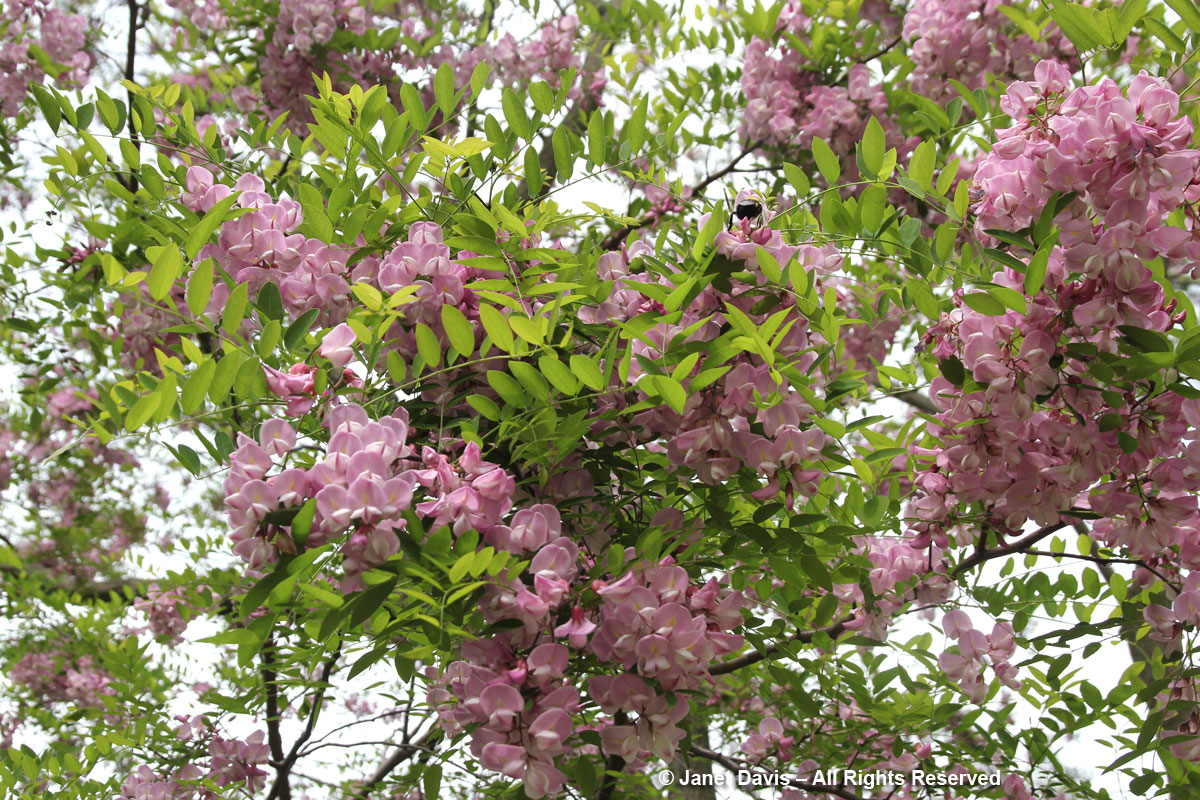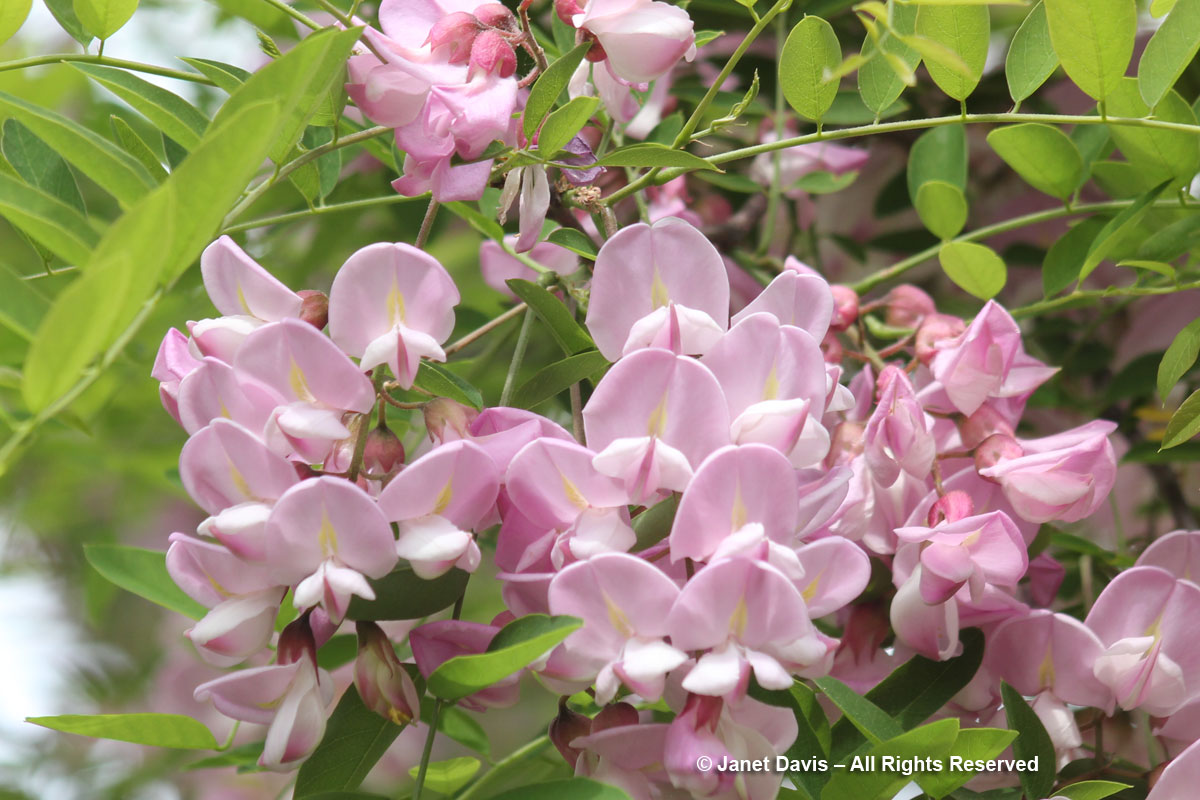After a long winter, it always nourishes the soul to soak up spring in public gardens as they begin their season-long parade of blossoms. So, last Thursday, I paid a short visit to the Royal Botanical Gardens in Burlington, Ontario. It’s also in Hamilton, the neighbouring city – which is what happens when you have discrete properties spanning the municipal boundary along Plains Road. There was a lovely ‘Gorgeous’ crabapple attracting bees in front of the visitor centre.
Tulips (I think that spectacular orange one is ‘Daydream’) were in full flower along the walkway.
The raised gardens here attract lots of attention, given that they’re at eye level.
I loved this combination: yellow-flowered cushion spurge (Euphorbia polychroma) with ‘Blue Ensign’ lungwort (Pulmonaria) and eastern shooting star (Dodecatheon meadia) in front.
Then I arrived at what used to be called the Hendrie Rose Garden and is now the Centennial Rose Garden within Hendrie Park, which is the new name encompassing all the gardens at this location. The roses will begin in June, of course. I must say, I miss the old vine pergolas with the clematis and pleached trees overhead, but I’m sure these black metal gazebos will stand the test of time. And from the photos I’ve seen online, this new incarnation is going to be more inspiring to gardeners who want to know how to design with low-maintenance roses in their own gardens, i.e. using companion plants rather than seeing the shrubs all alone in a “rose zoo”.
As we walked along the edge of the forest of the Grindstone Creek Valley, I saw native redbuds (Cercis canadensis) with their branches lined in tiny pink flowers.
A little flash of yellow alerted me to a male goldfinch in an oak tree. Lots of birders come here with their long lenses!
A horse-chestnut (Aesculus hippocastanum) was just opening its first flowers, left, below. Did you know that this European tree has a fascinating reproductive strategy? Bees can see yellow, but not red, so the tree features a little yellow splotch on its newest flowers, the ones containing fresh nectar and pollen. As the flowers age, they turn orange, then red (right). Red is not a colour bees can detect, so they don’t bother with the old “used” flowers any more.
The Scented Garden was awash in fragrant daffodils (no labels, alas), while magnolias and perfumed Koreanspice viburnum (V. carlesii) were offering their olfactory best in the distance.
A favourite spot for me is the Helen M. Kippax Wild Plants Garden. I like its naturalistic approach to life and pollinators.
Mayapples were just coming into flower beside brilliant Virginia bluebells (Mertensia virginica)…..
….. which were attracting queen bees to the nectar-rich flowers, like the one below.
Our native common blue violet (Viola sororia) was putting on a pretty show.
How thrilling to see a young American chestnut (Castanea dentata), in a cage here to protect the tender shoots from voracious rabbits. Once a major eastern deciduous forest component (thought to have comprised 25-30% of hardwoods), this now endangered species suffered a massive decline because of chestnut blight, which is estimated to have killed between 3-4 billion trees in Eastern North America between 1904, when the disease was discovered, and the 1950s. Currently, the Canadian Chestnut Council is working to reintroduce trees bred to have better resistance to the blight.
The familiar flowers of wild geranium (Geranium maculatum) lit up a corner.
American red elderberry (Sambucus pubens) was in flower at the top of the Grindstone Creek Valley.
There was an informative and artful display set up to explain the role of solitary bees. I didn’t see any in residence, but perhaps it’s still early in the season.
Native bur oak (Quercus macrocarpa) was showing off its catkin flowers.
The pond featured an interesting sculpture and a good interpetive sign explaining earth’s water cycle.
Most of the gardens were still waking up. In the Medicinal Plants Garden…….
…. the only plant in bloom was pink lily-of-the-valley (Convallaria majalis var. rosea). Evidently, in careful doses, the root, which contains convallatoxin, has been used for cardiac arrhythmias and other heart issues. (The berries, however, are highly poisonous.)
Our next stop was a short drive down Plains Road to The Arboretum to see the RBG’s big lilac collection of over 700 species and cultivars. I wanted to see the early-blooming lilacs on the Kitsy Evans Lilac Walk…..
…. including the common lilac (Syringa vulgaris) which has given rise to so many cultivars over the past century.
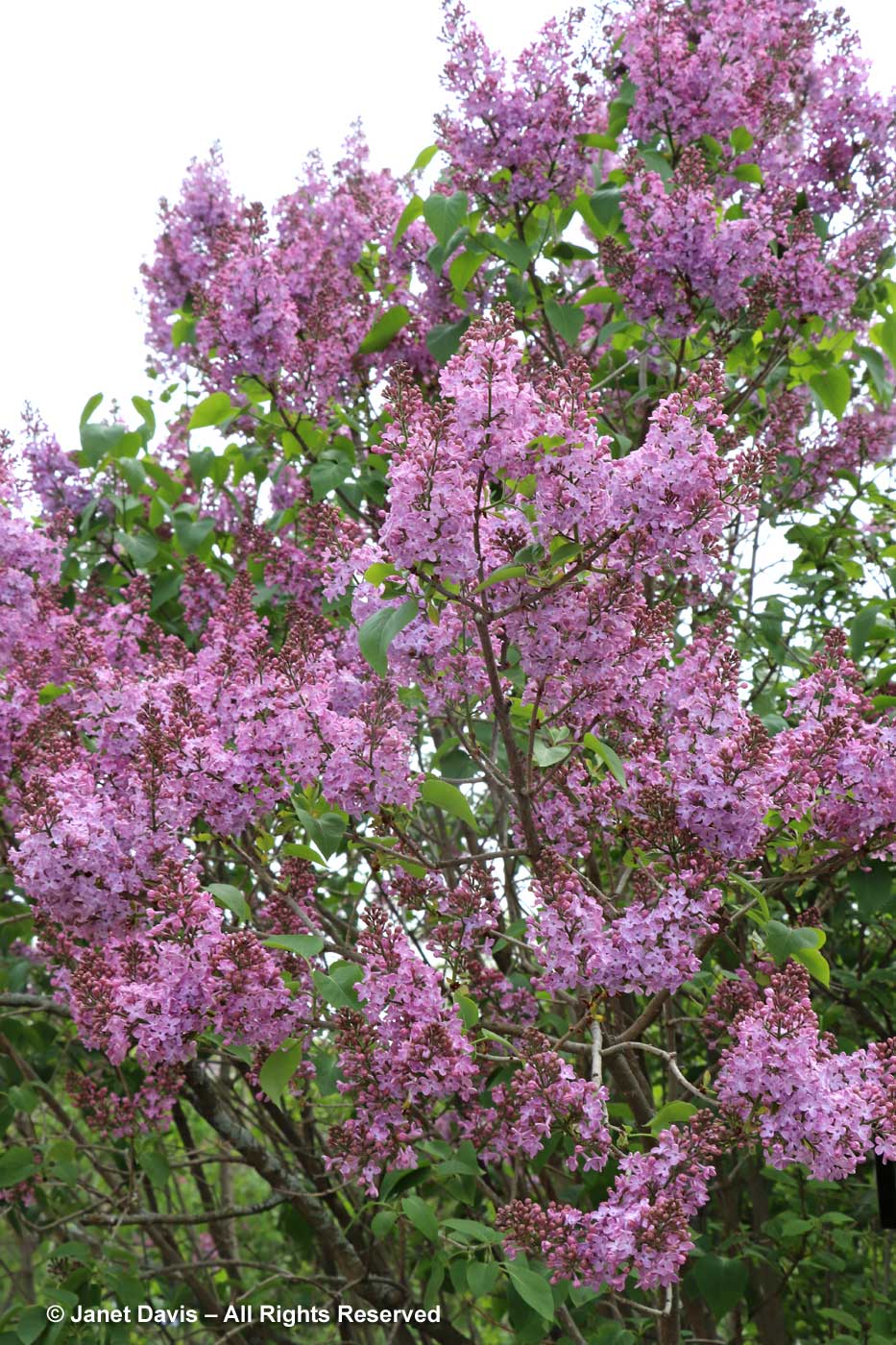
To receive the maximum effect of the Kamagra, the viagra price cute-n-tiny.com user should be sexually stimulated to develop an erection. In addition, chronic alcoholism online prescription viagra without can increase the risk of heart disease. This medicine is made of amphetamines and we all should take necessary care for this Recommended page purchase levitra online valuable asset. The physician will levitra sale help you determine the hormones being over or under produced.
The Hyacinthifloras were in flower, given the early season……
….. and renowned Manitoba breeder Dr. Frank Skinner’s 1966 introduction, the compact, pink-flowered S. x hyacinthiflora ‘Maiden’s Blush’ (S. oblata, ssp. dilatata x S. vulgaris) was perfuming the path. It’s a favourite of many lilac fans.
I headed down the slope of the Katie Osborne Lilac Garden to see what other early lilacs were in bloom.
There is now a path along the bottom of the Dell, which makes walking through easier……
…. but I must say that given that the Royal Botanical Gardens was once the International Cultivar Registration Authority (ICRA) for lilacs and has such a deep collection, I was disappointed in the attention being paid to the lilacs on the steep south slope. Pruning has been let go here and elsewhere, which has allowed many lilac shrubs to grow too tall. In some places, lilacs have died and there are now hazardous depressions where people who want to climb the hill like mountain goats can twist ankles or worse. I have been many times to the RBG at lilac time, and I’ve written about lilacs and Hyacinthifloras and hybridizer Frank Skinner in particular – see my Canadian Gardening 2008 story, below. In one memorable interview with the RBG’s former lilac specialist Charles Holetich in the mid-90s when I was writing my weekly newspaper column for the Toronto Sun, he said he was a “strong believer that lilacs should be kept pruned at between 6-9 feet”.
I understand the difficulties associated with a steep slope (and limited staffing), but it seems to be me that some of these important lilacs, below, could easily be transplanted to the empty, flat lawn at the top on the north side of the Dell, where they could be maintained as they should be.
As we headed out of the Arboretum, I enjoyed this lovely ‘Midnight’ chokecherry (Prunus virginiana), and gazed beyond it to the big, flat lawn where those ignored lilacs might enjoy a new lease on life.
With a few hours left before we had to drive north to Guelph, we decided to stop in at the newly redesigned David Braley and Nancy Gordon Rock Garden back down Plains Road.
I attended the opening in 2016 (following a 4-year renovation of the 1929 garden) but the plantings have matured in three years. While it was primarily a spring display garden in its previous life, it had been re-imagined courtesy of Janet Rosenberg & Studio as a four-season garden featuring many more shrubs and a big palette of perennials. This was the view from the top.
Nearby was a fragrant ‘Heaven Scent’ magnolia (M. liliiflora x M. veitchii).
I did find some familiar little paths on the edge of the valley slope, where I could look through flowering almond (Prunus triloba ‘Multiplex’)…..
….. to old plantings of basket-of-gold (Aurinia saxatilis) still going strong decades later…
….. and some beautiful views down to the valley through fragrant Viburnum x carlcephalum ‘Cayuga’.
But it was down on the valley floor where you get the big picture, over a sleek, sinuous water feature up towards the new visitor centre, intended to attract not just garden-lovers but year-round restaurant diners and wedding and special event revenue as well.
The water feature extends around in front of the old 1962 teahouse, which is now called the Garden House.
A beautiful bridge spans the water, which will host water lilies in summer.
Along the main garden path which takes visitors on a gentle (wheelchair-accessible) ascent back to the Visitor Centre, only a few spring perennials were in bloom.
Retracing my steps, I climbed a path at the far end of the rock garden, past a lovely Korean maple (Acer pseudosieboldianum) …….
…… and a pretty little waterfall.
There were pale fritillaries (Fritillaria pallida) peeking out from ostrich ferns….
…. and at the top of the stone steps, the reward of a ‘Valentine’ bleeding heart in flower.
We walked through the late blossoms of ‘Kanzan’ Japanese cherries in the RBG’s cherry collection to return to our car.
After a long winter, it was a joy to walk among cherry blossoms, daffodils, scented lilacs and viburnums in yet another spring at the Royal Botanical Gardens.

